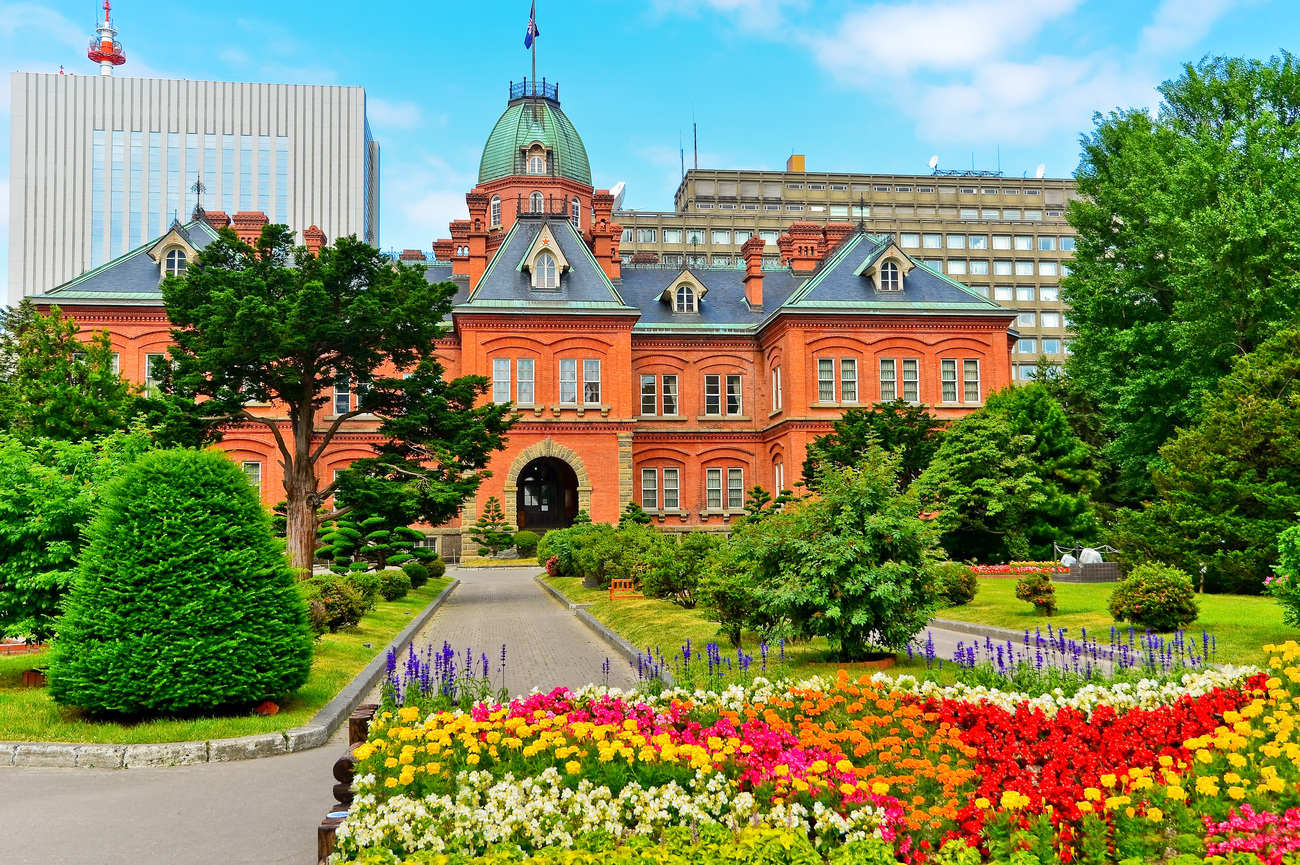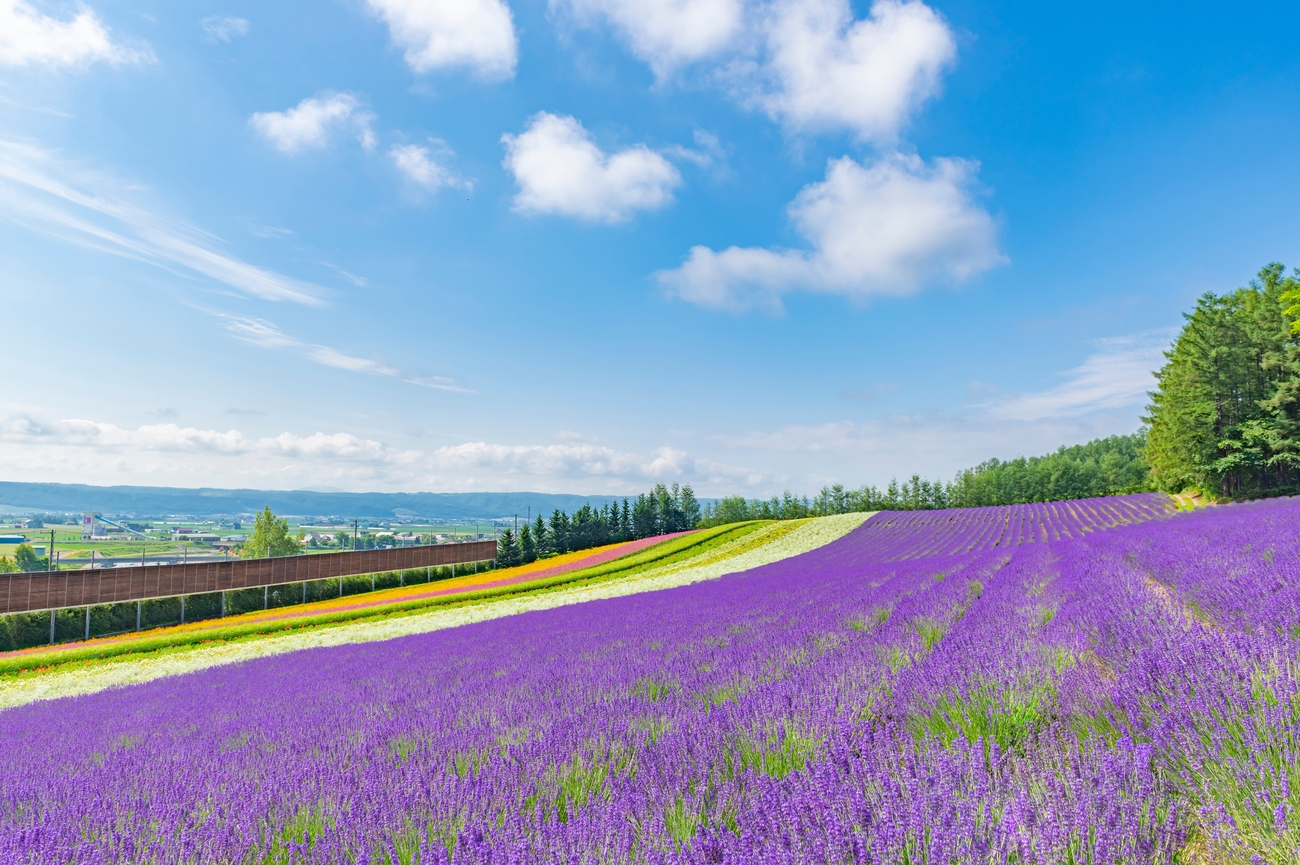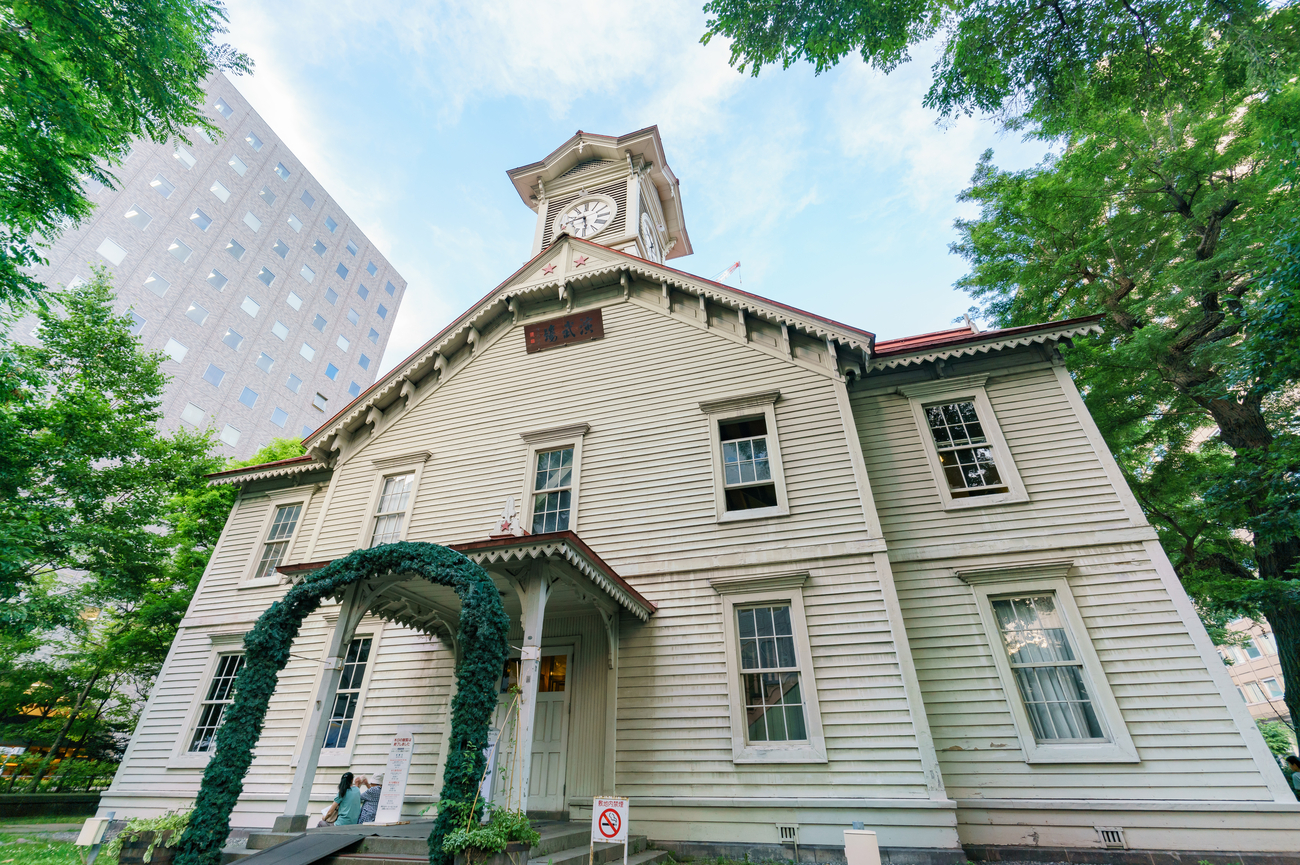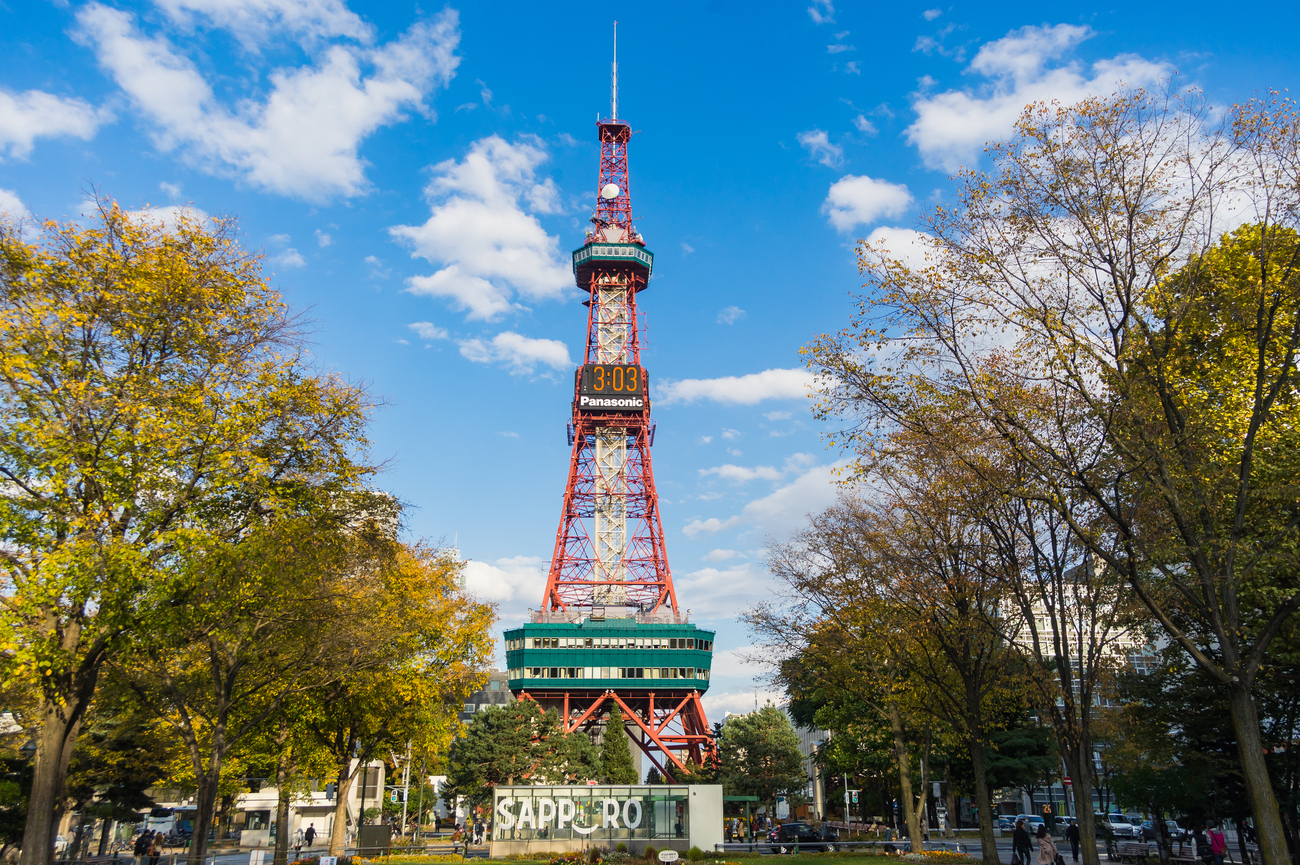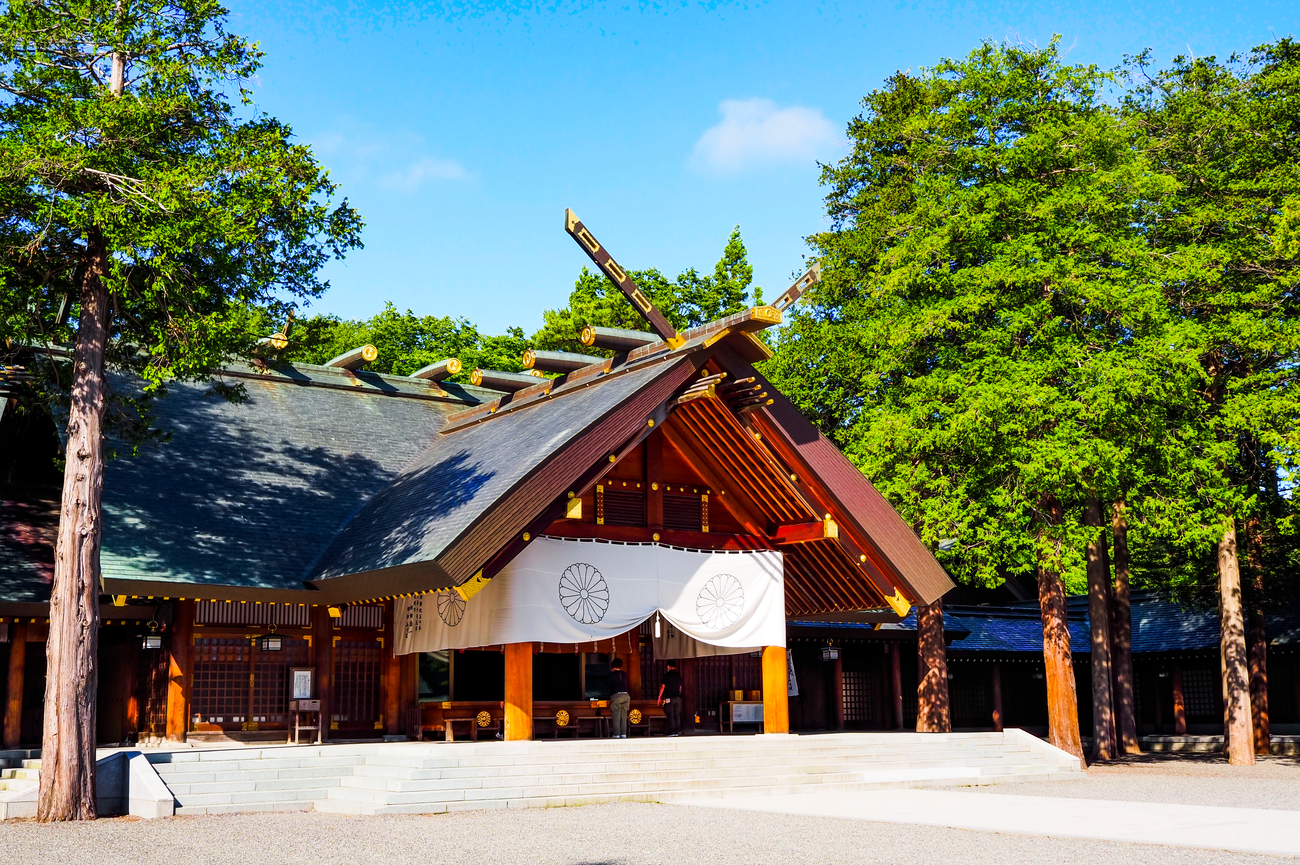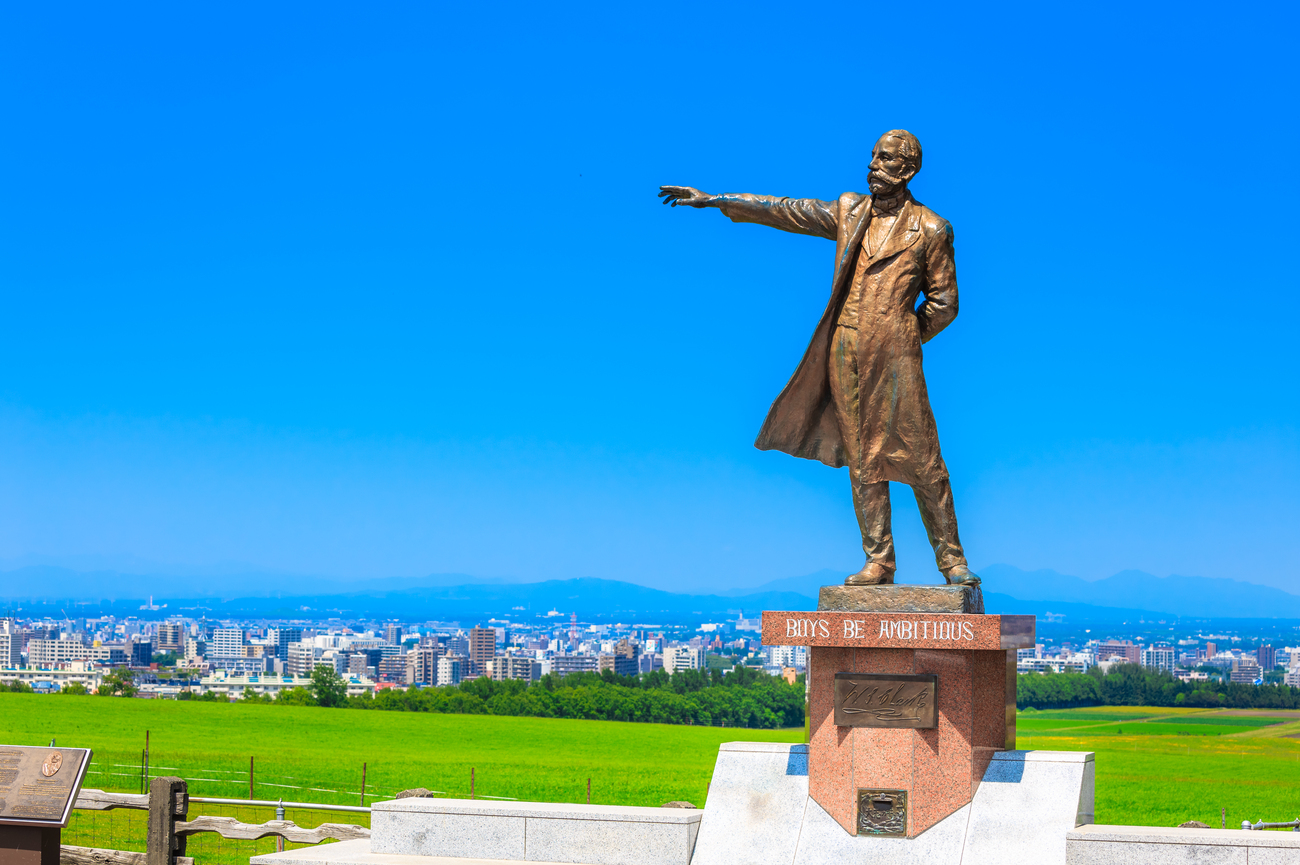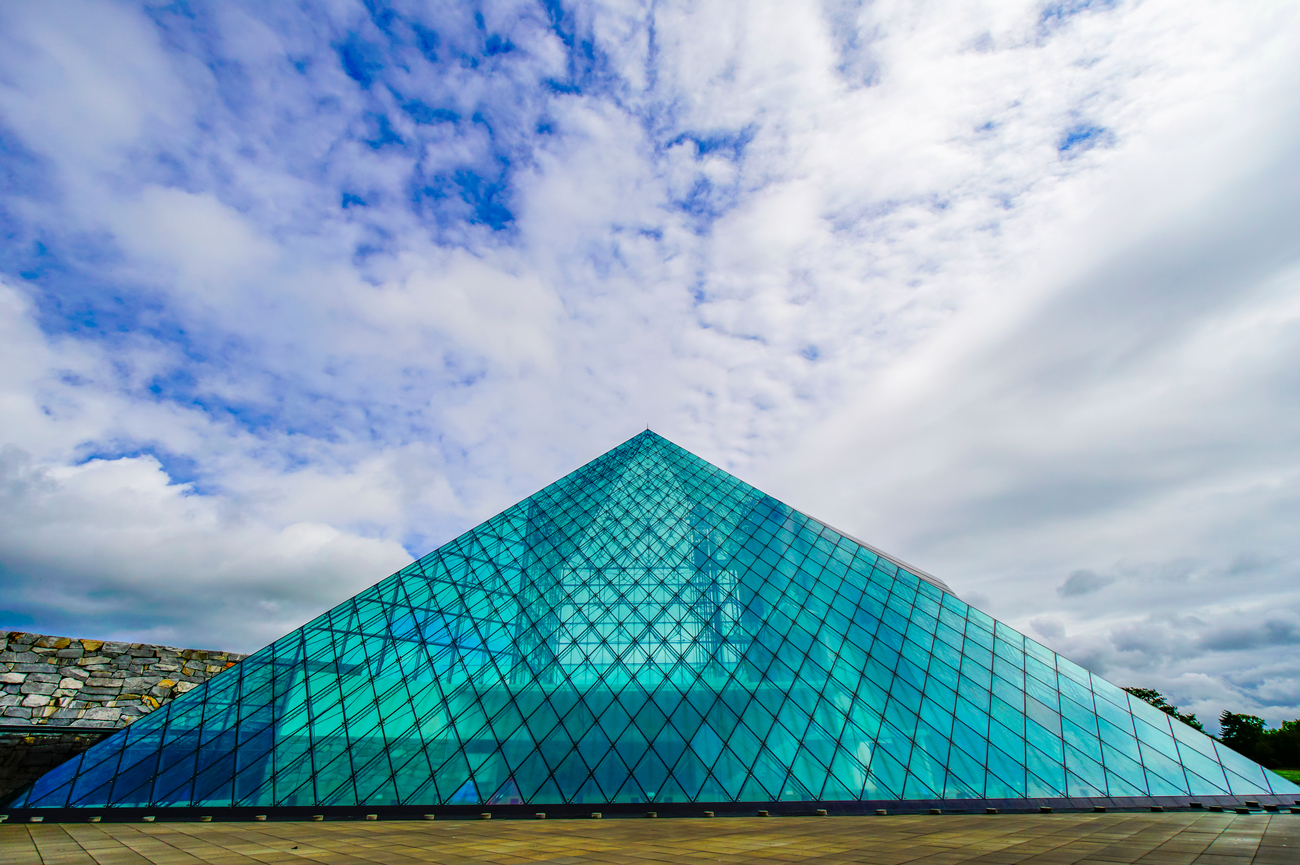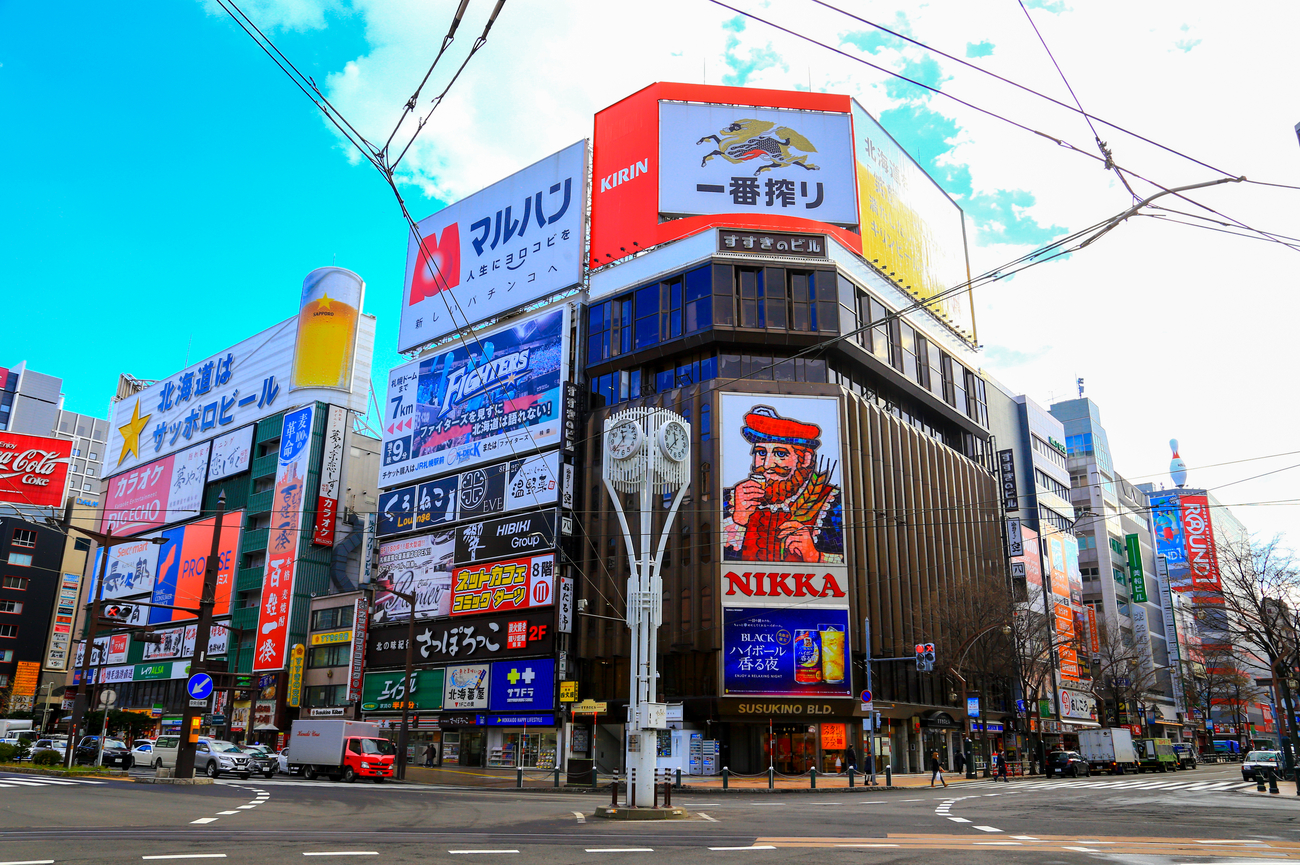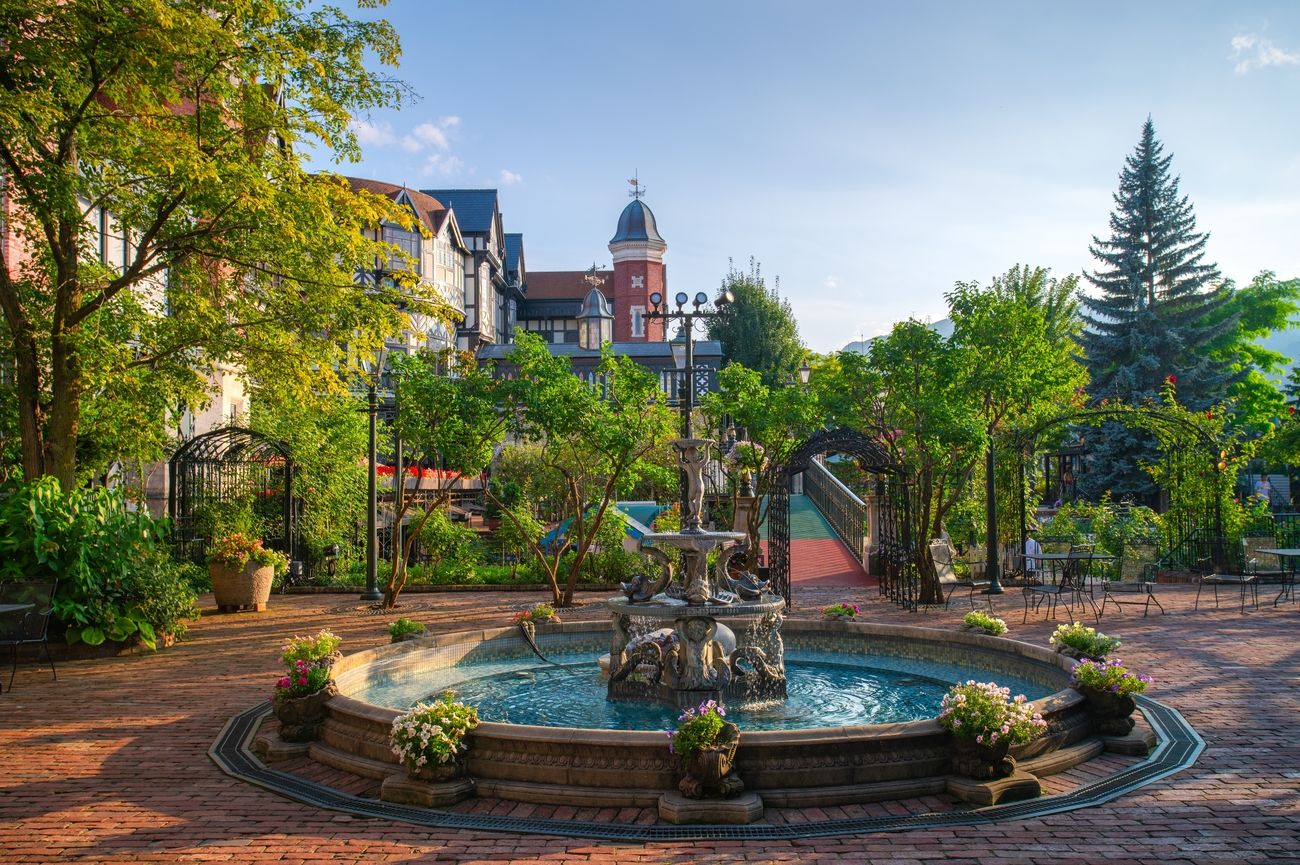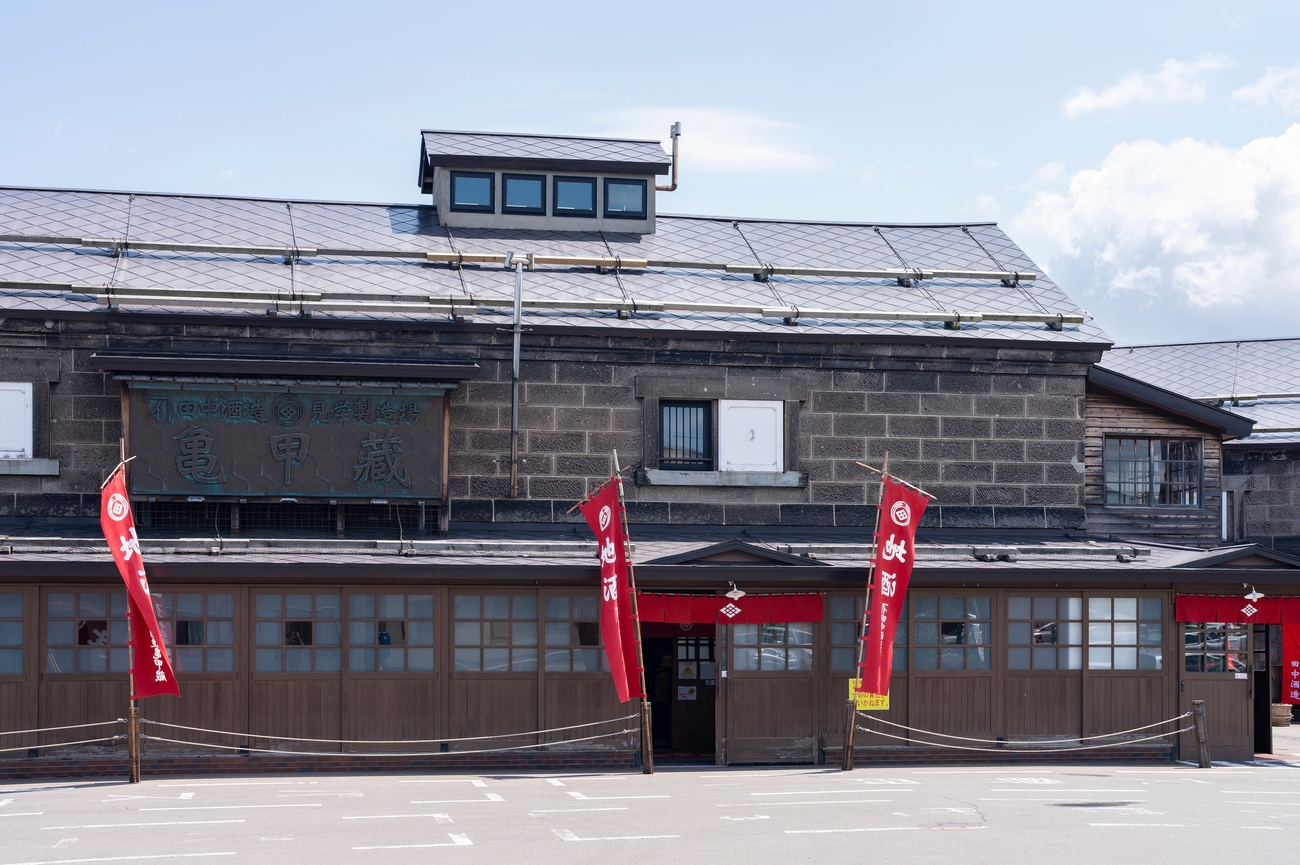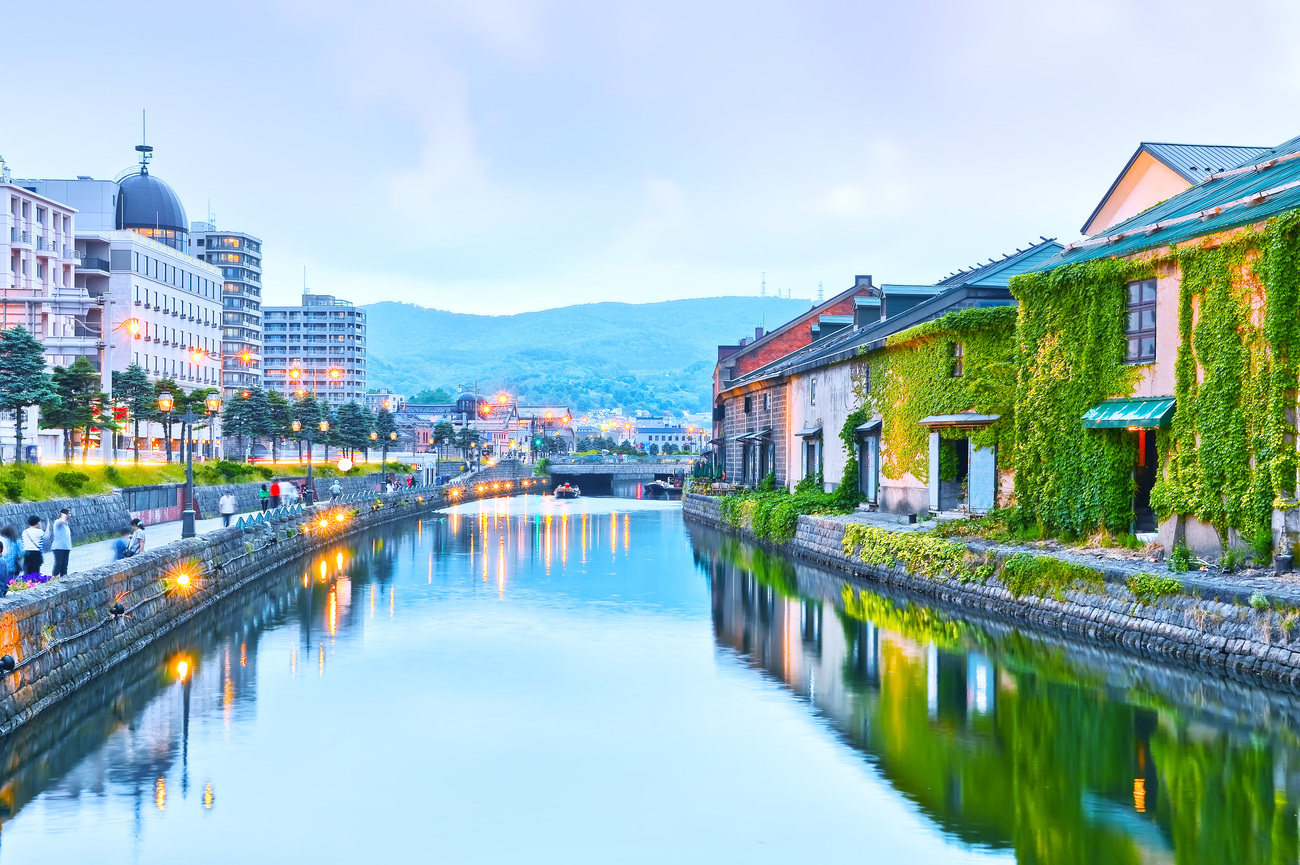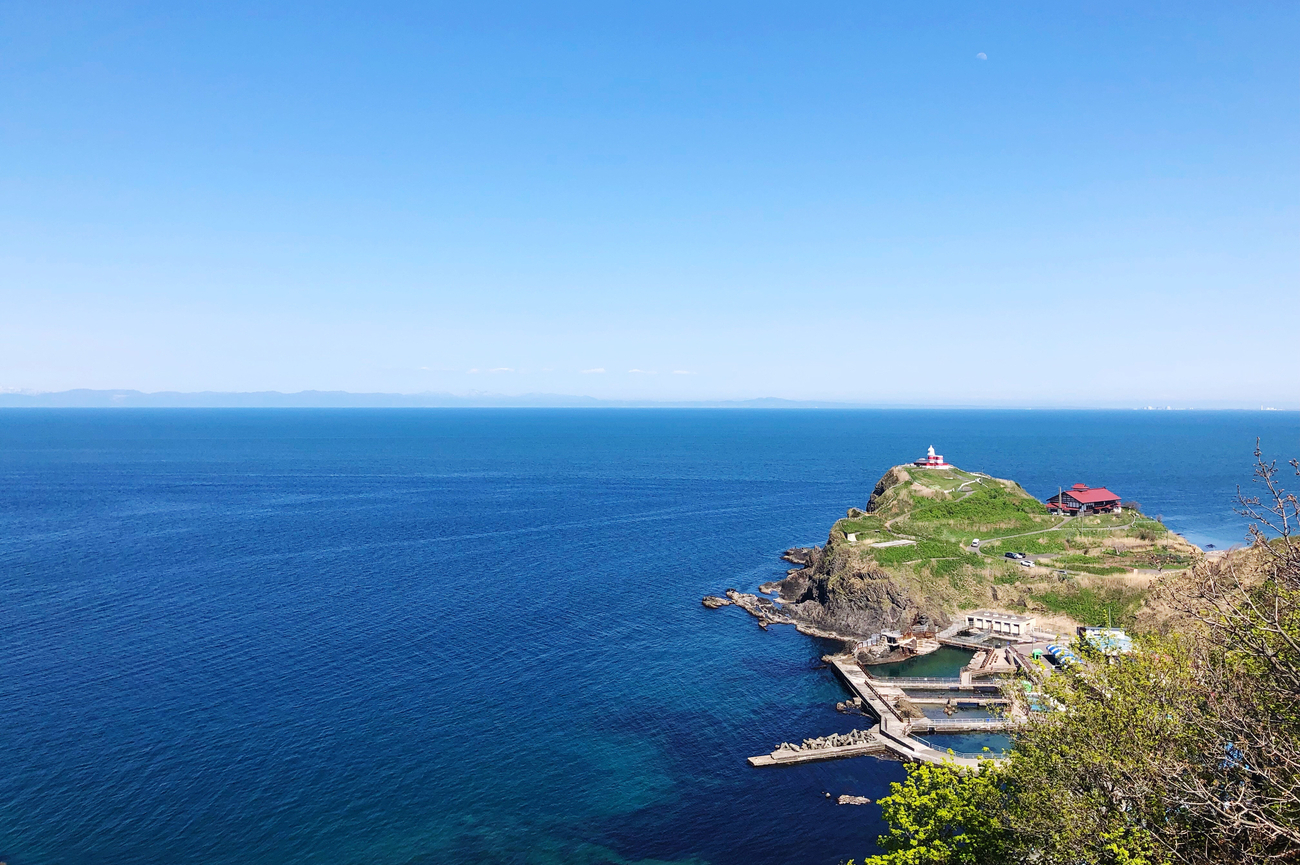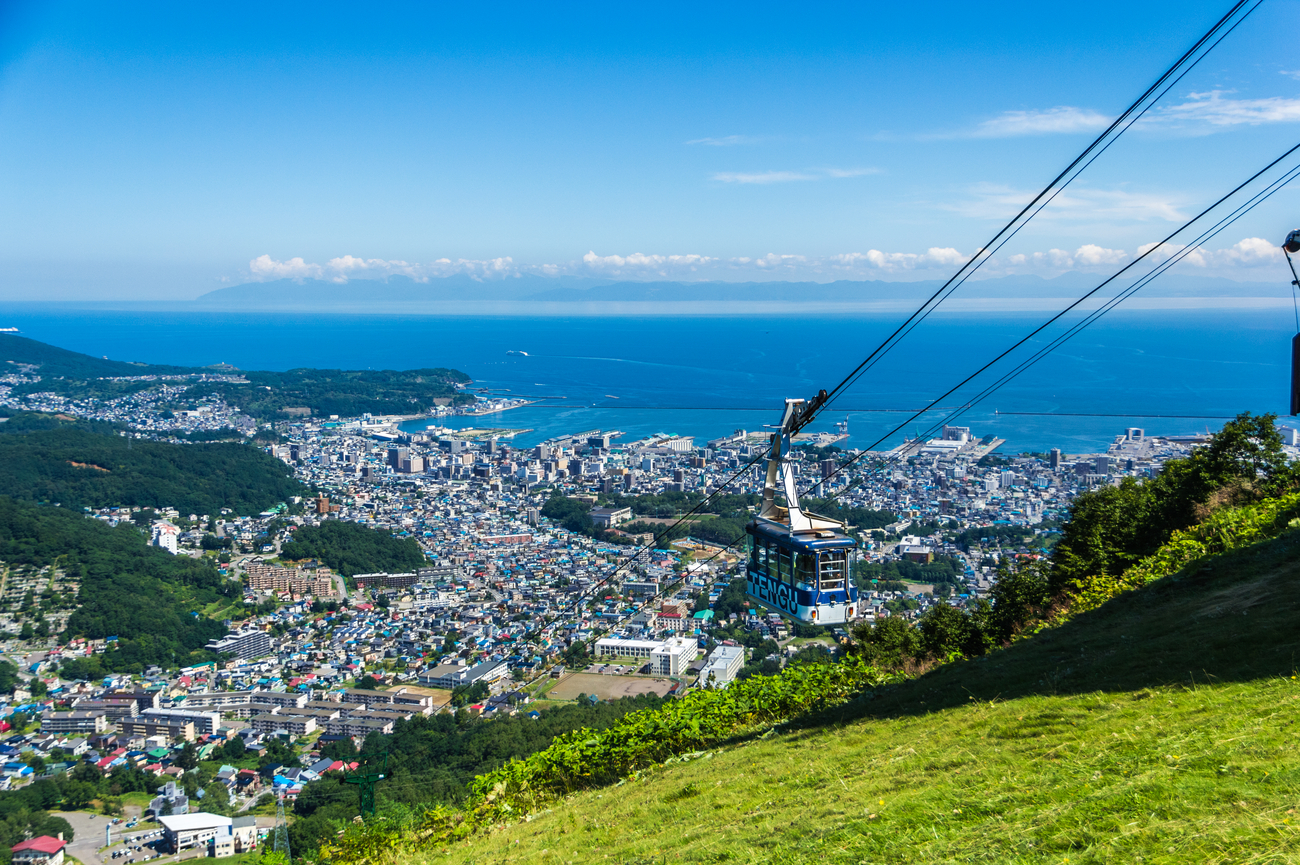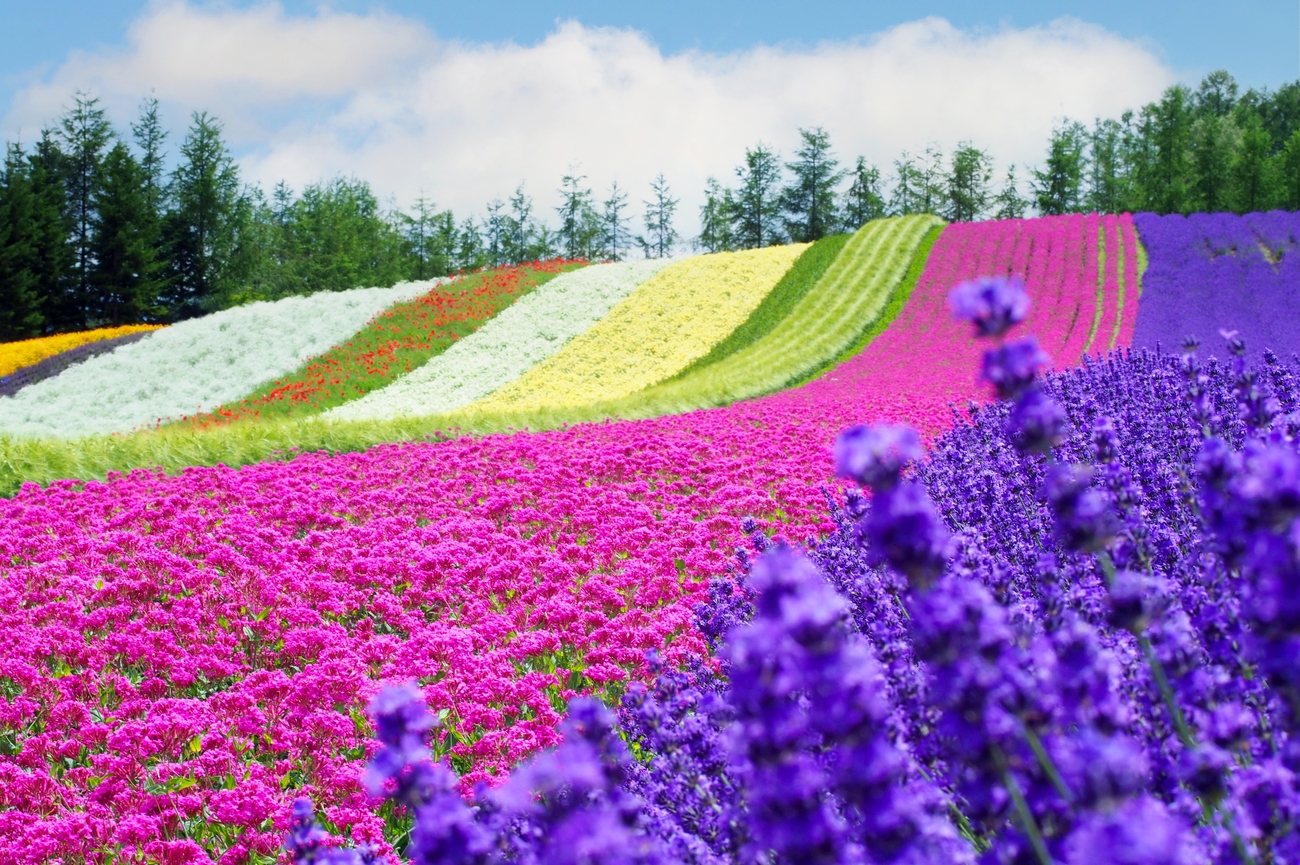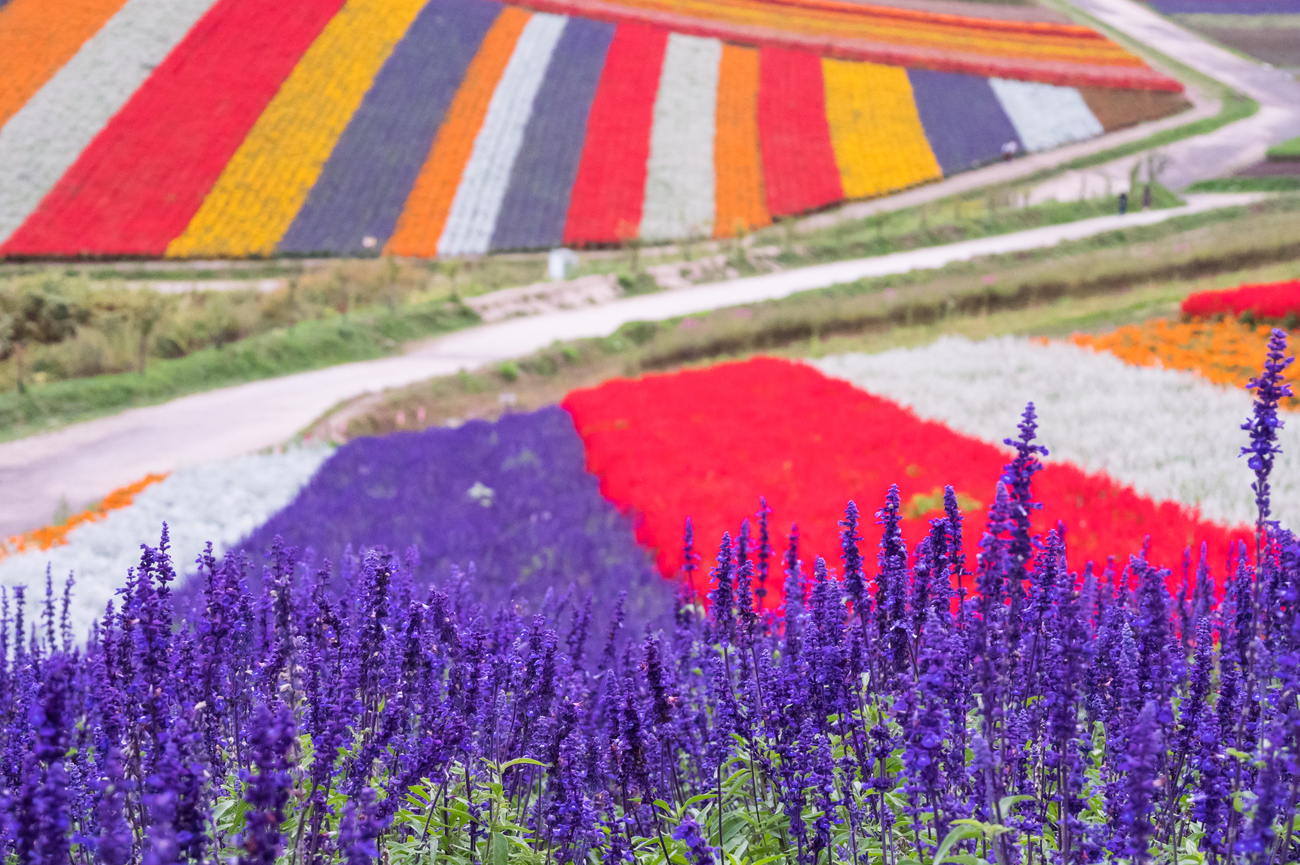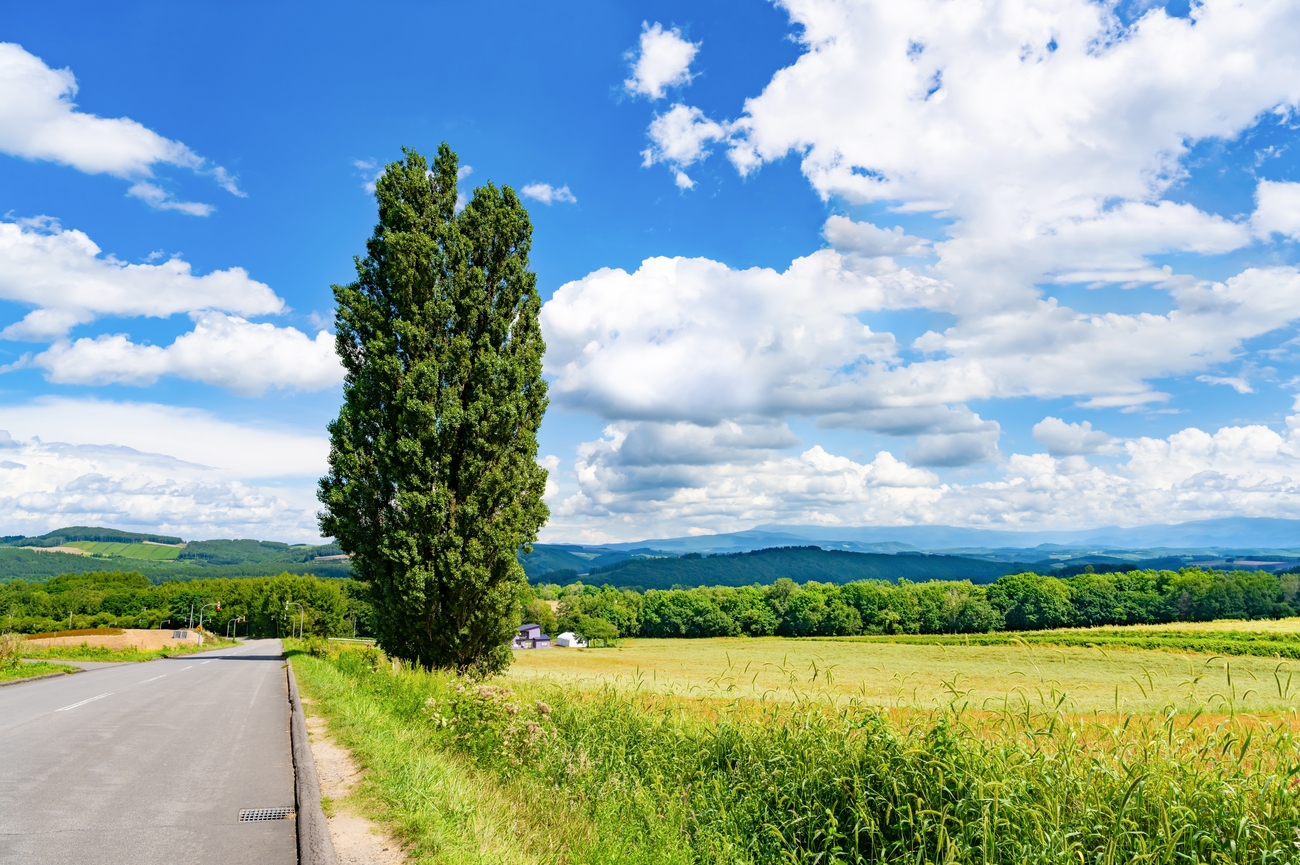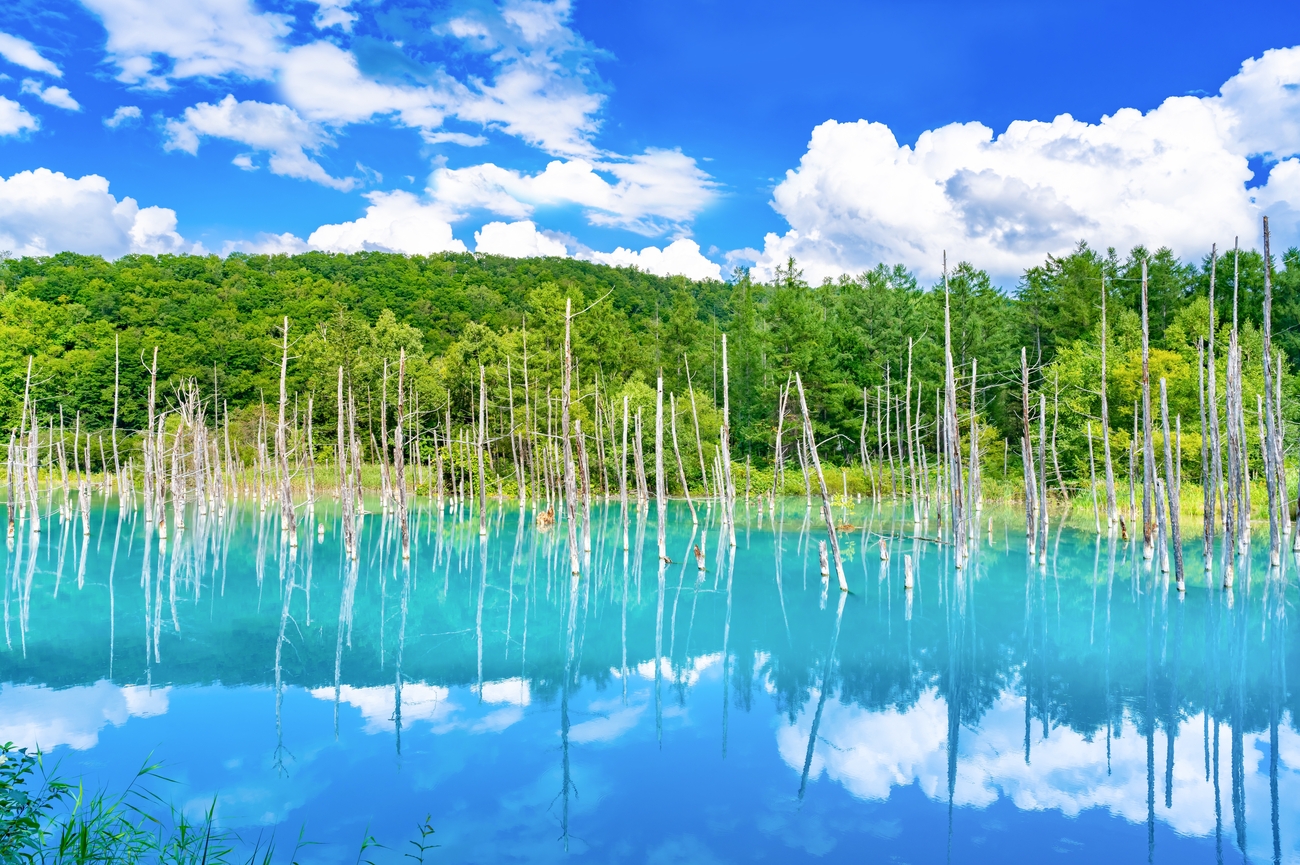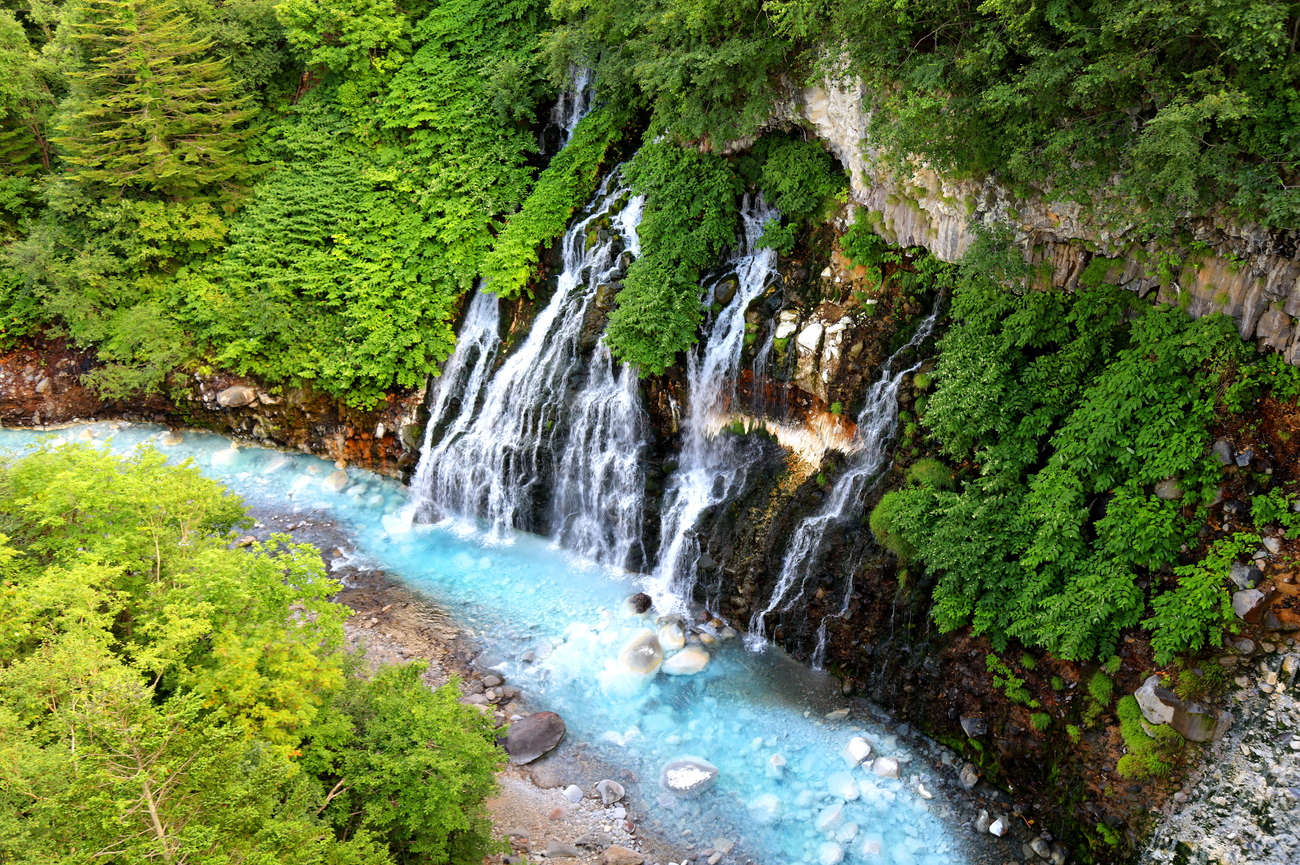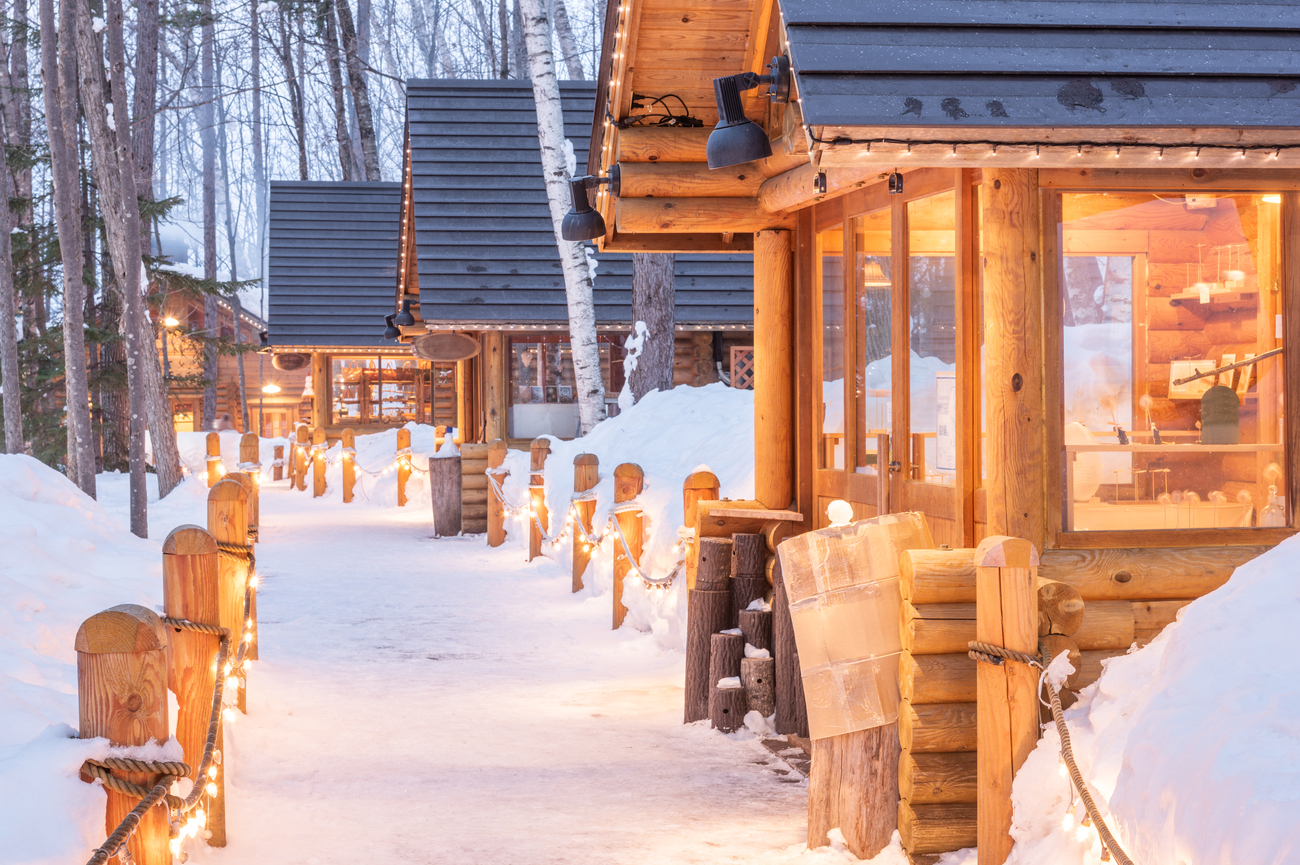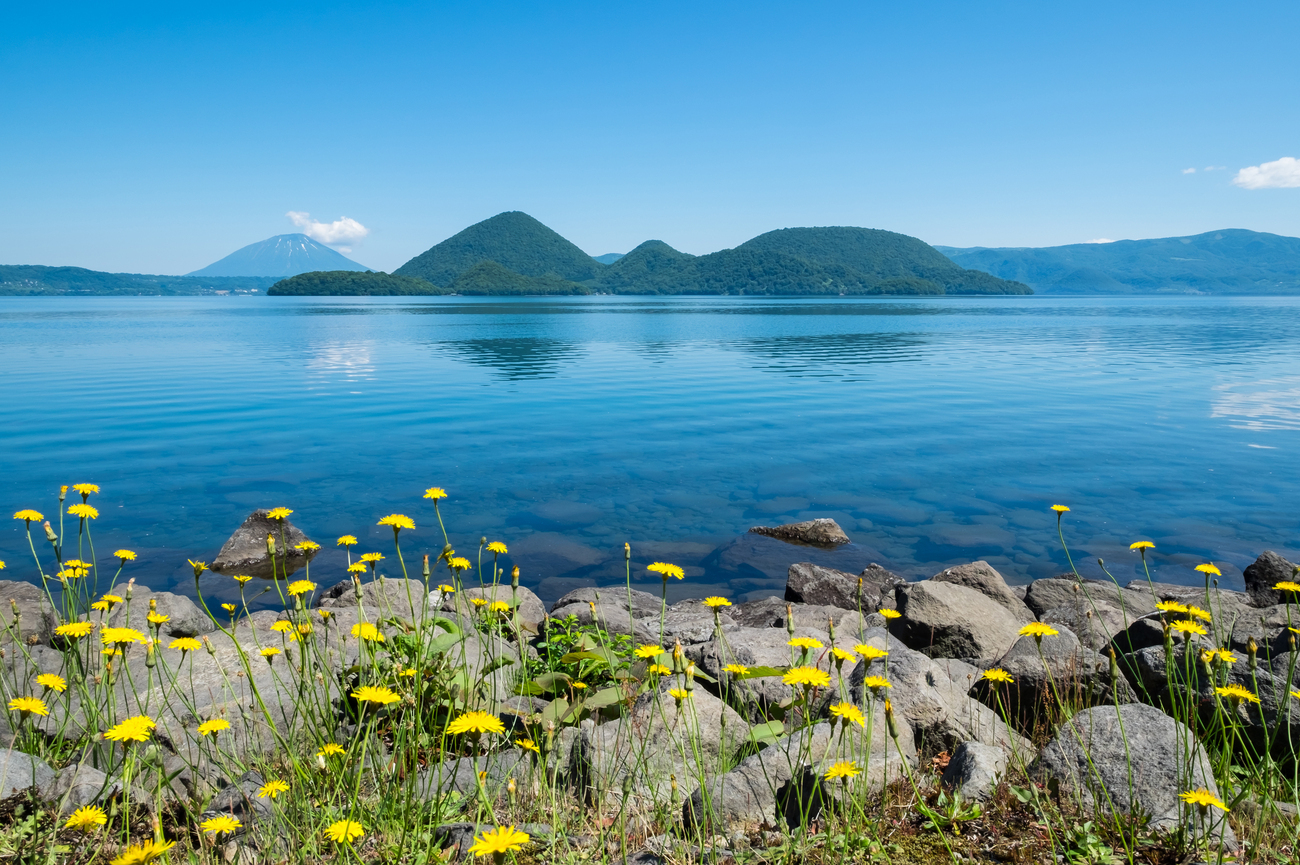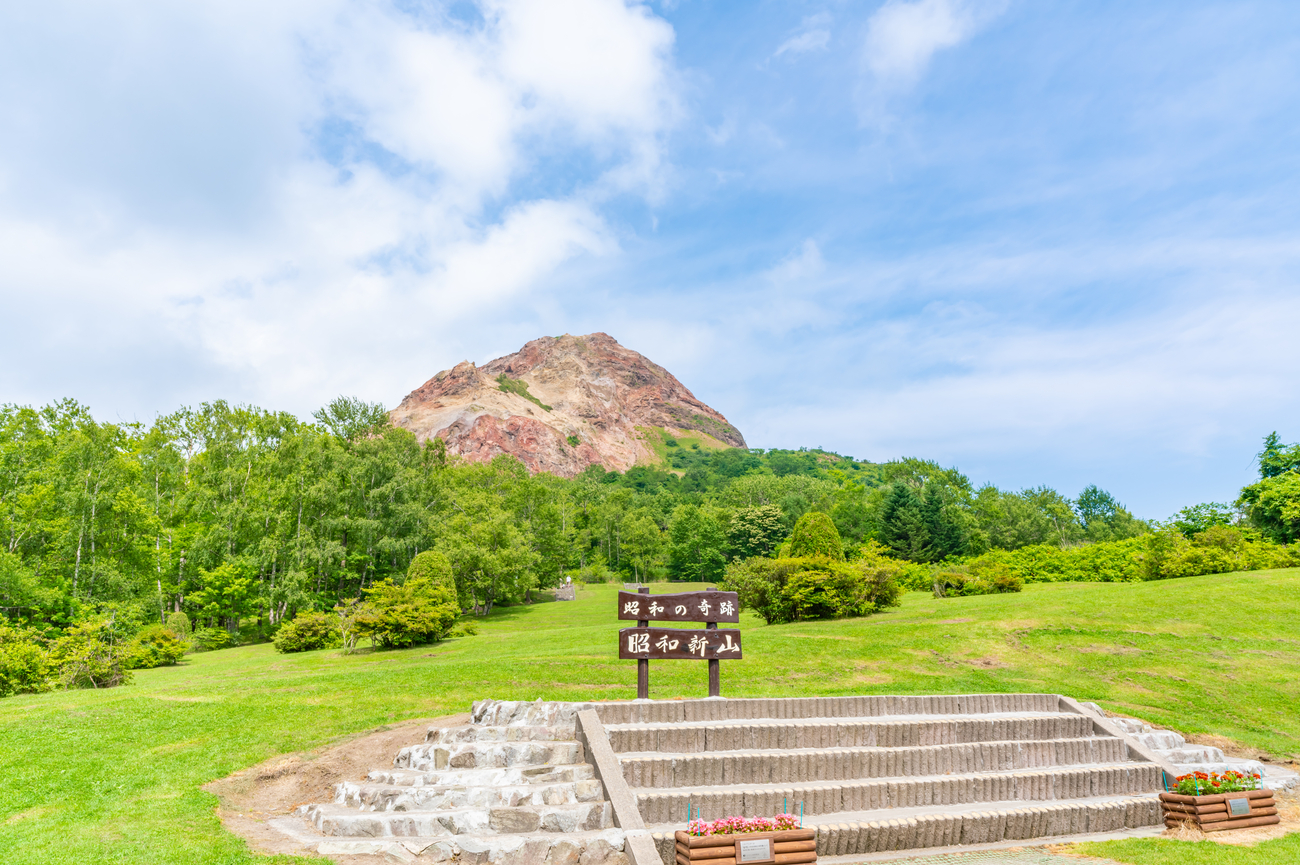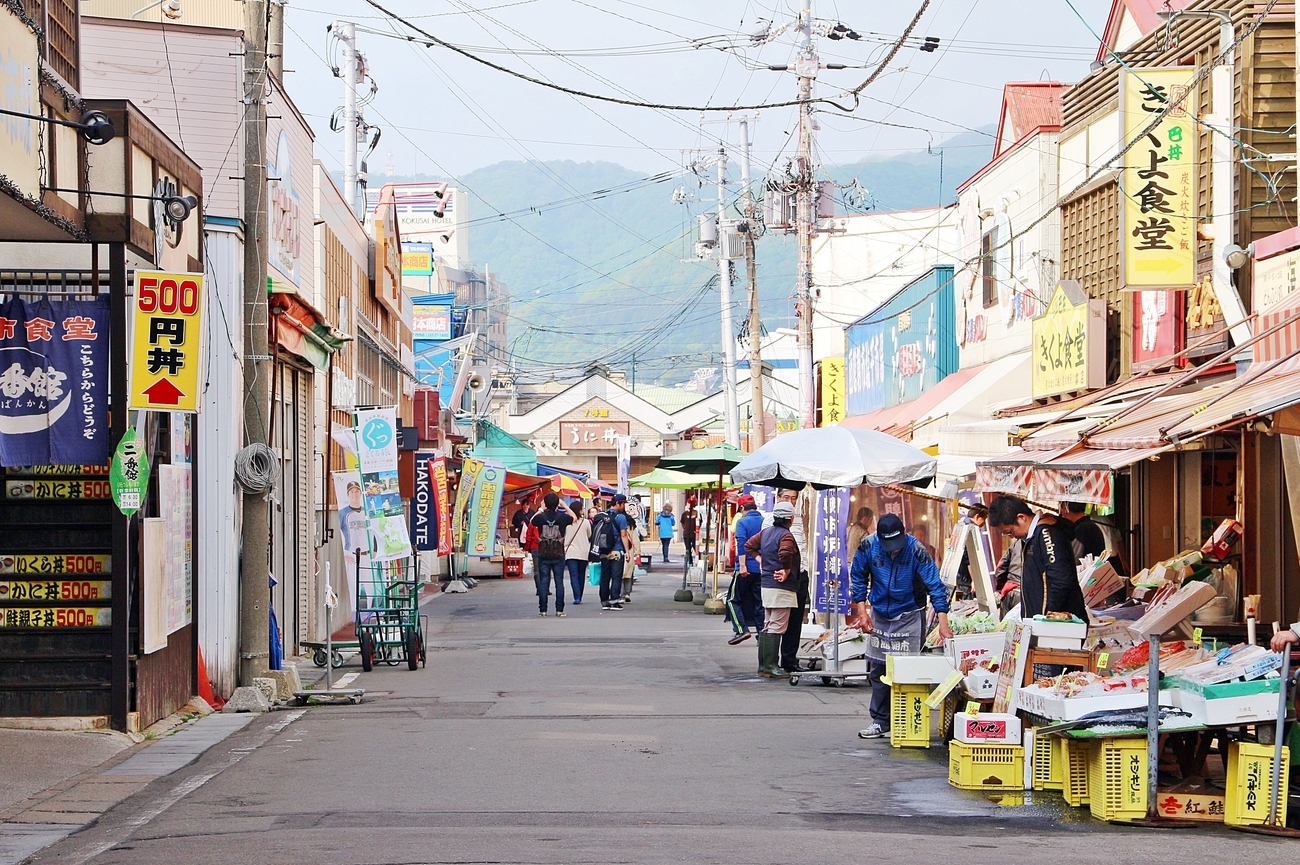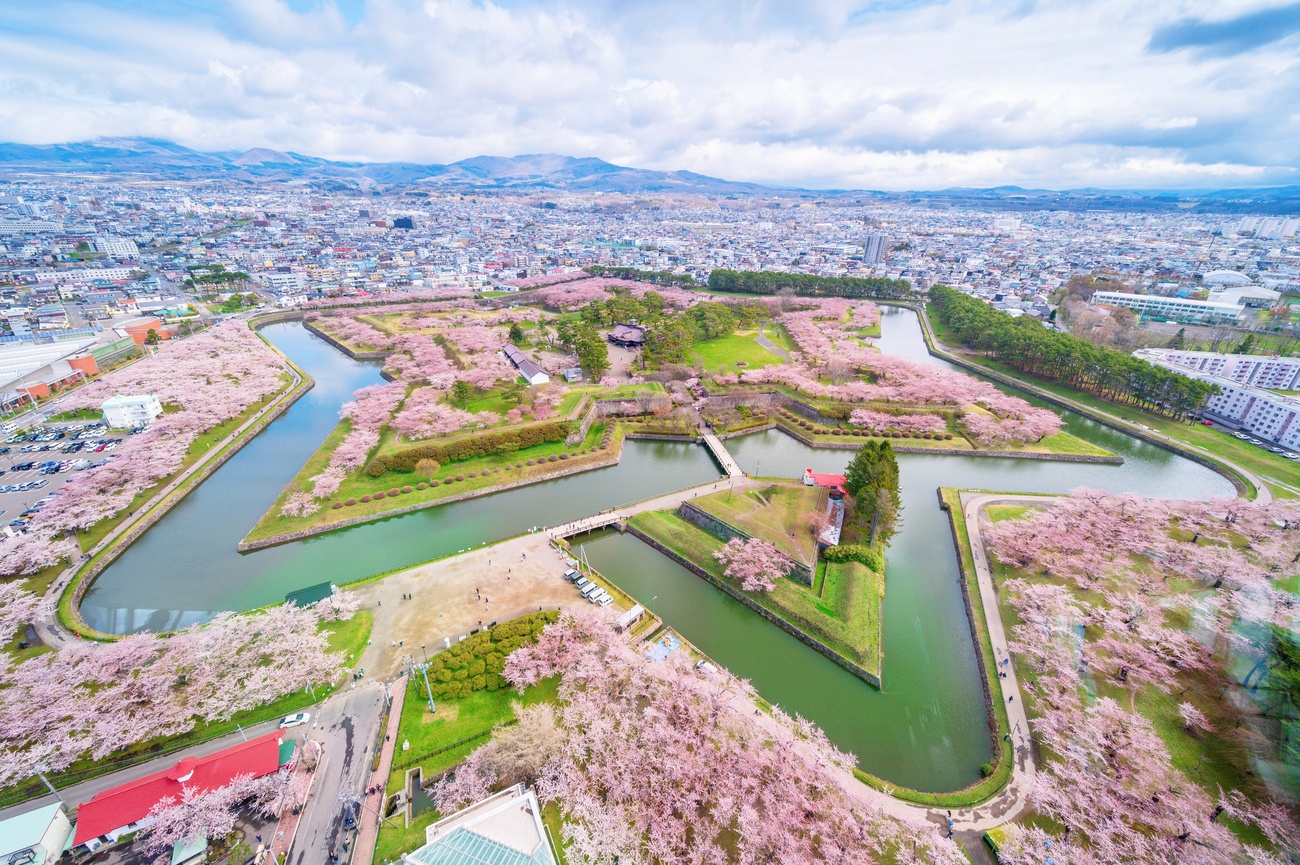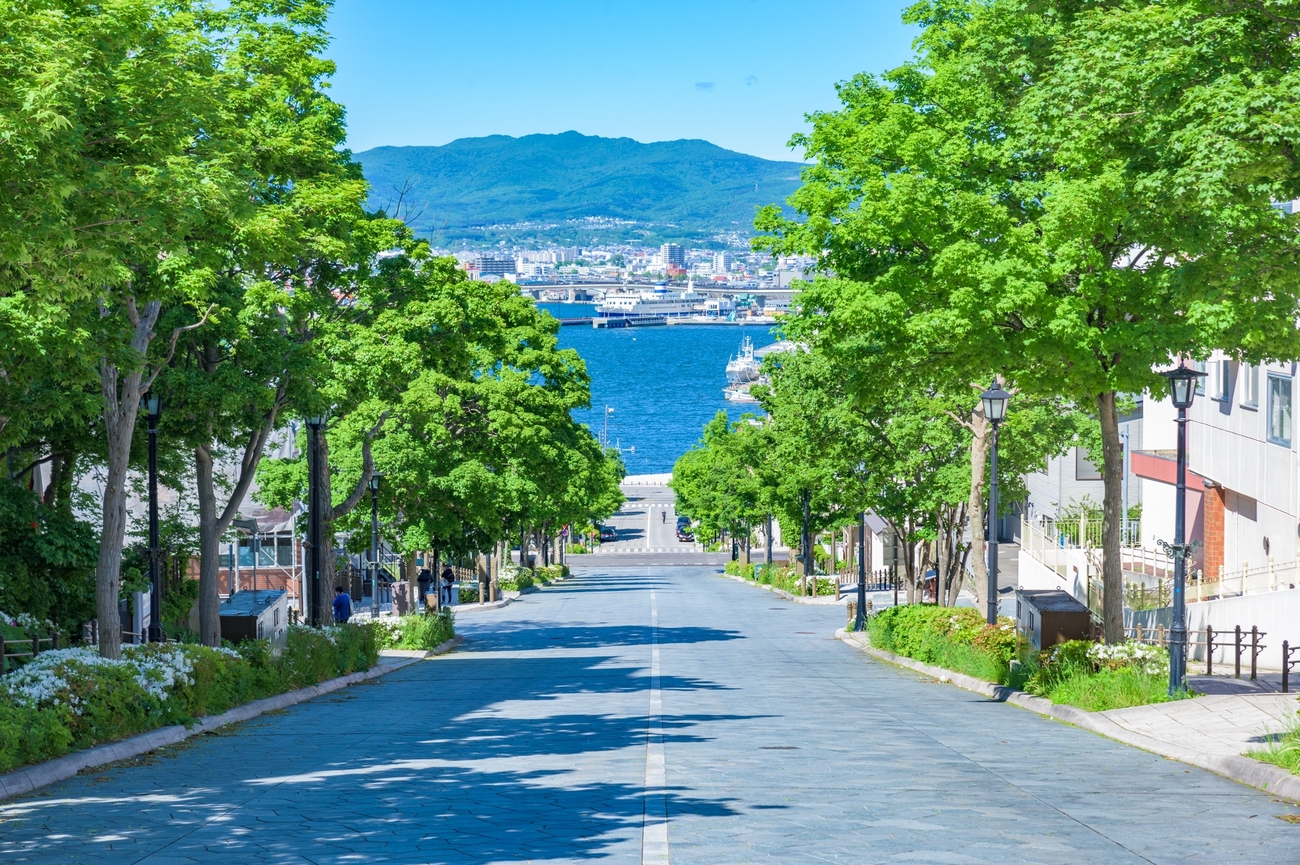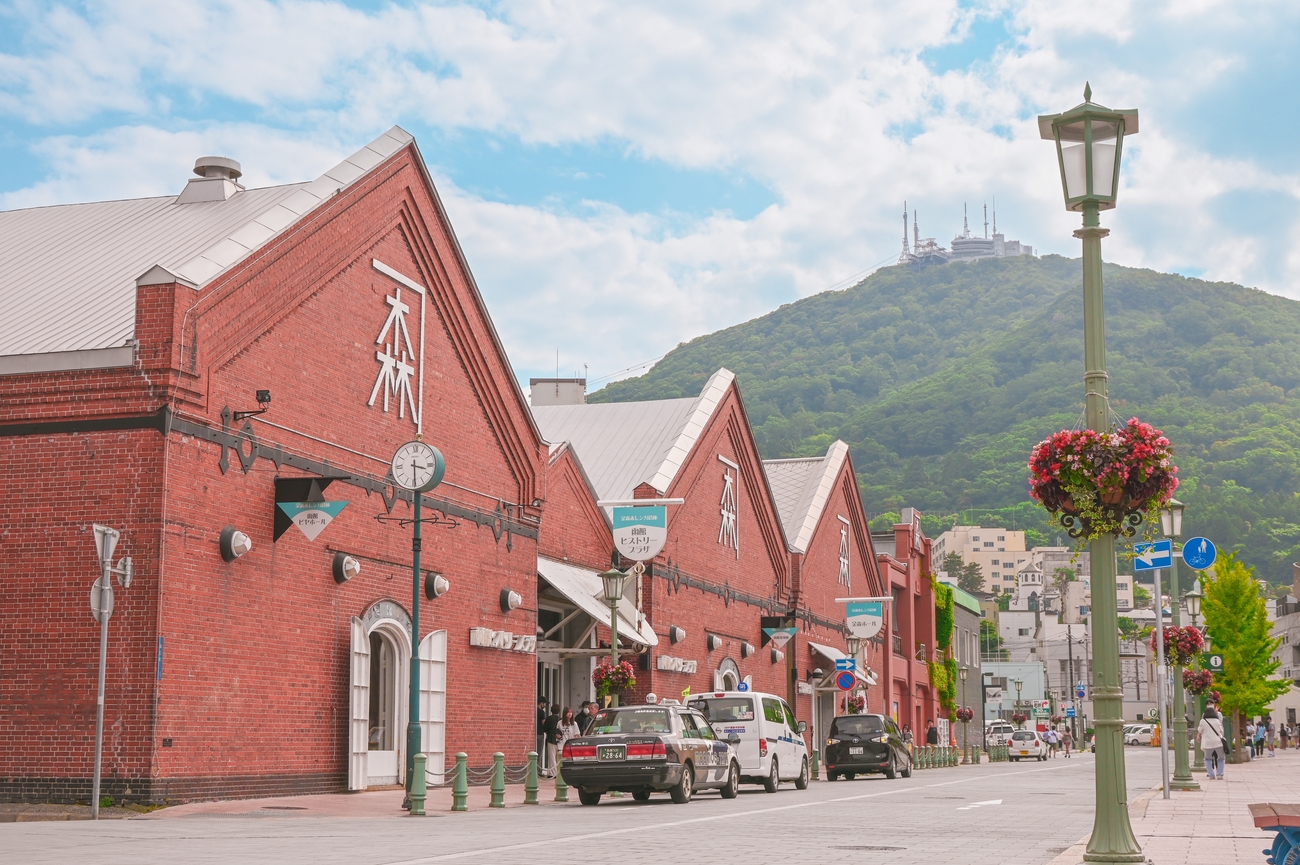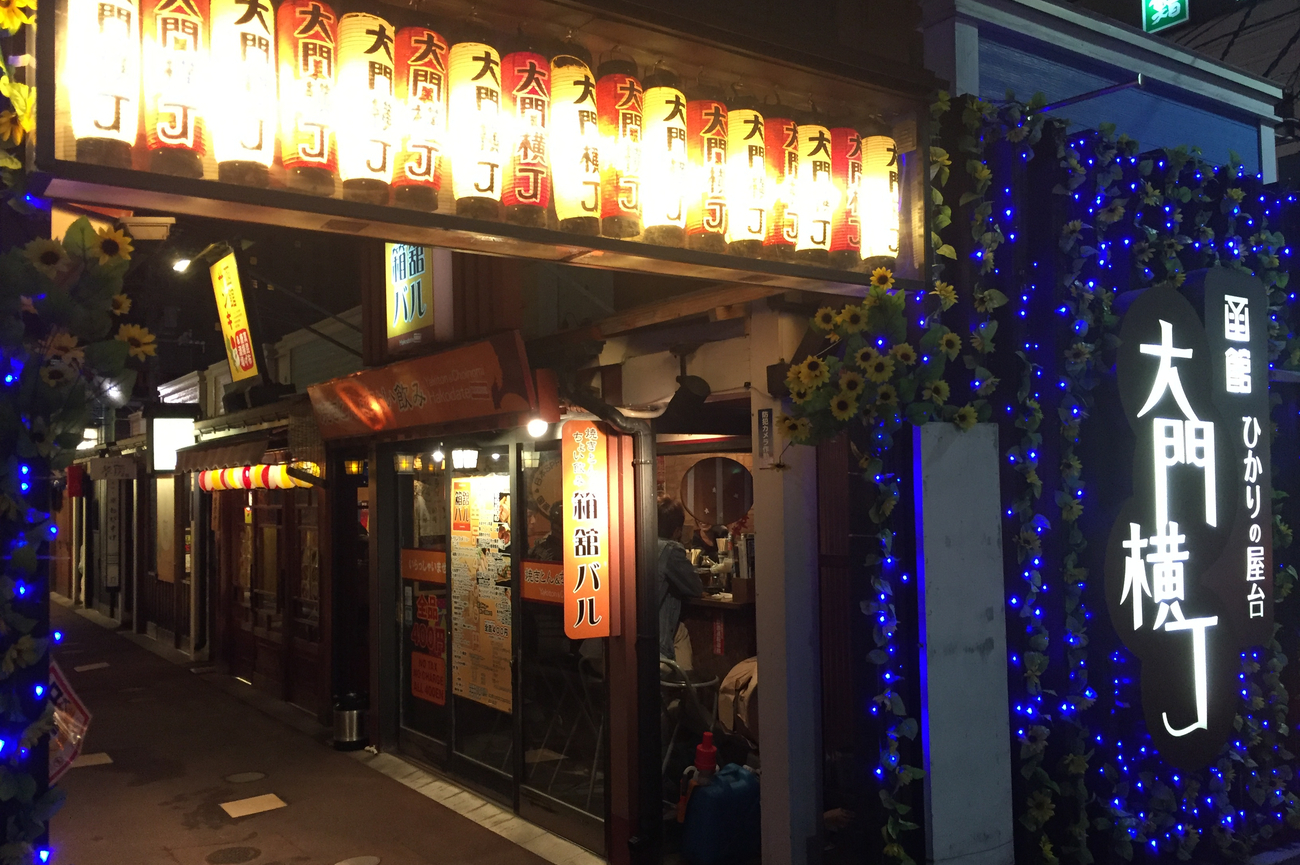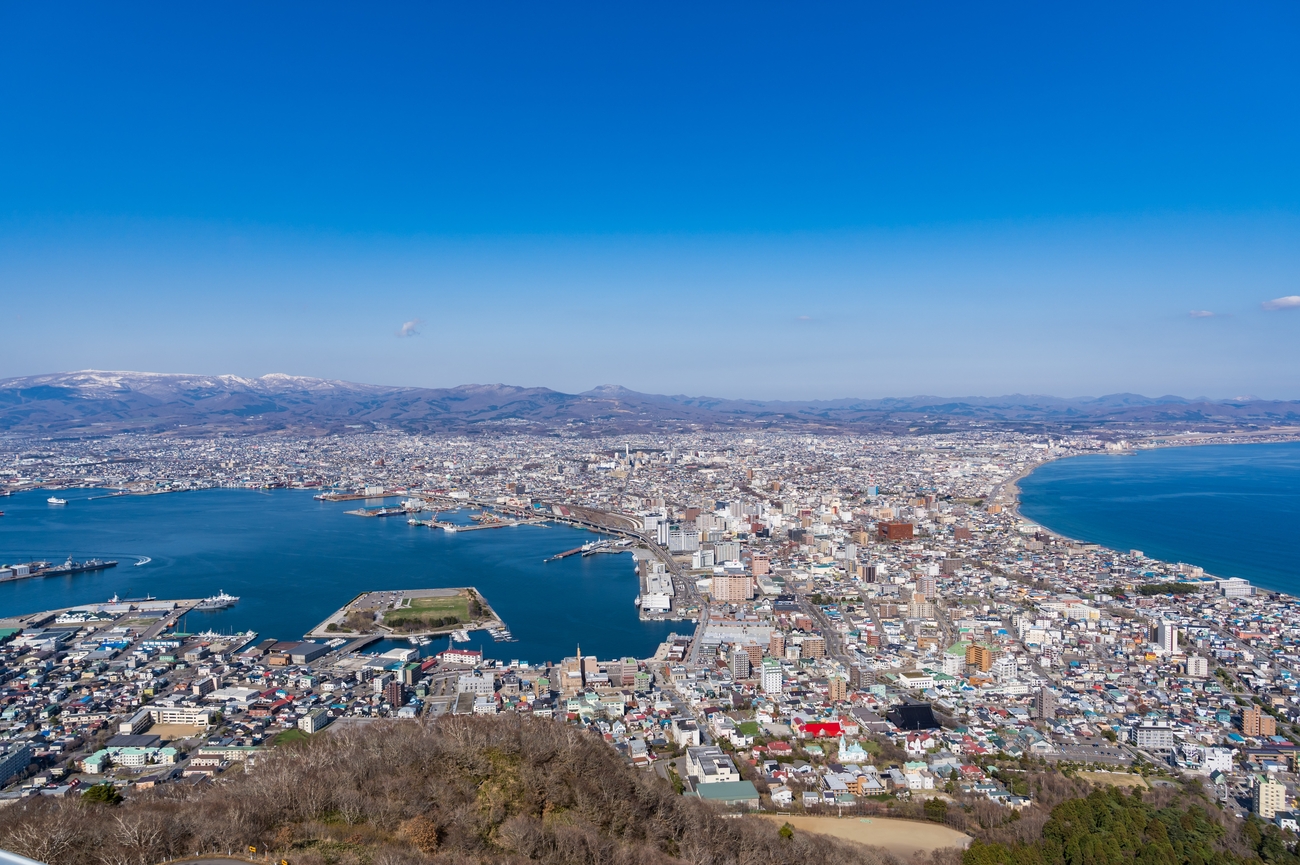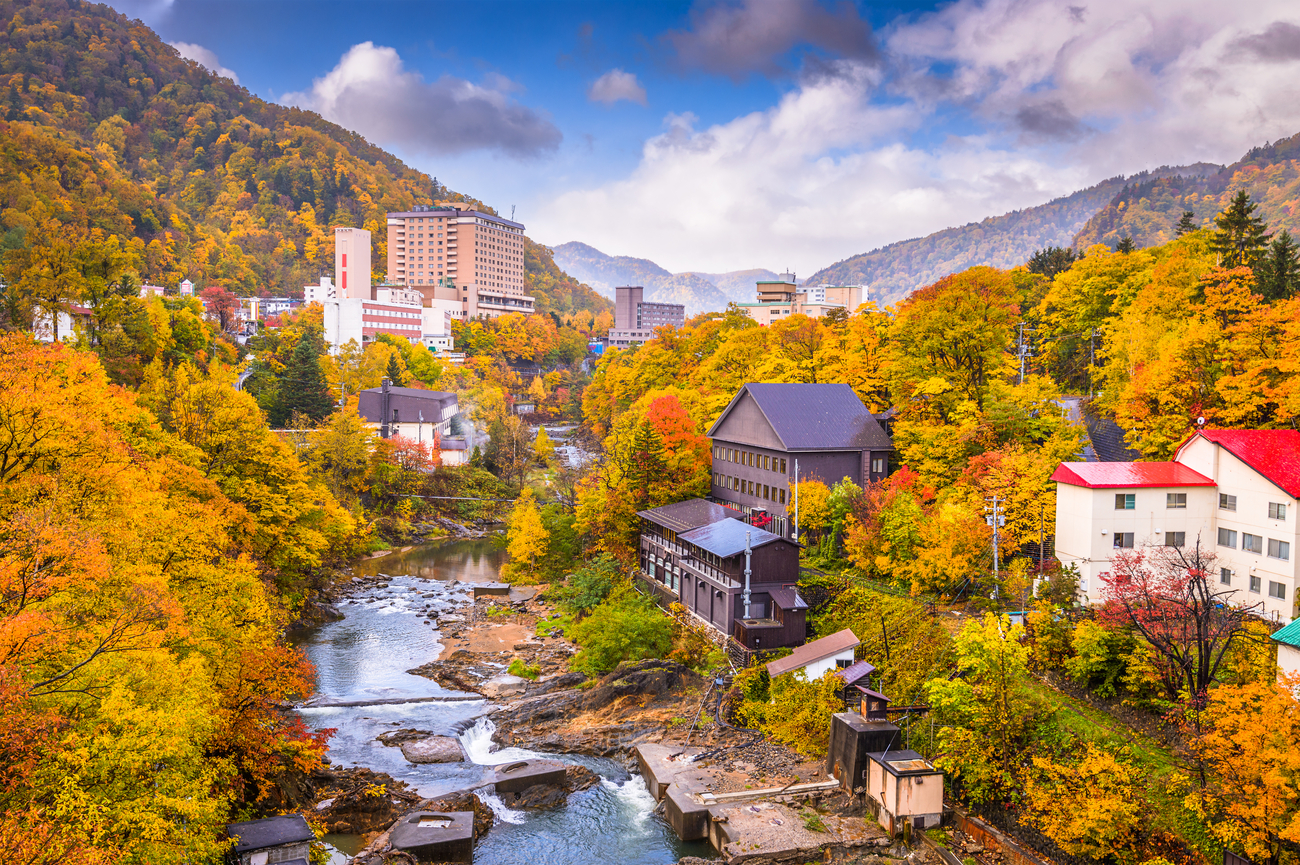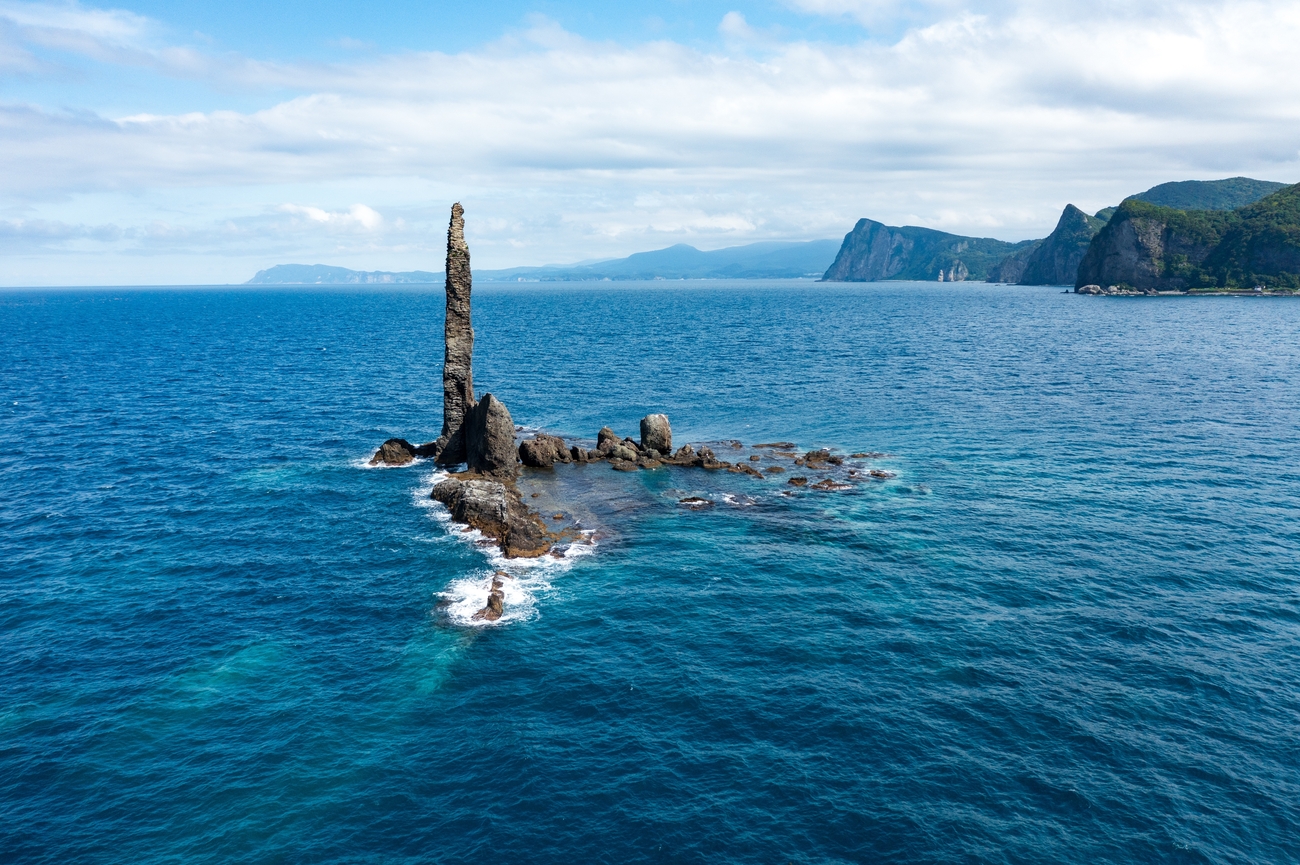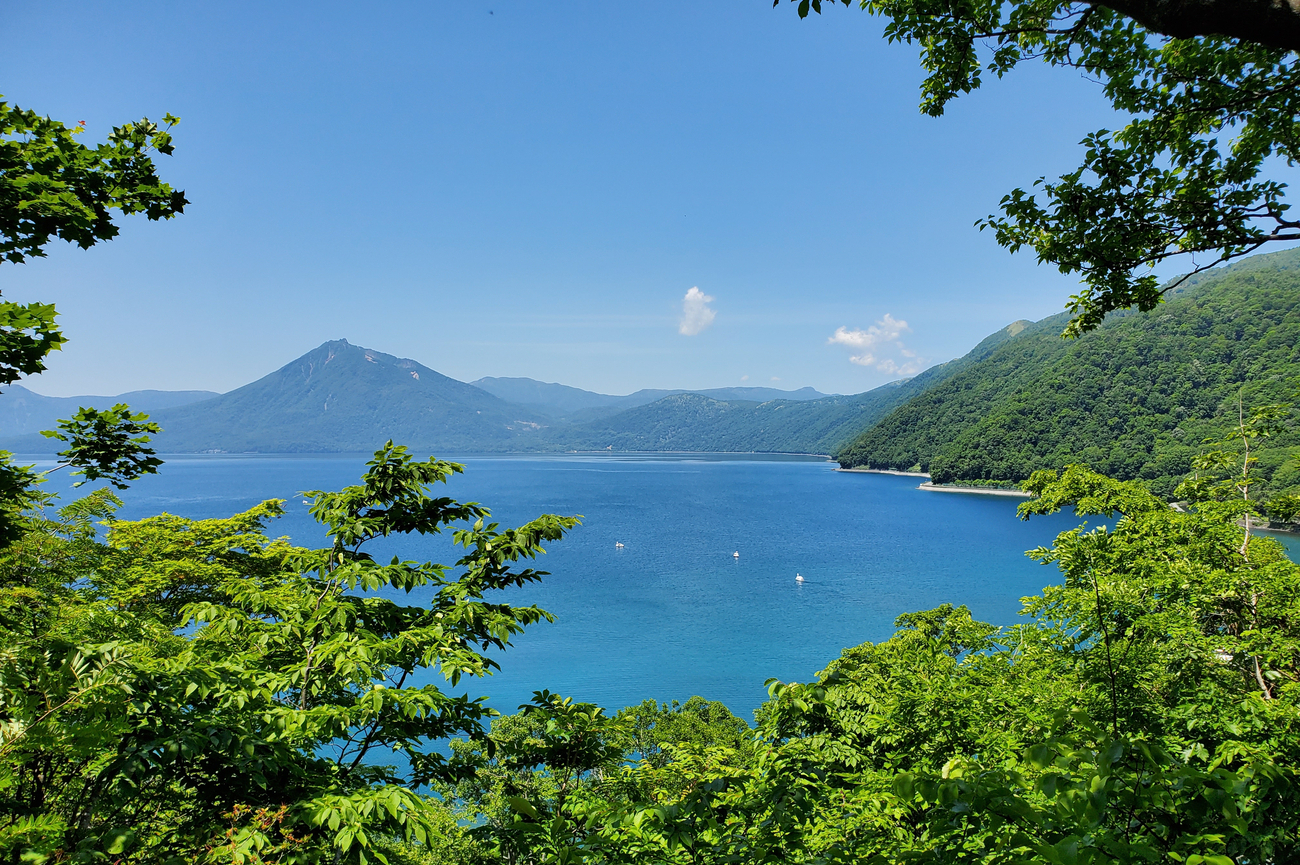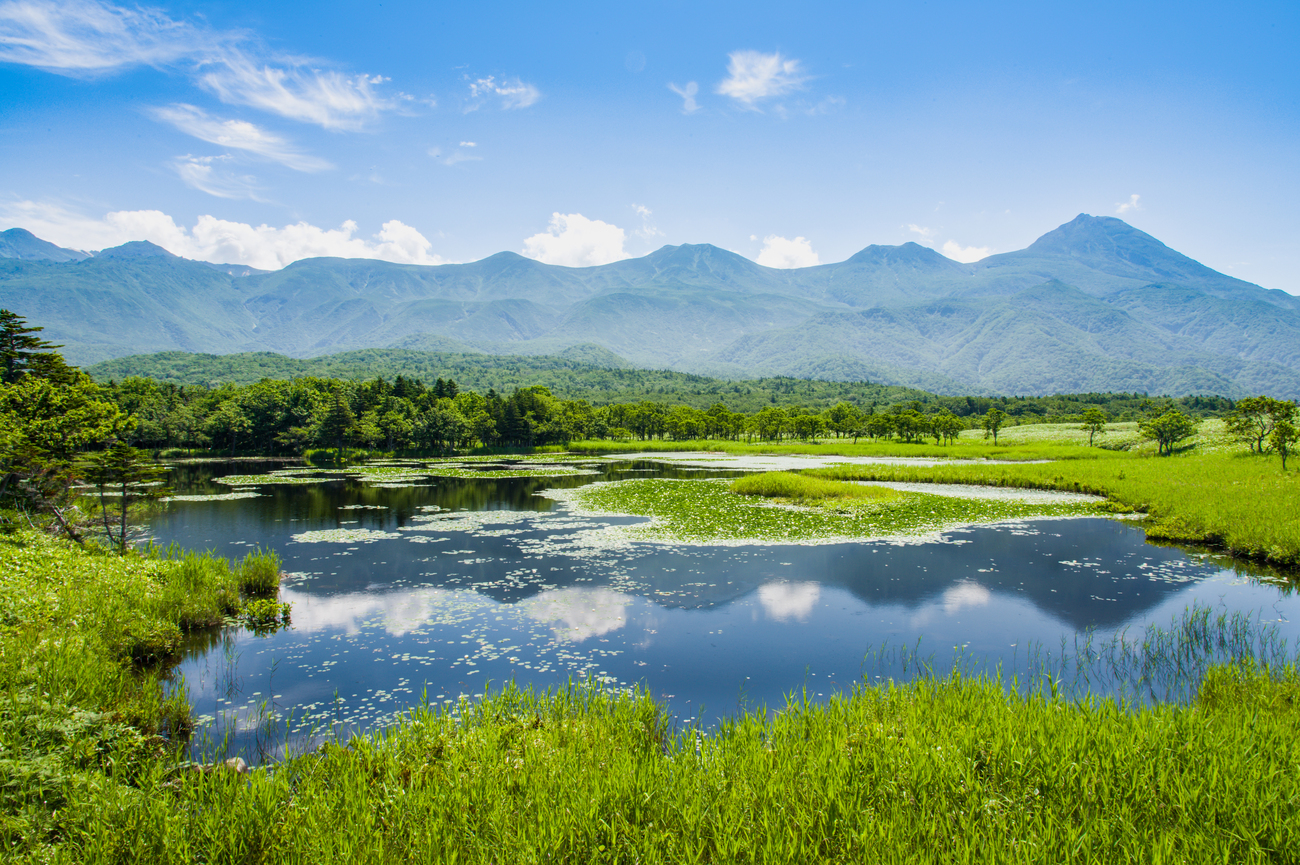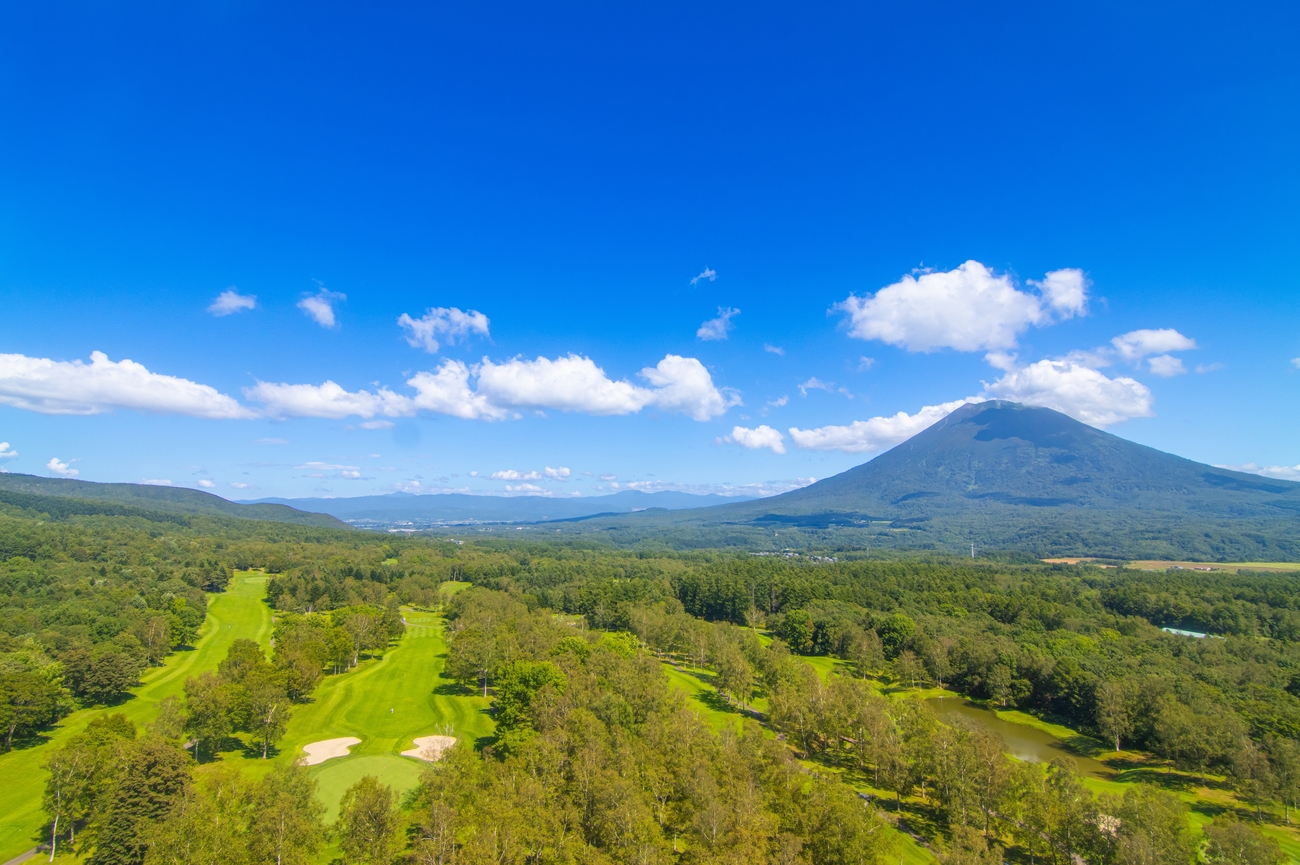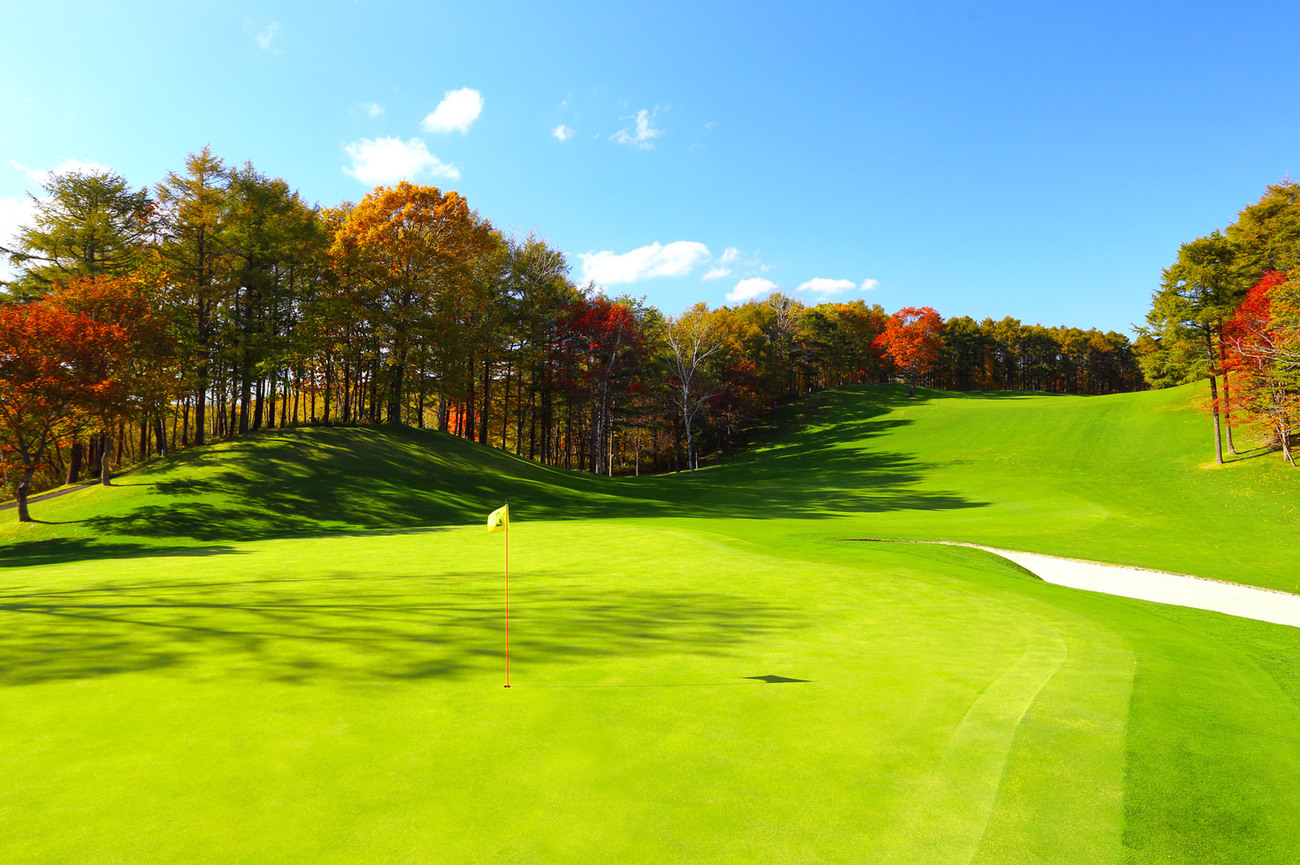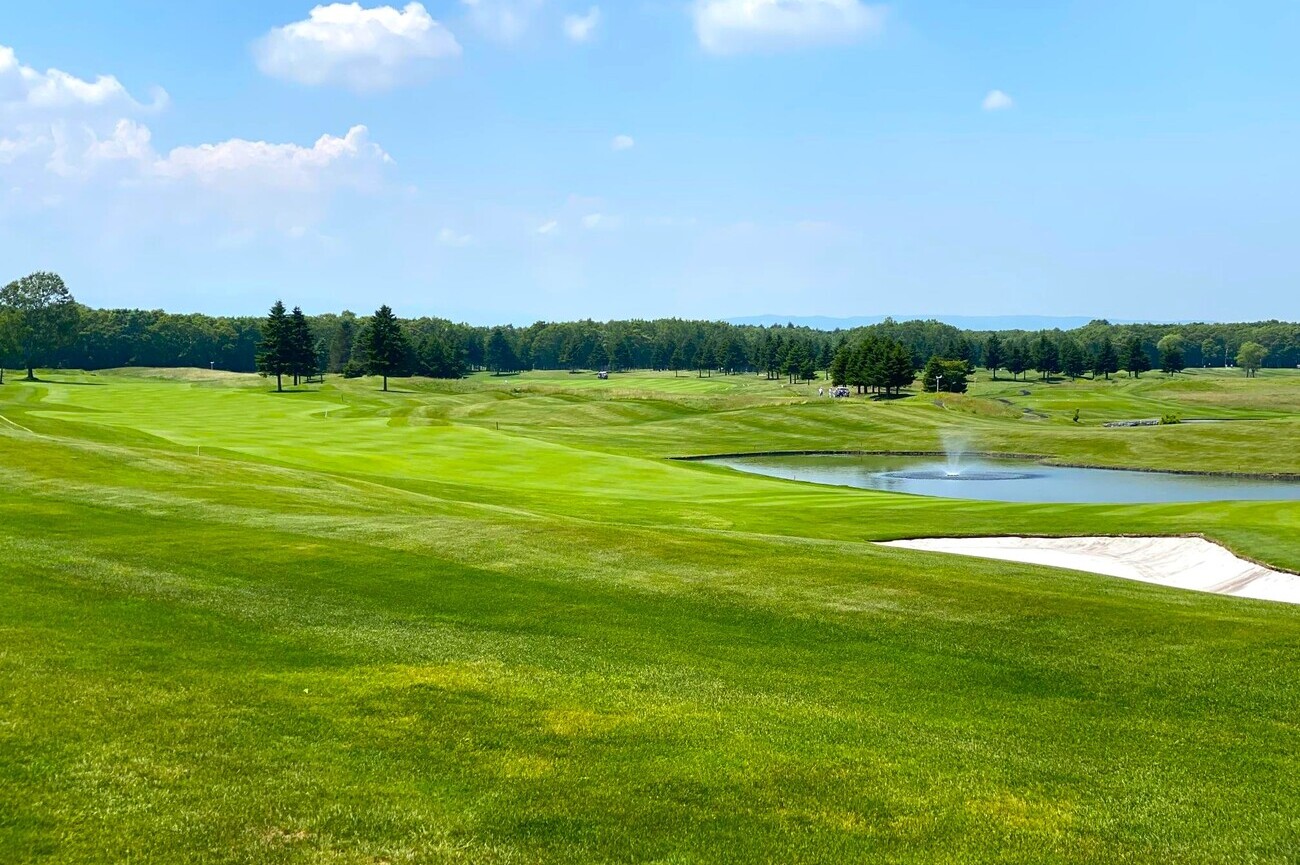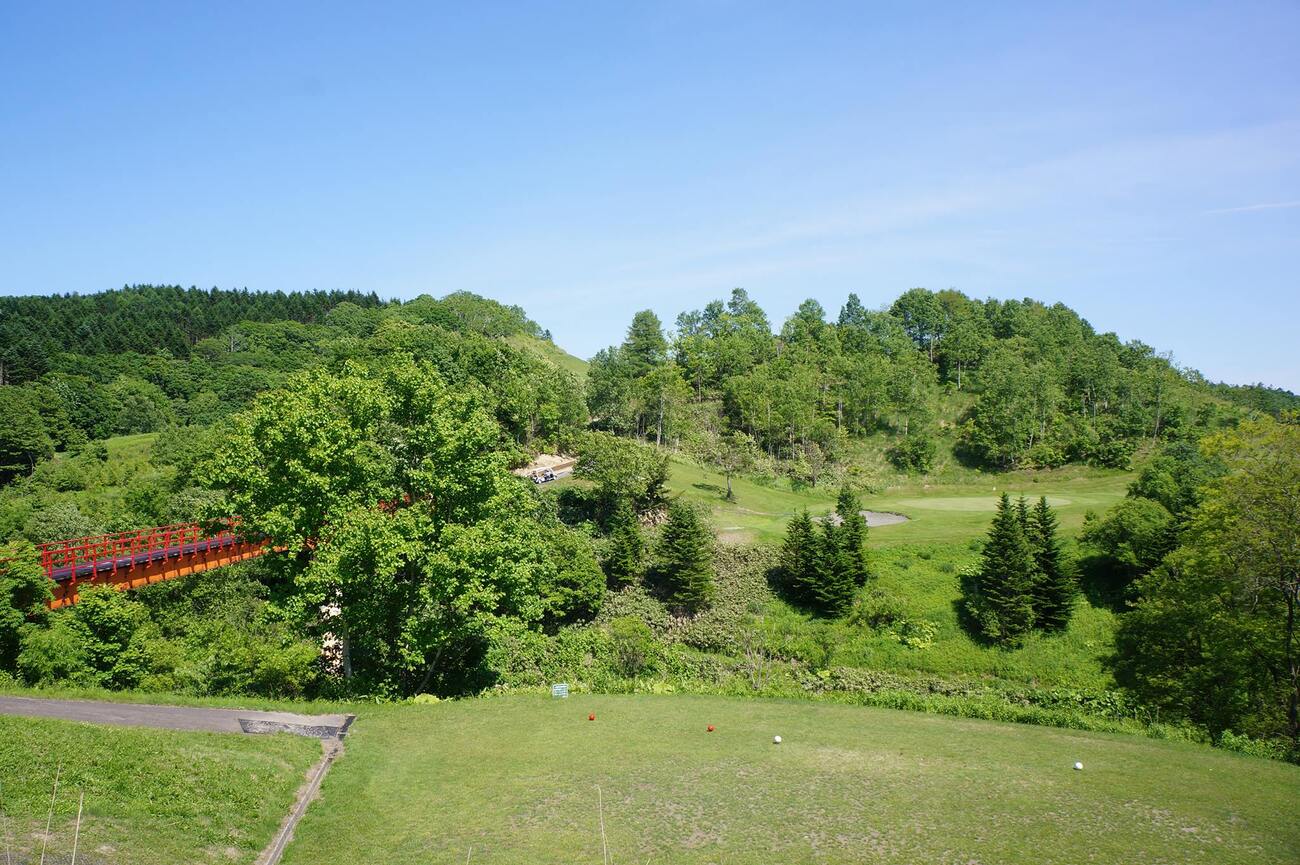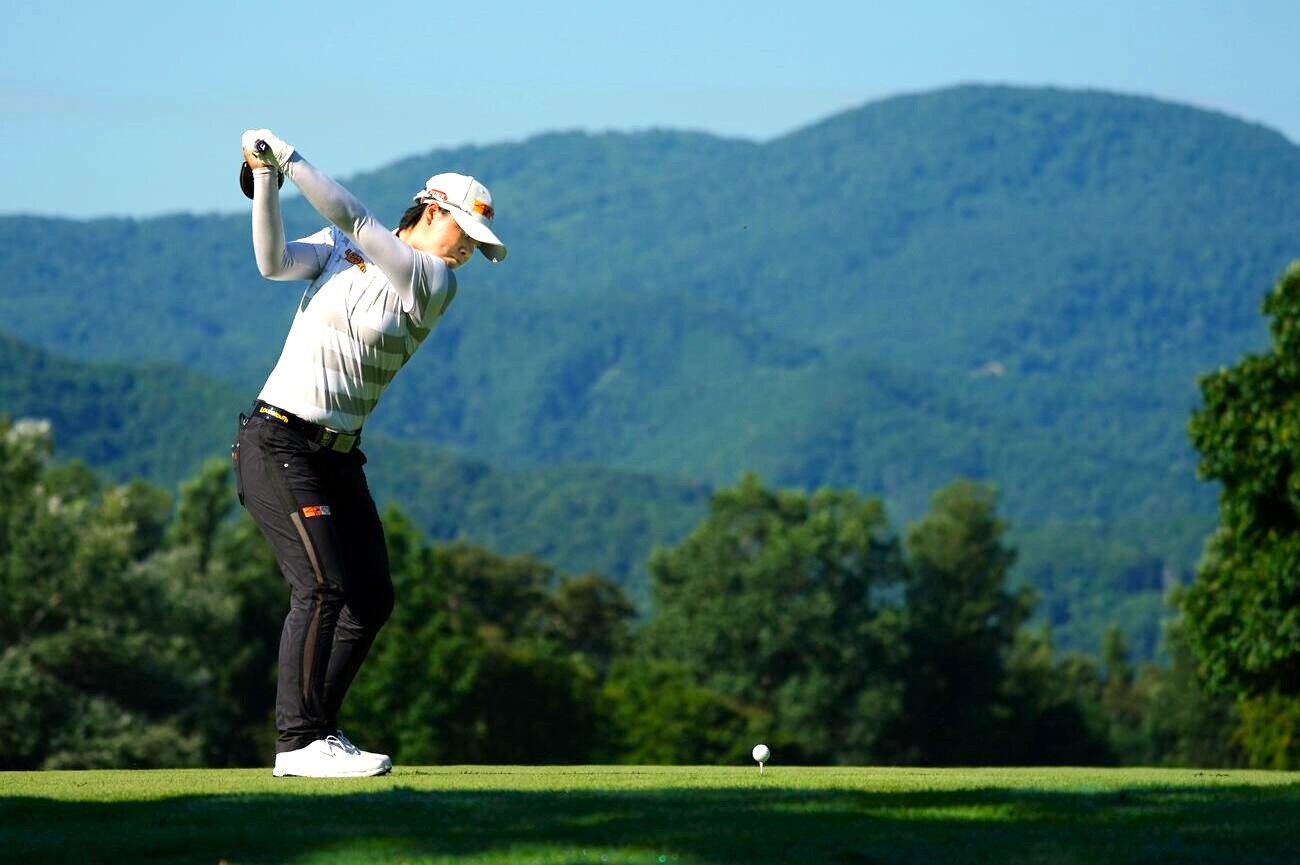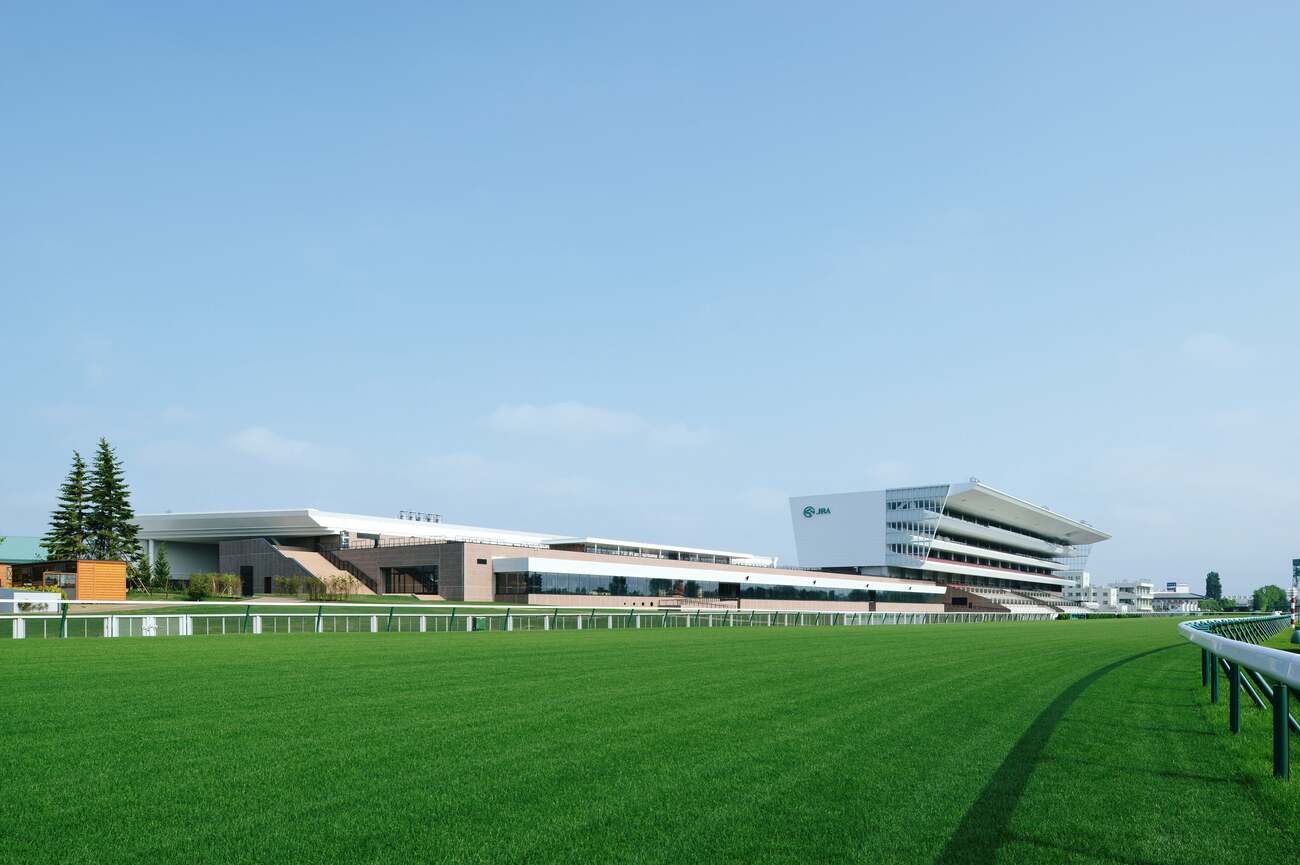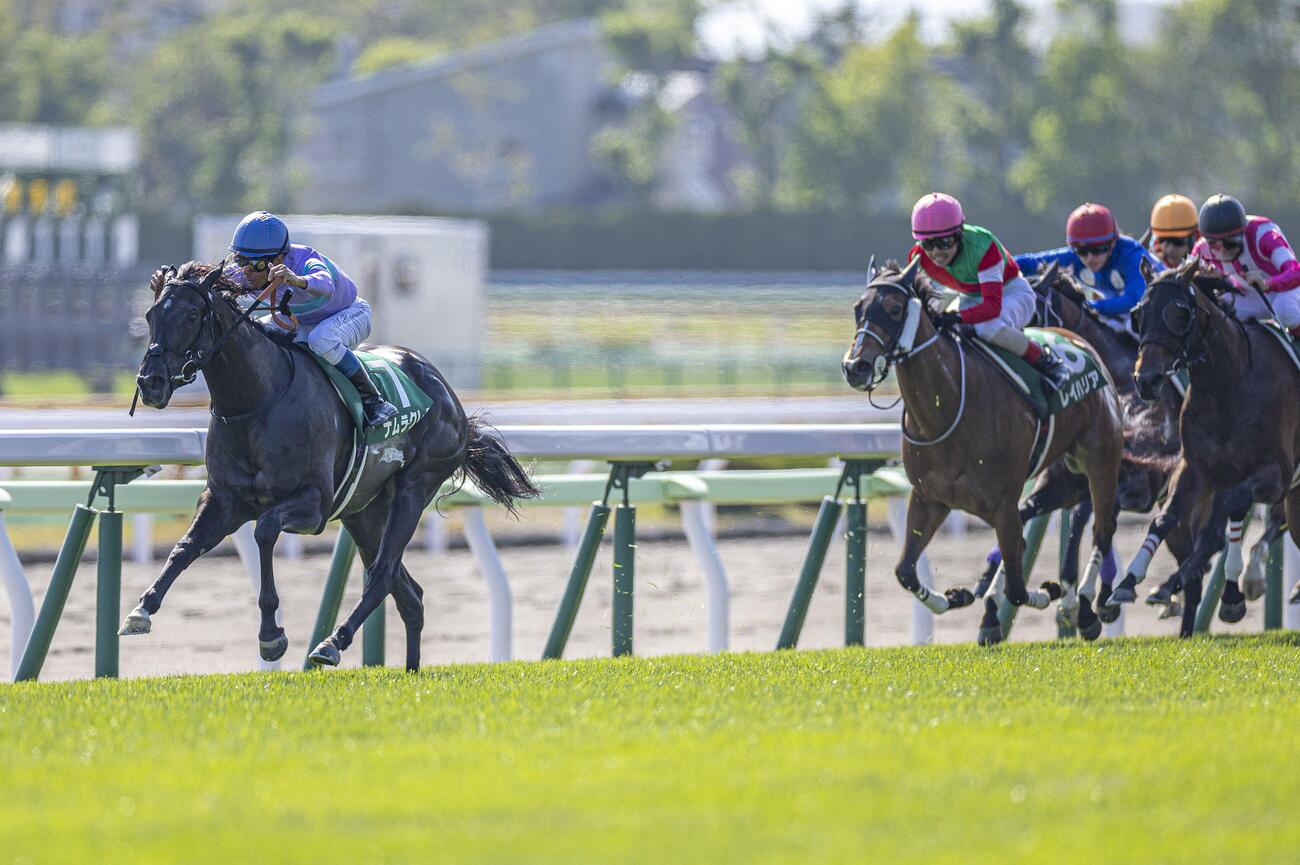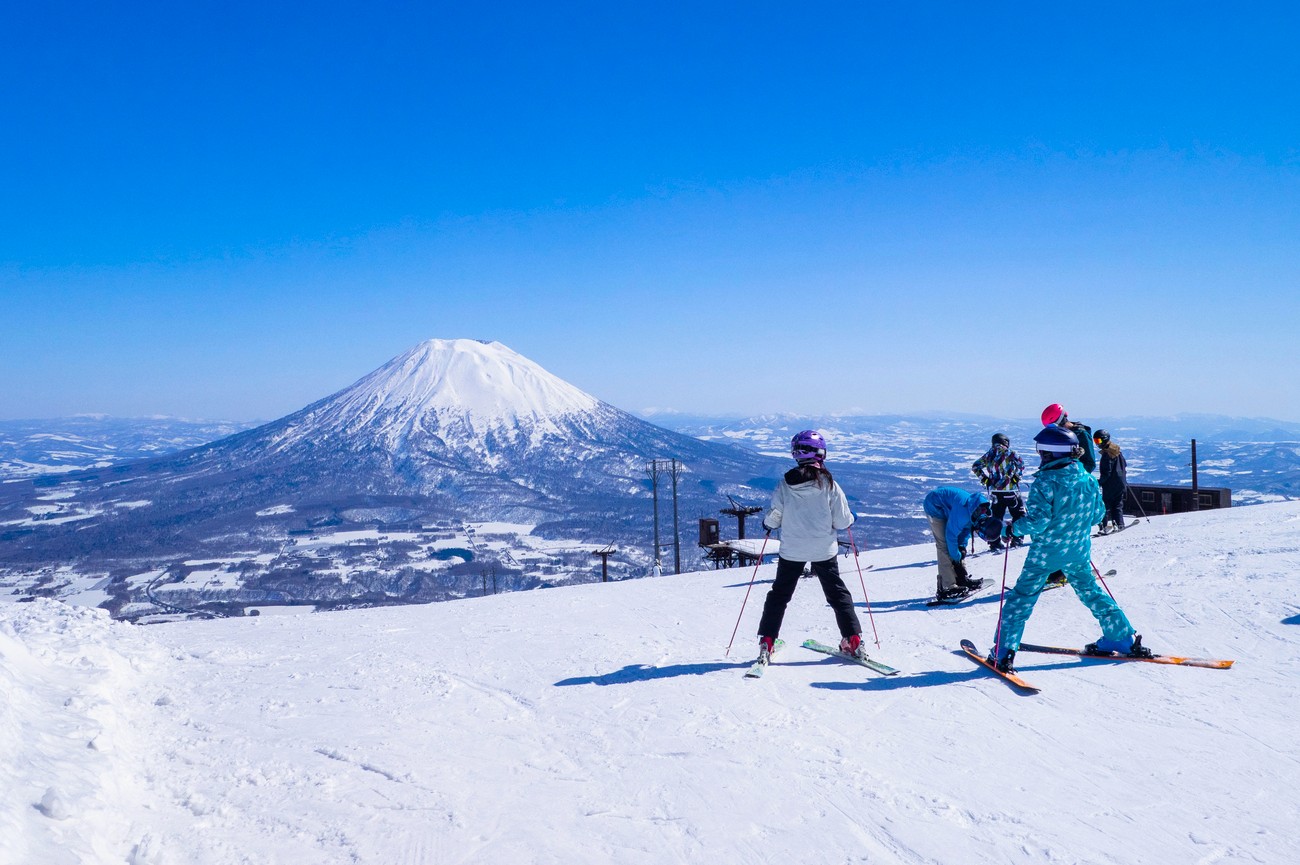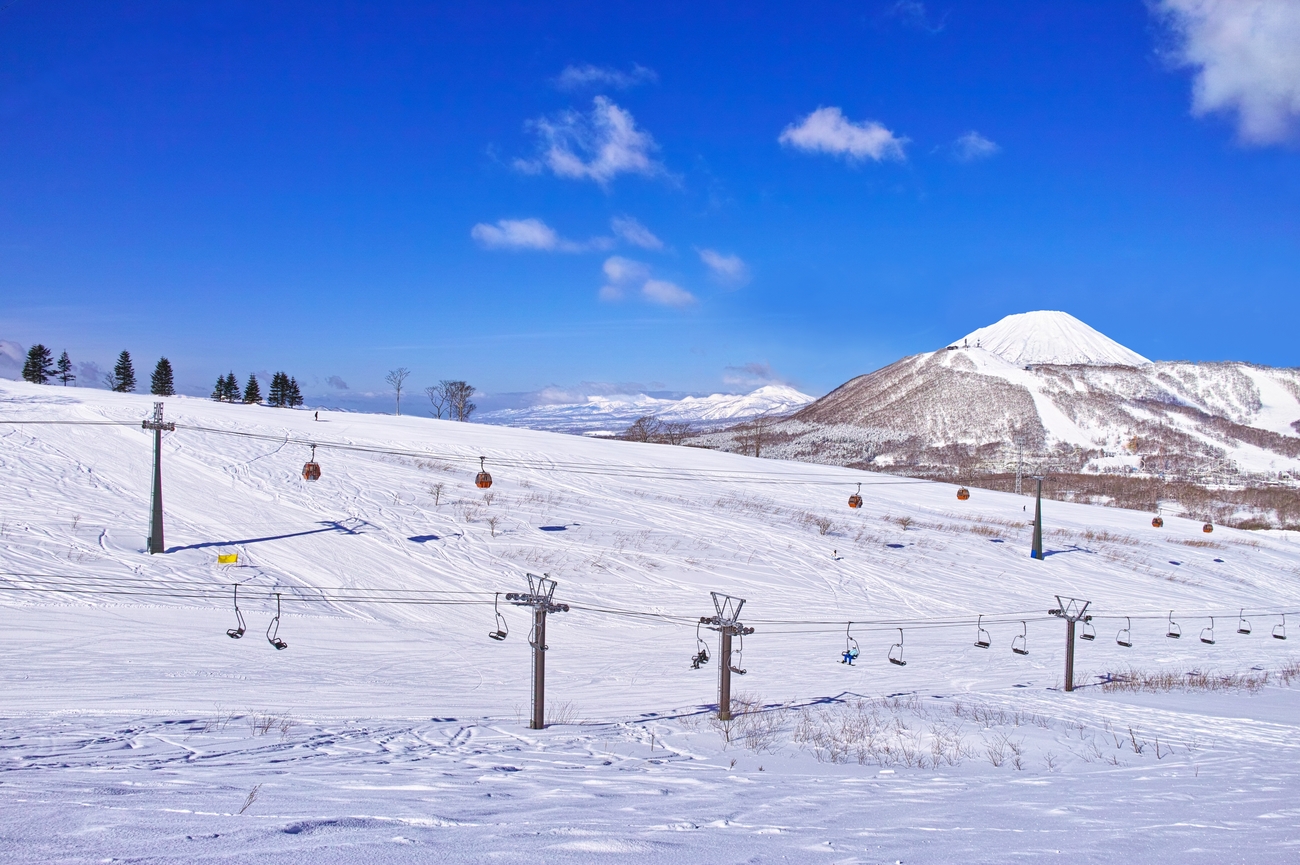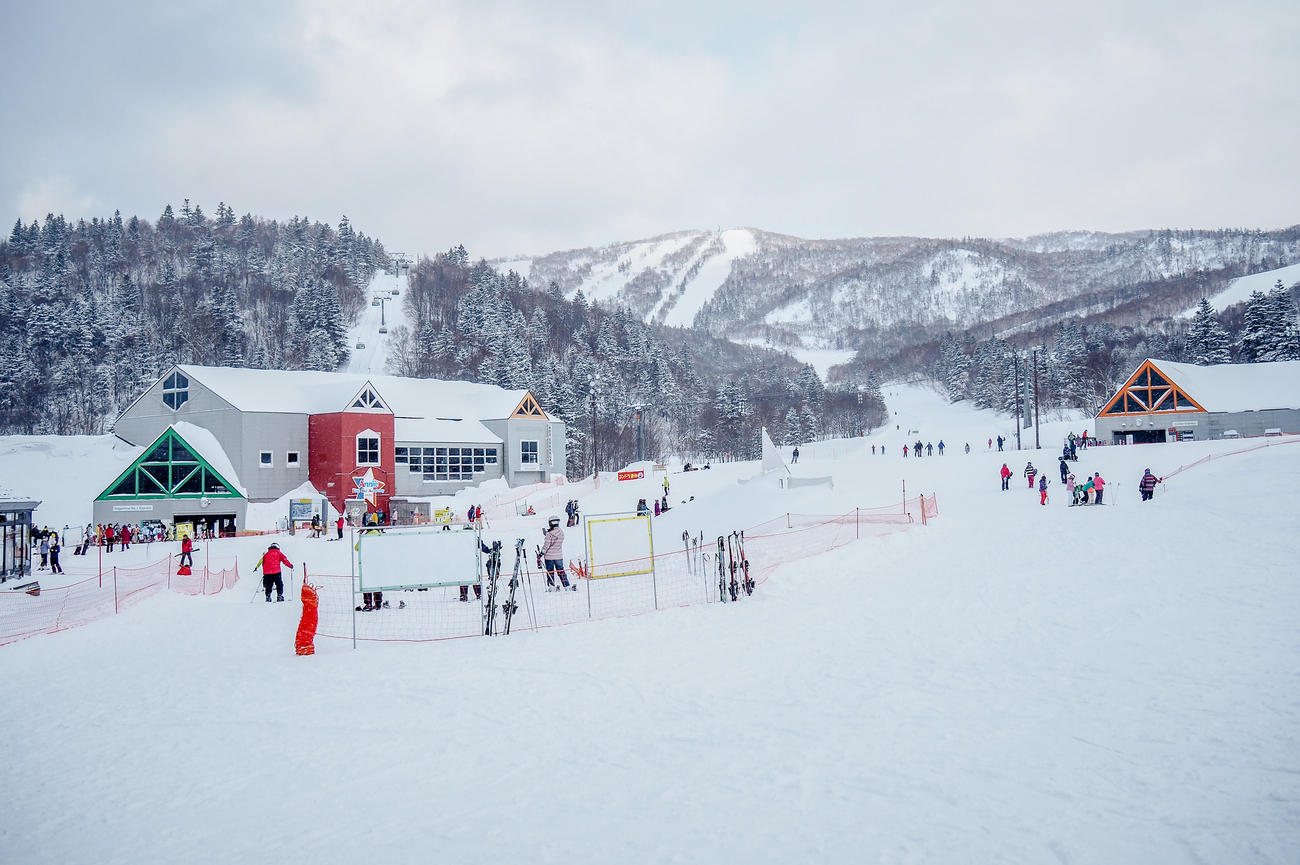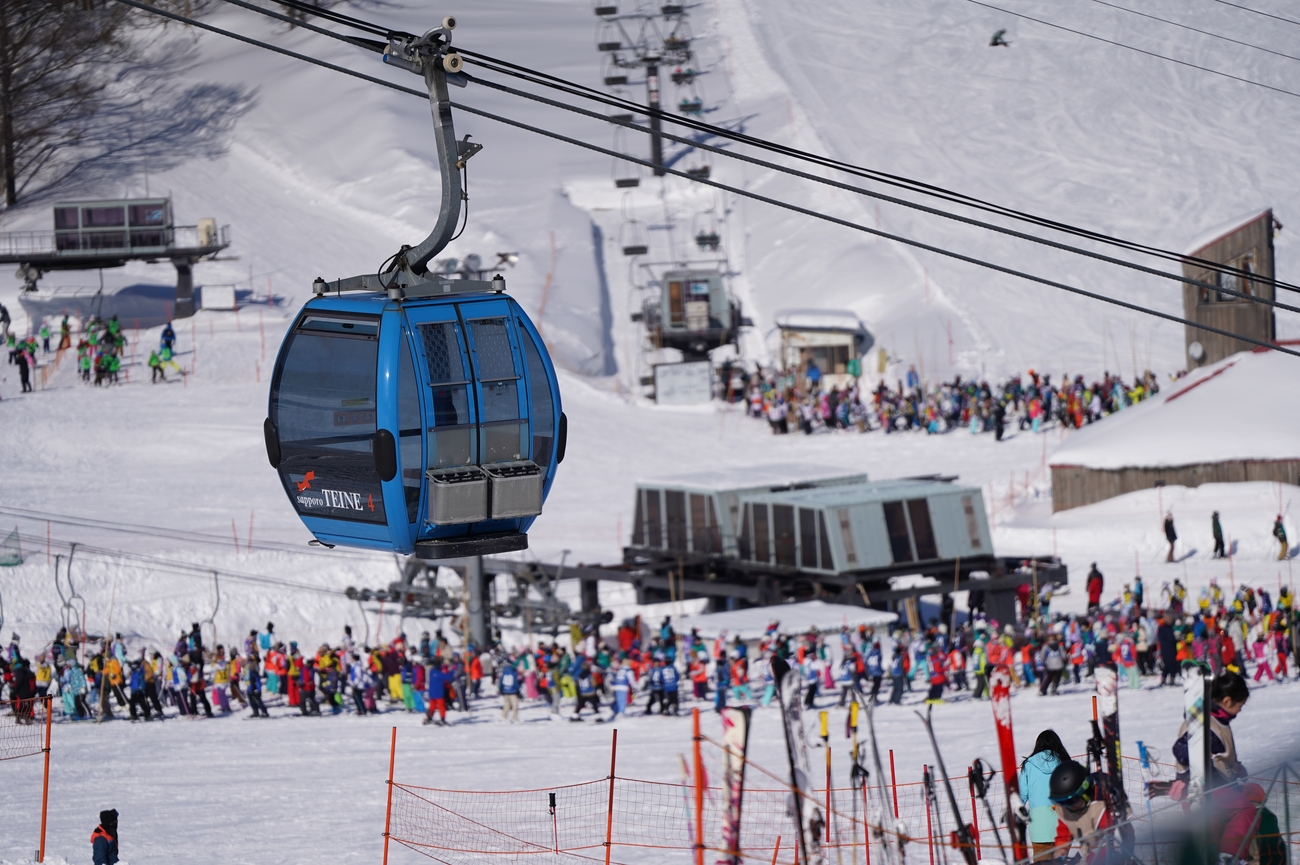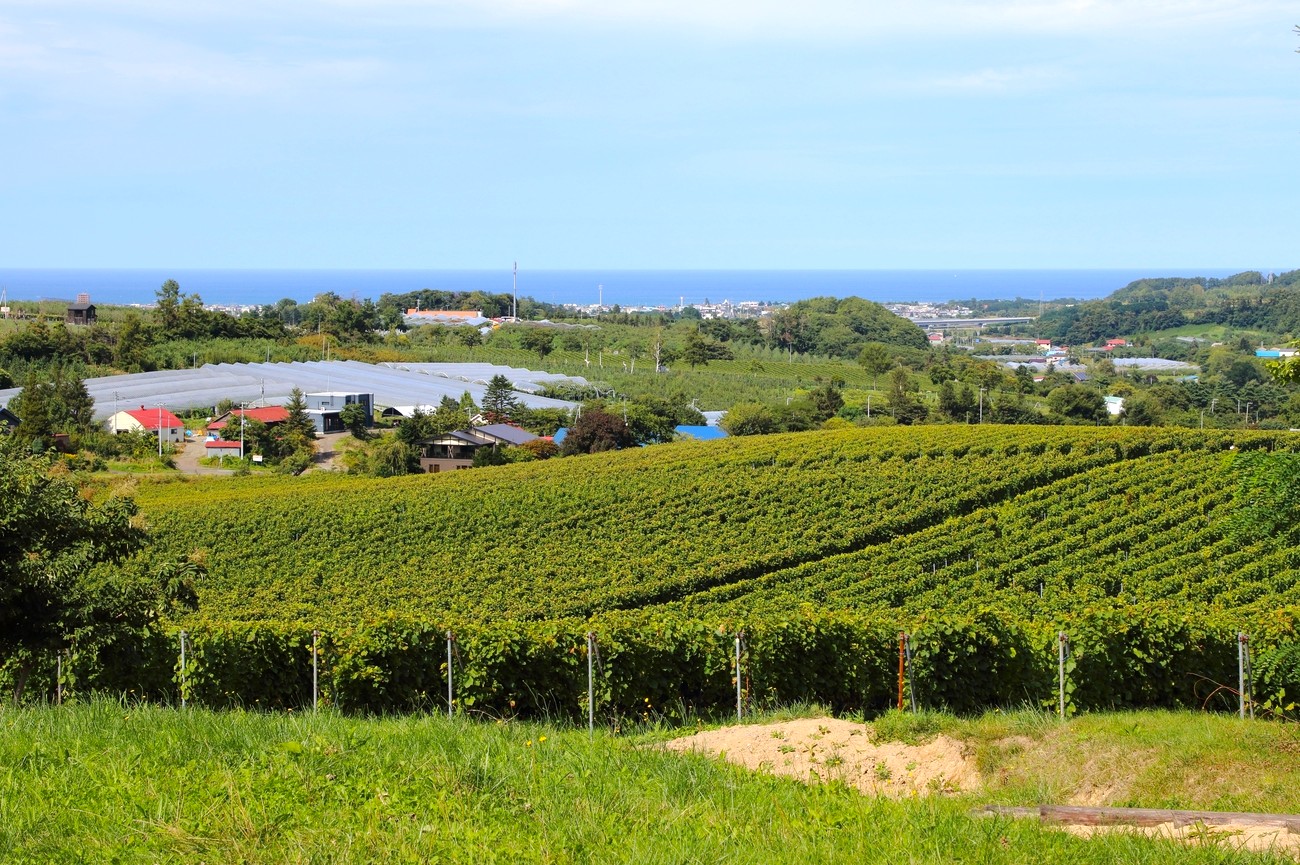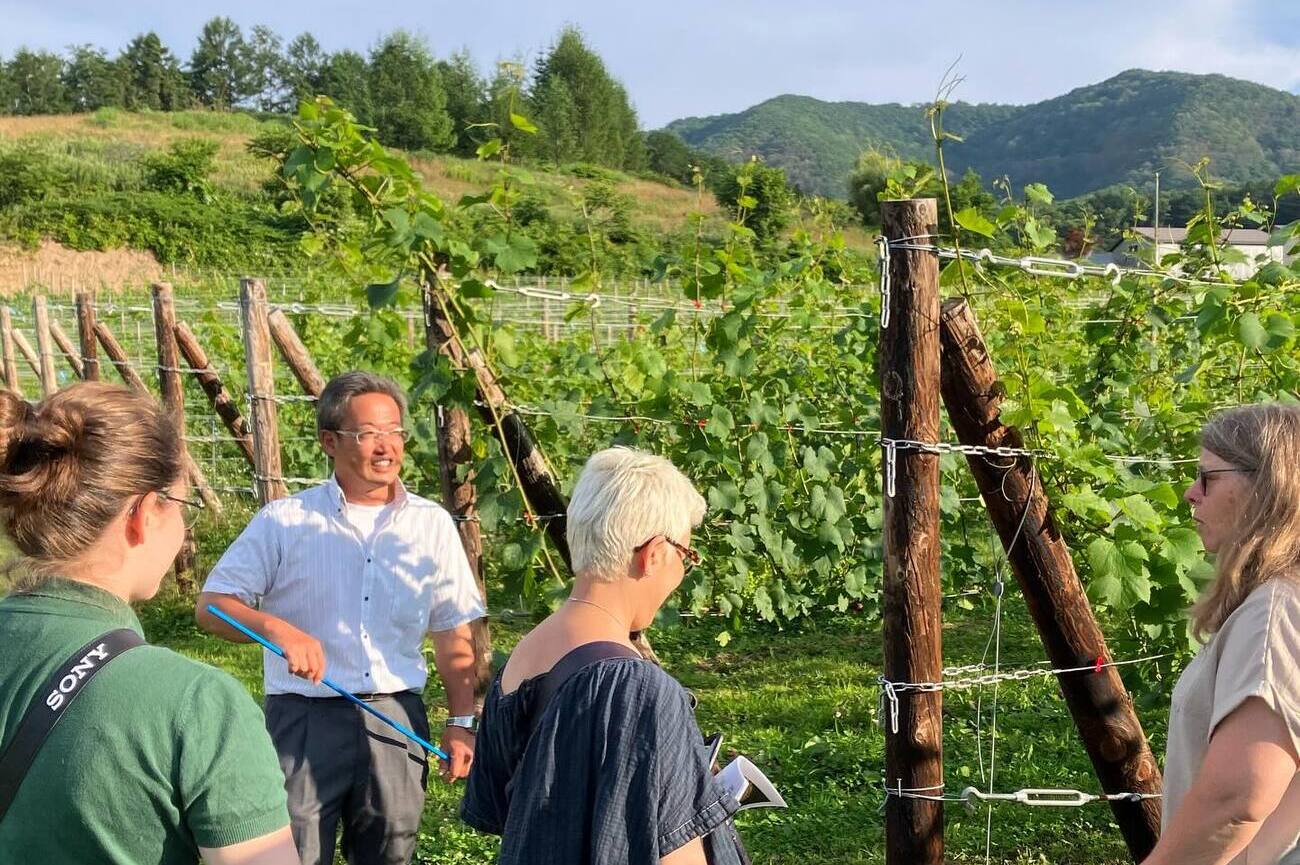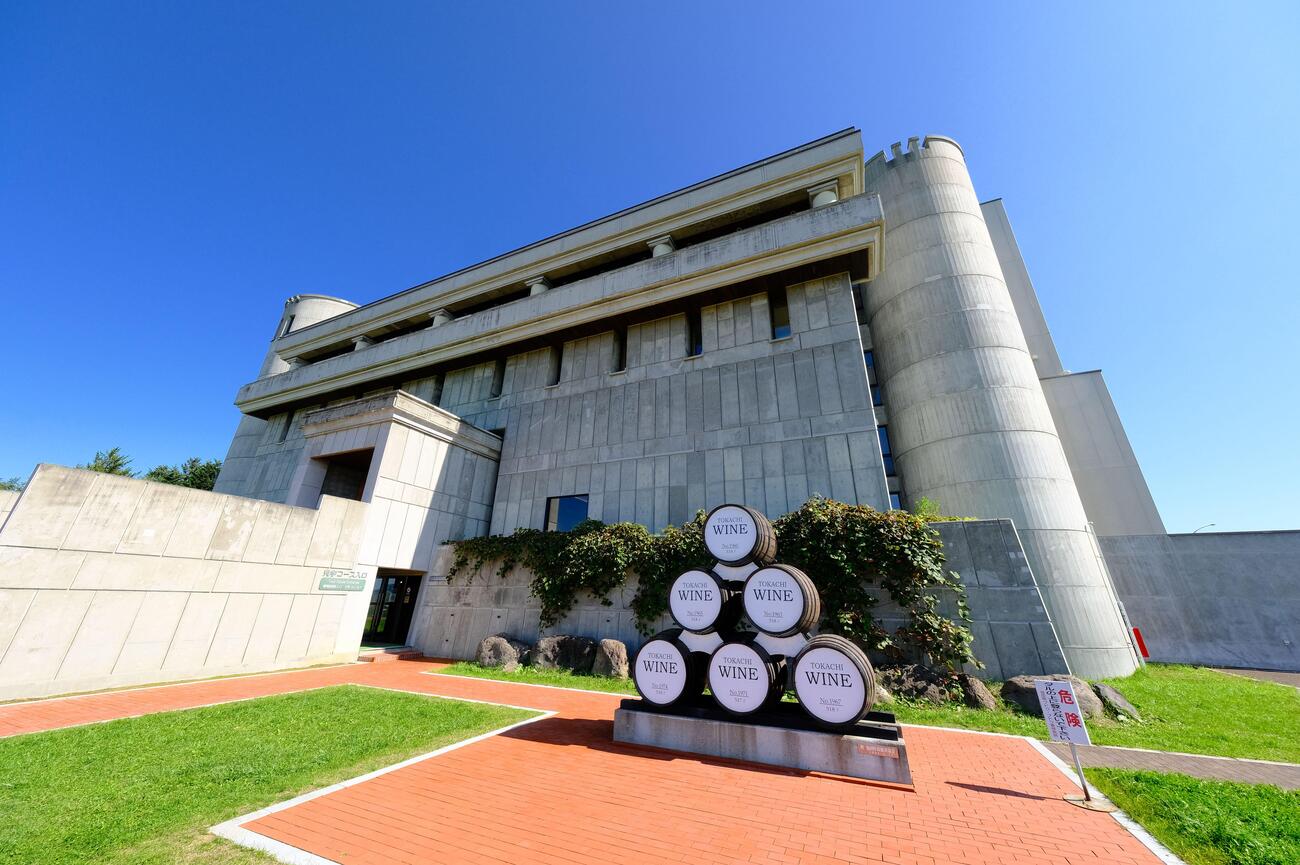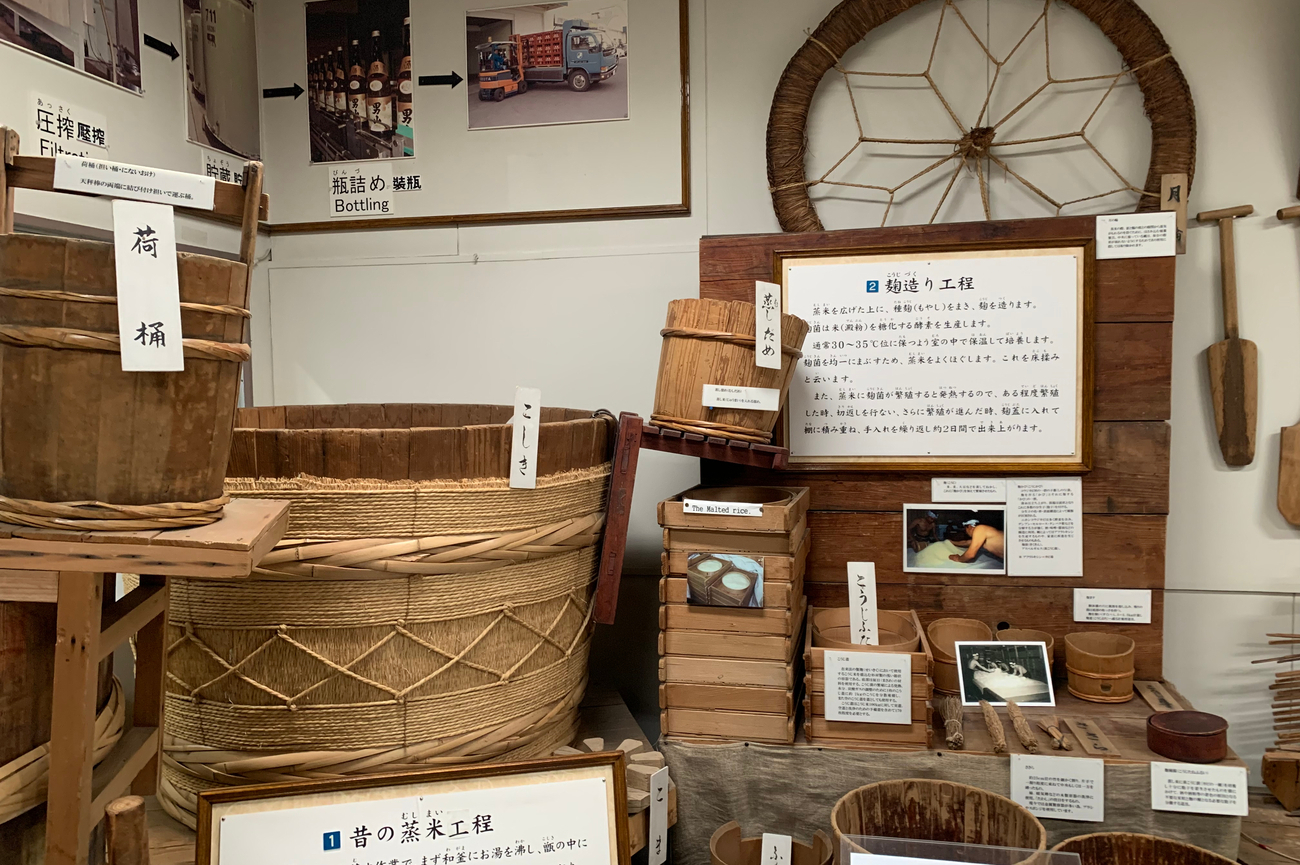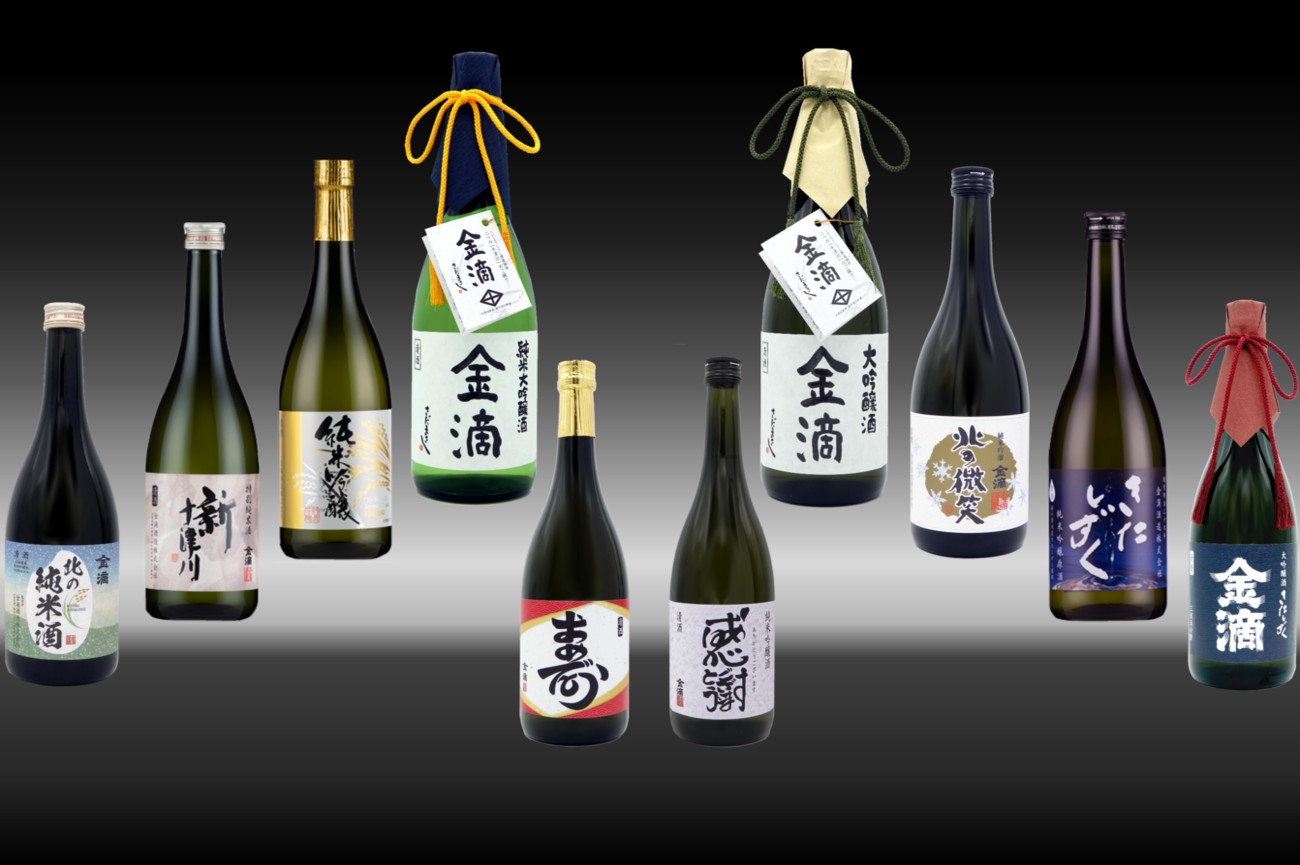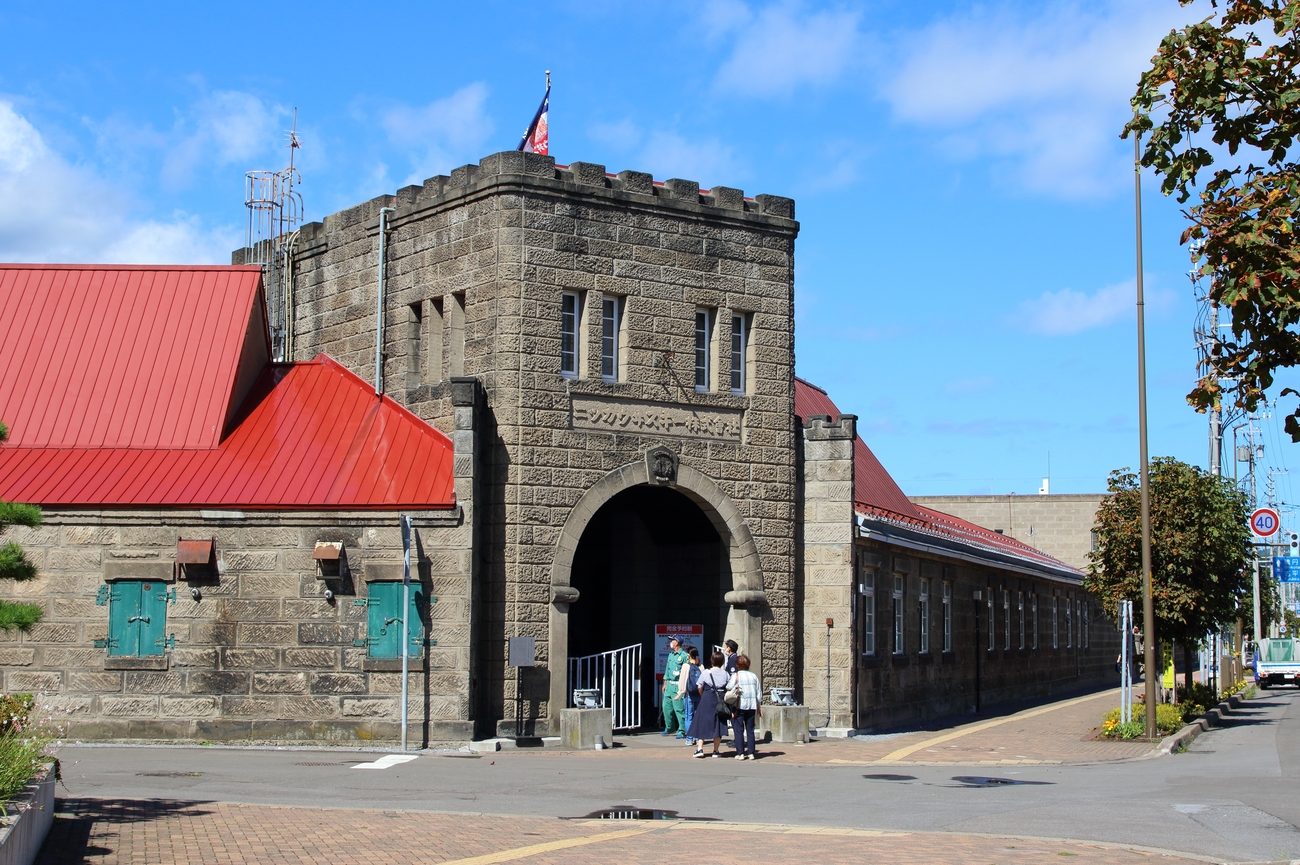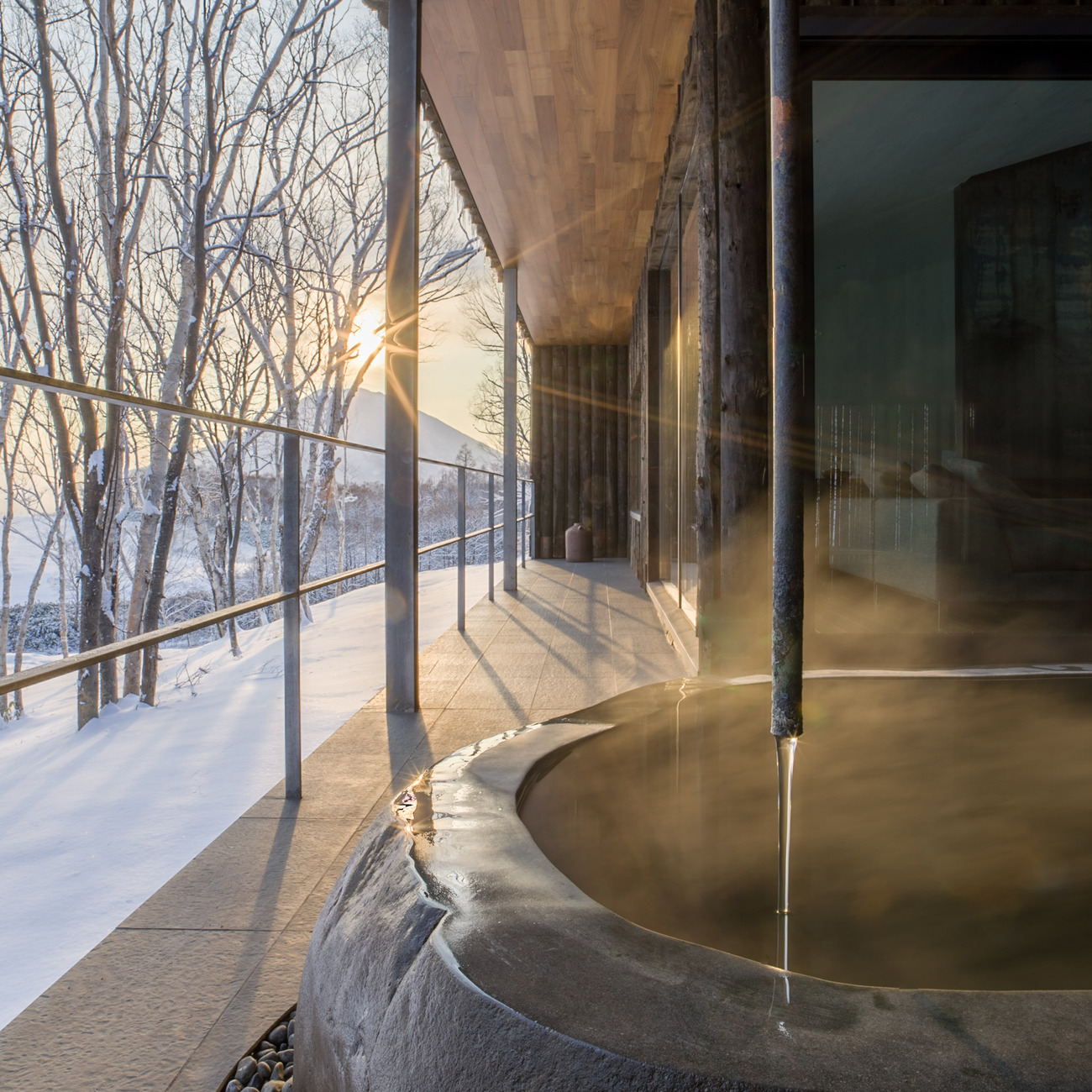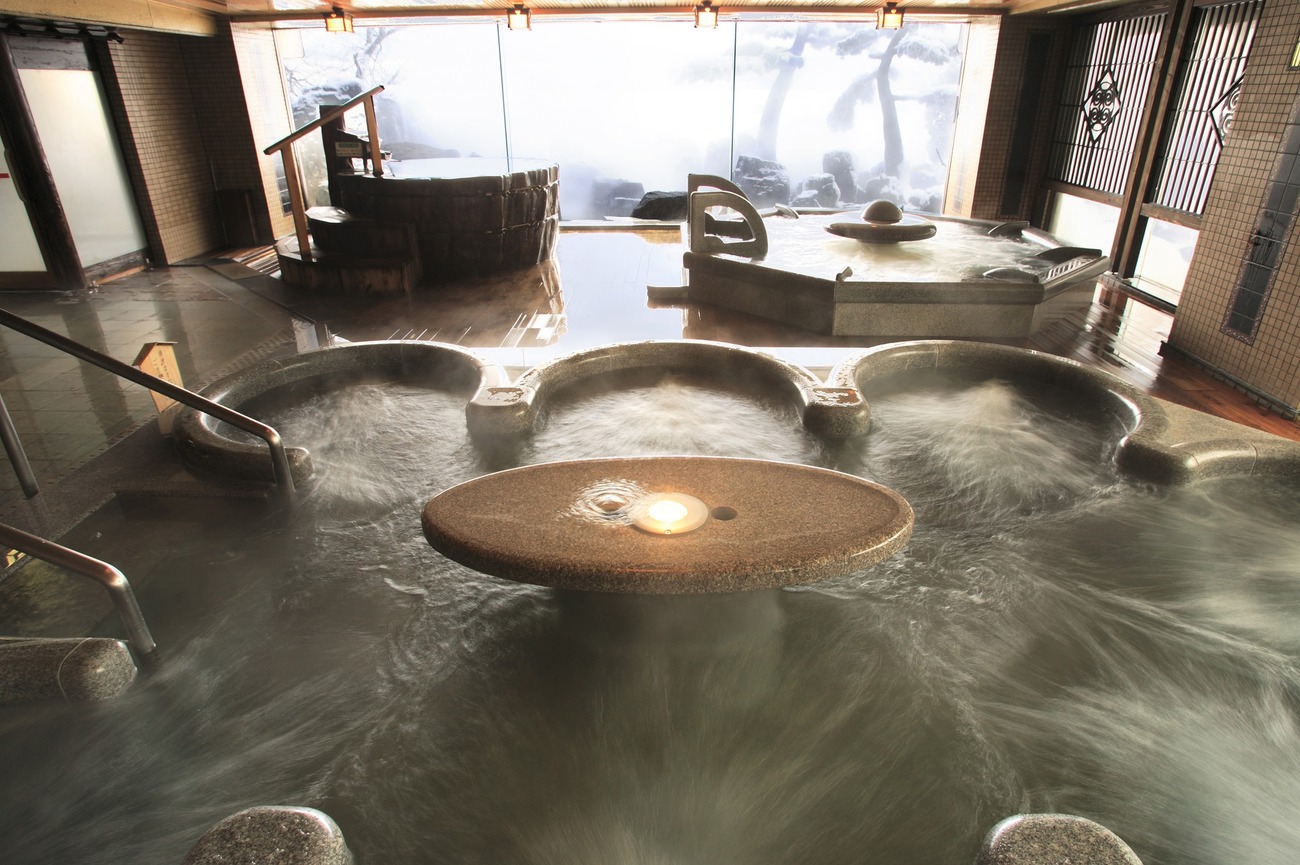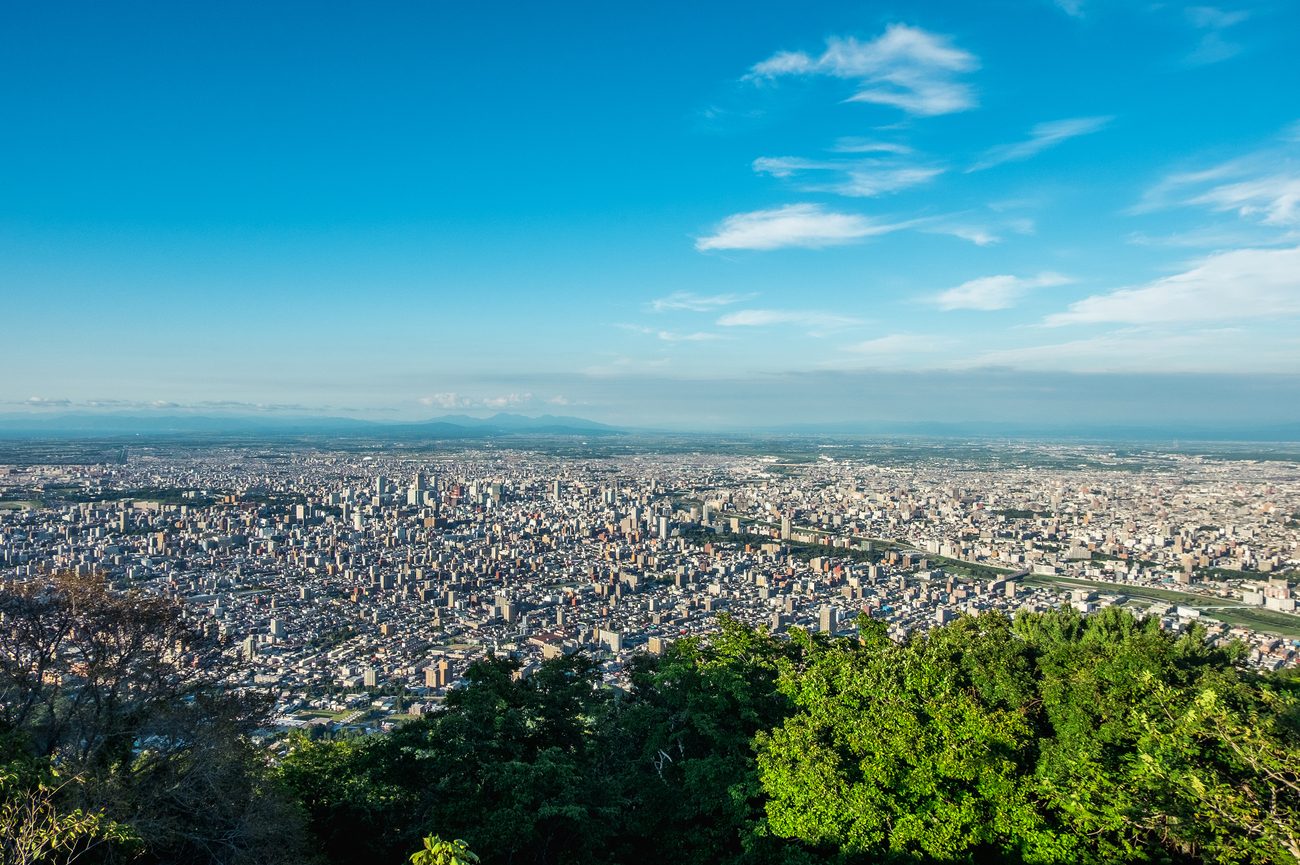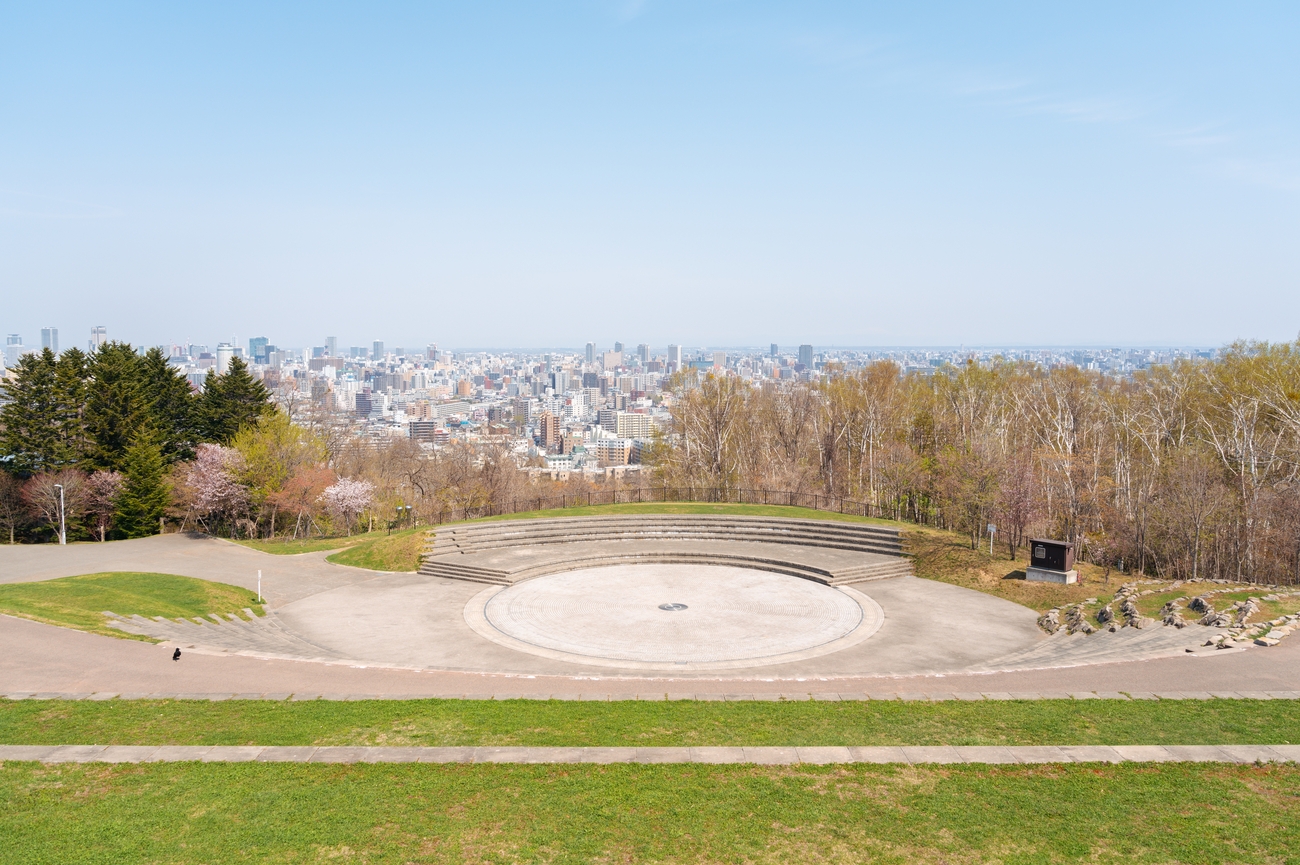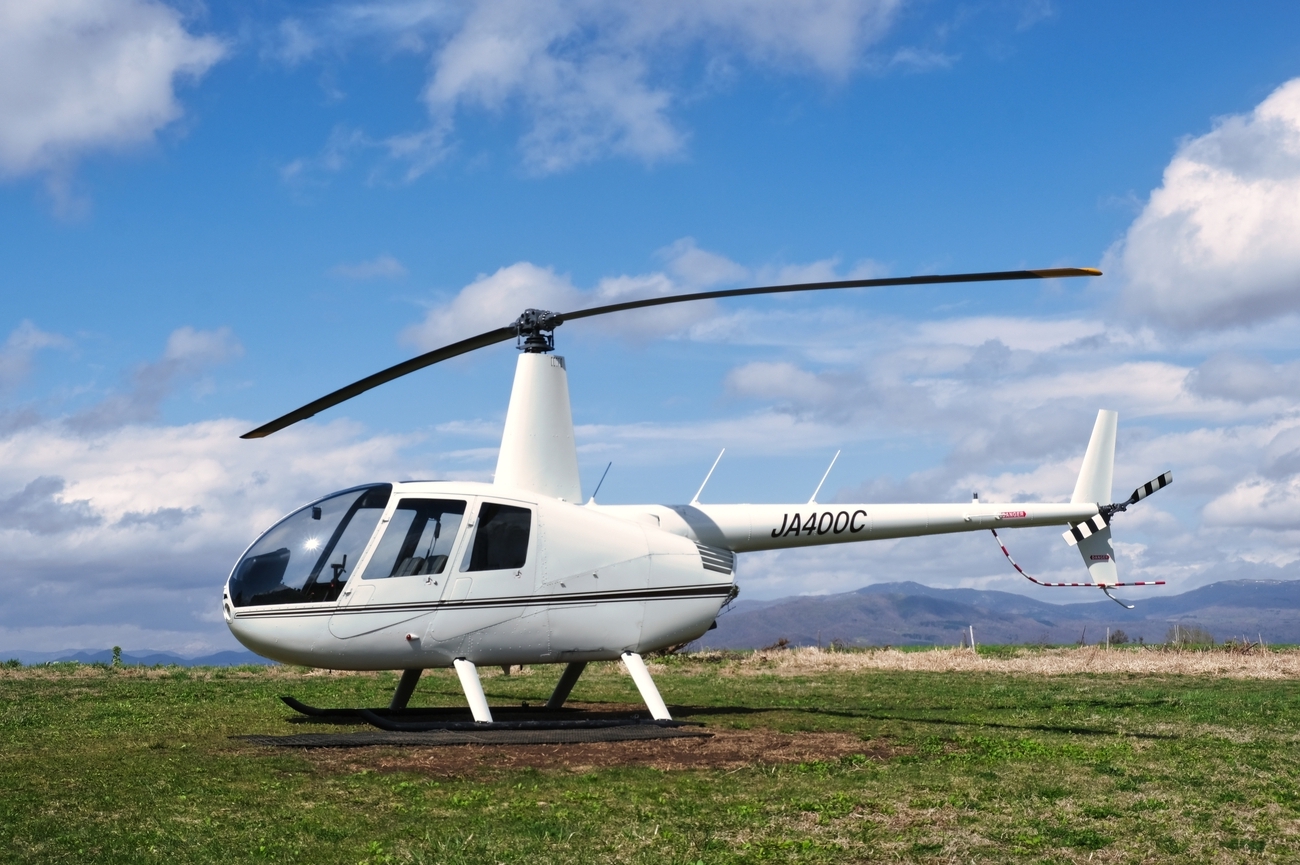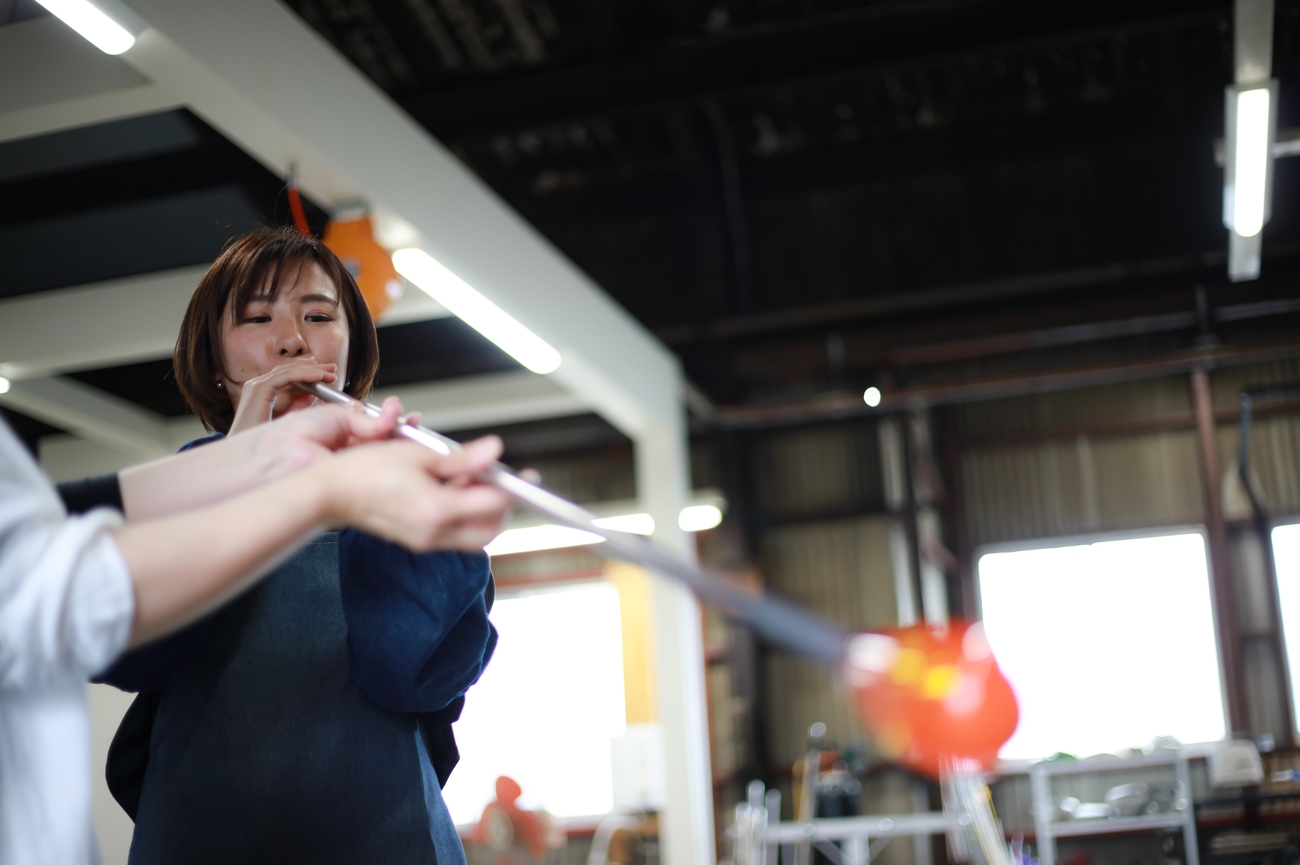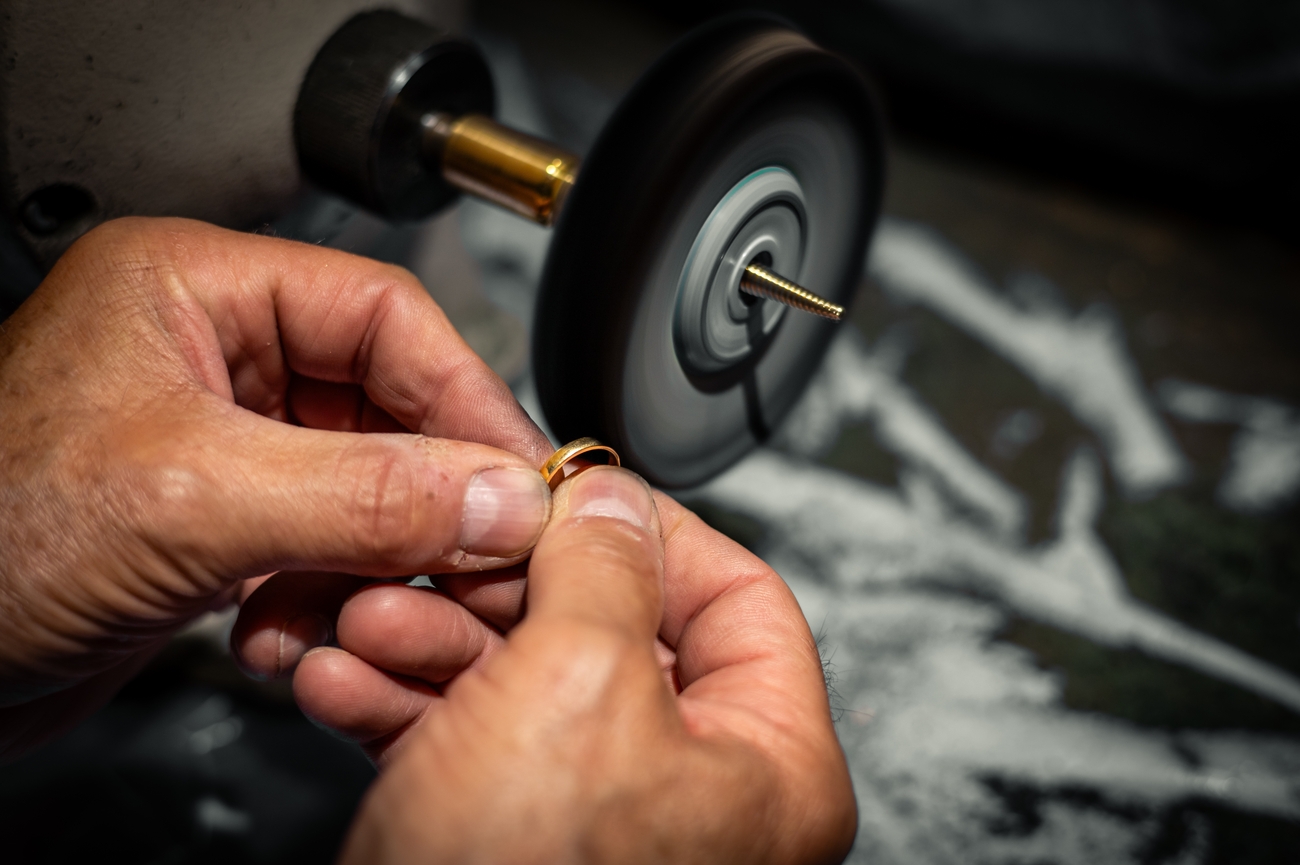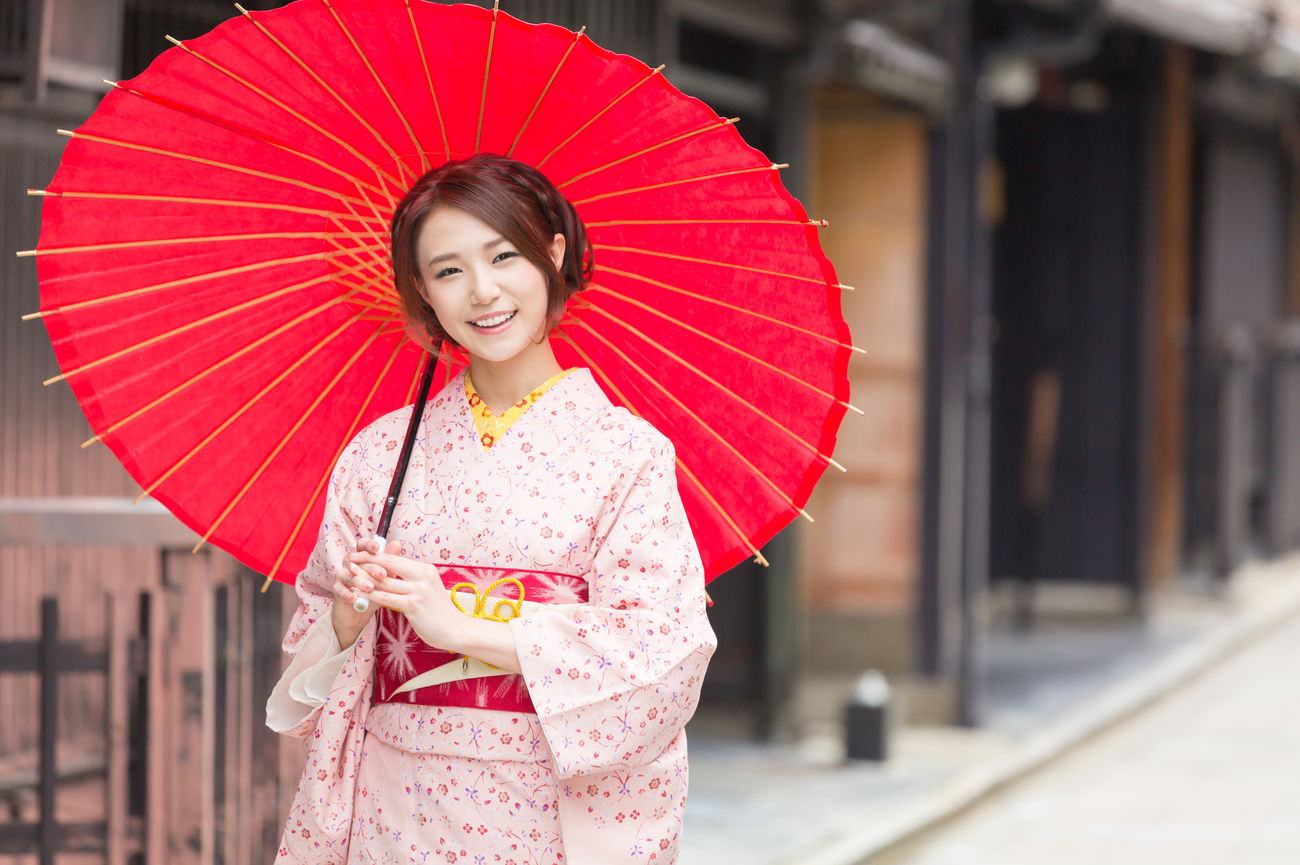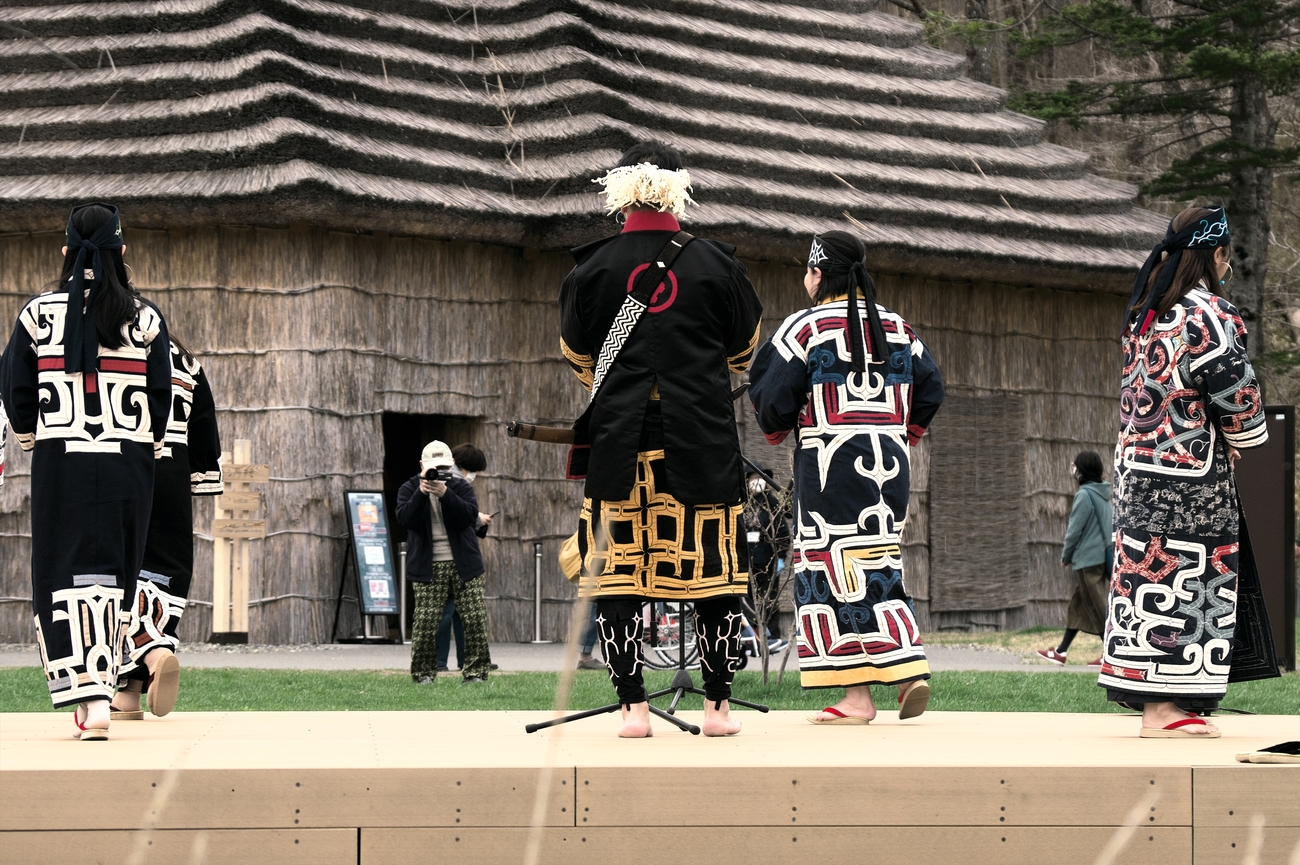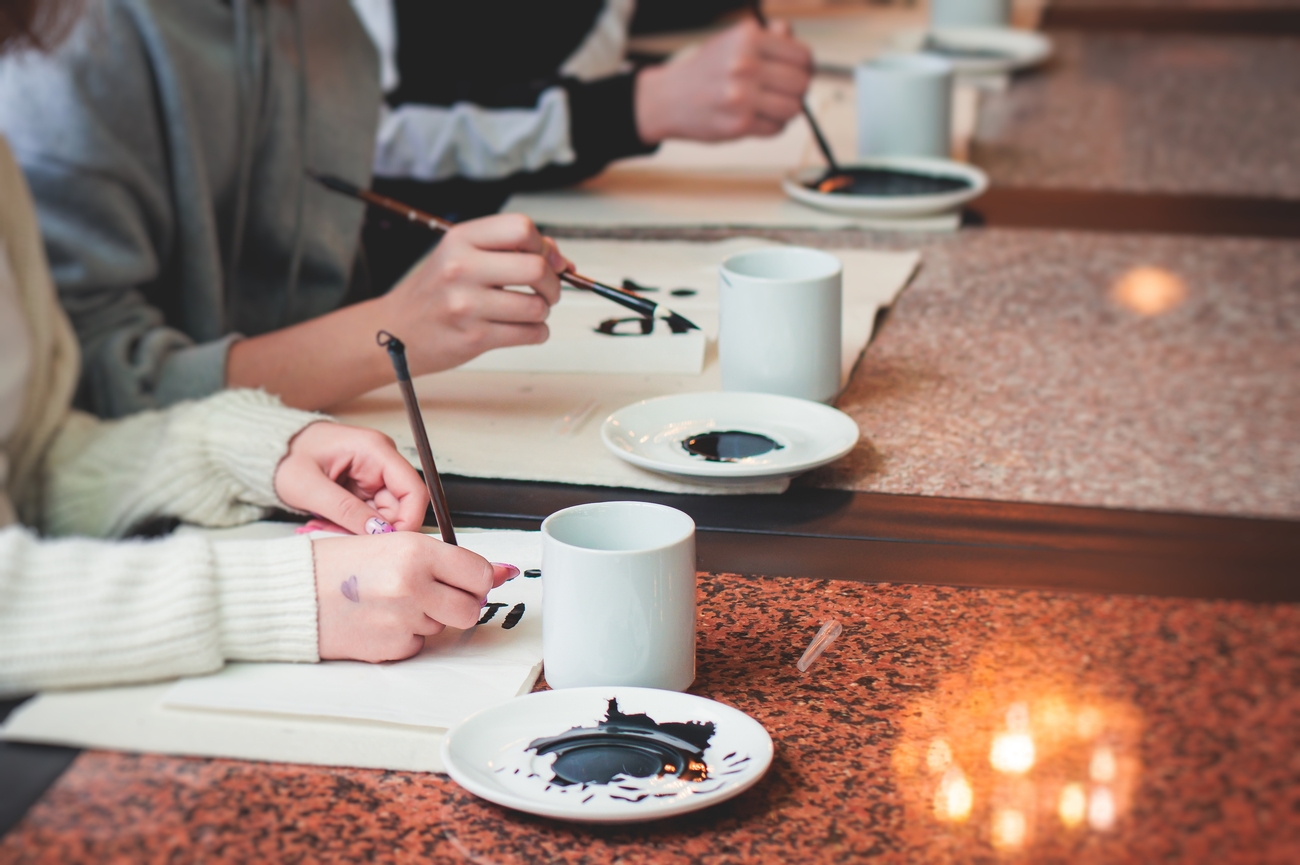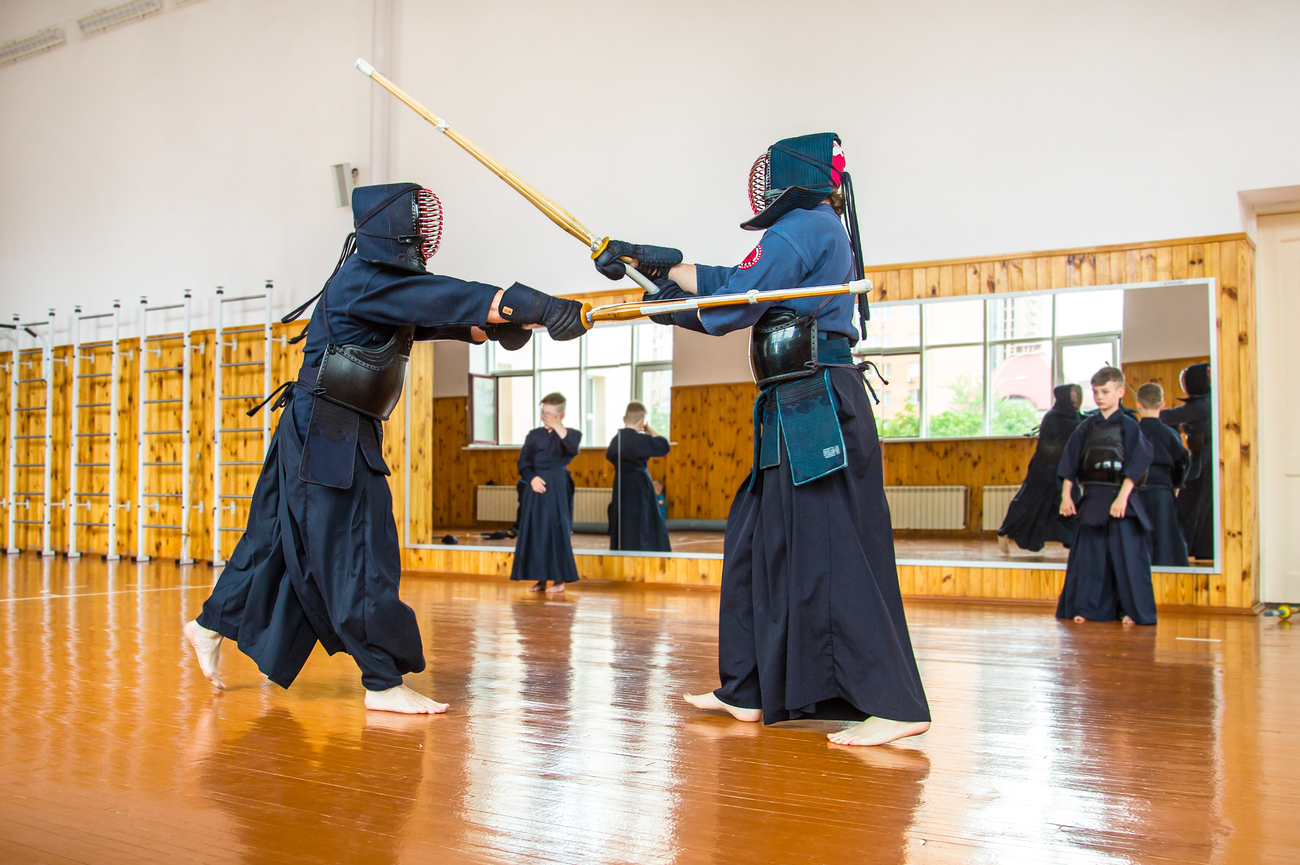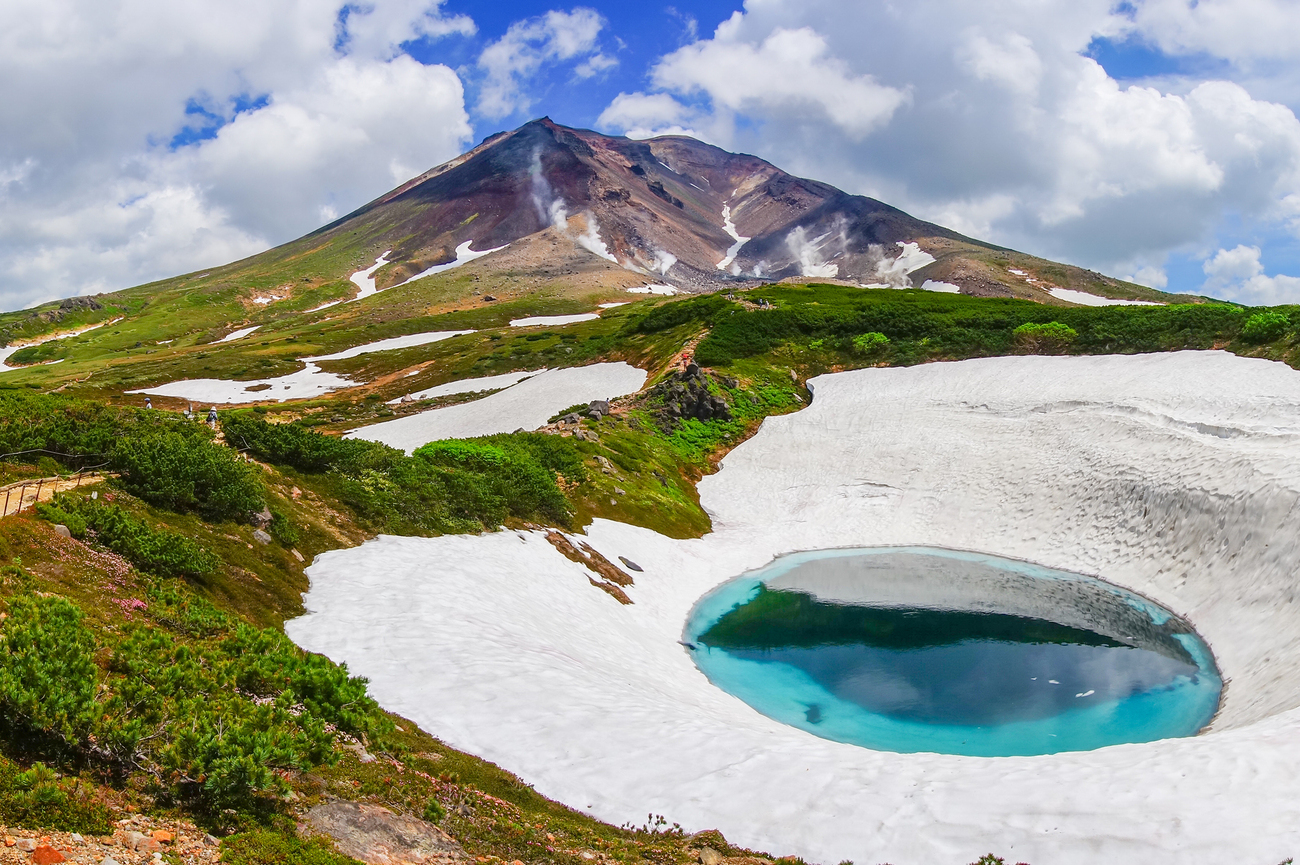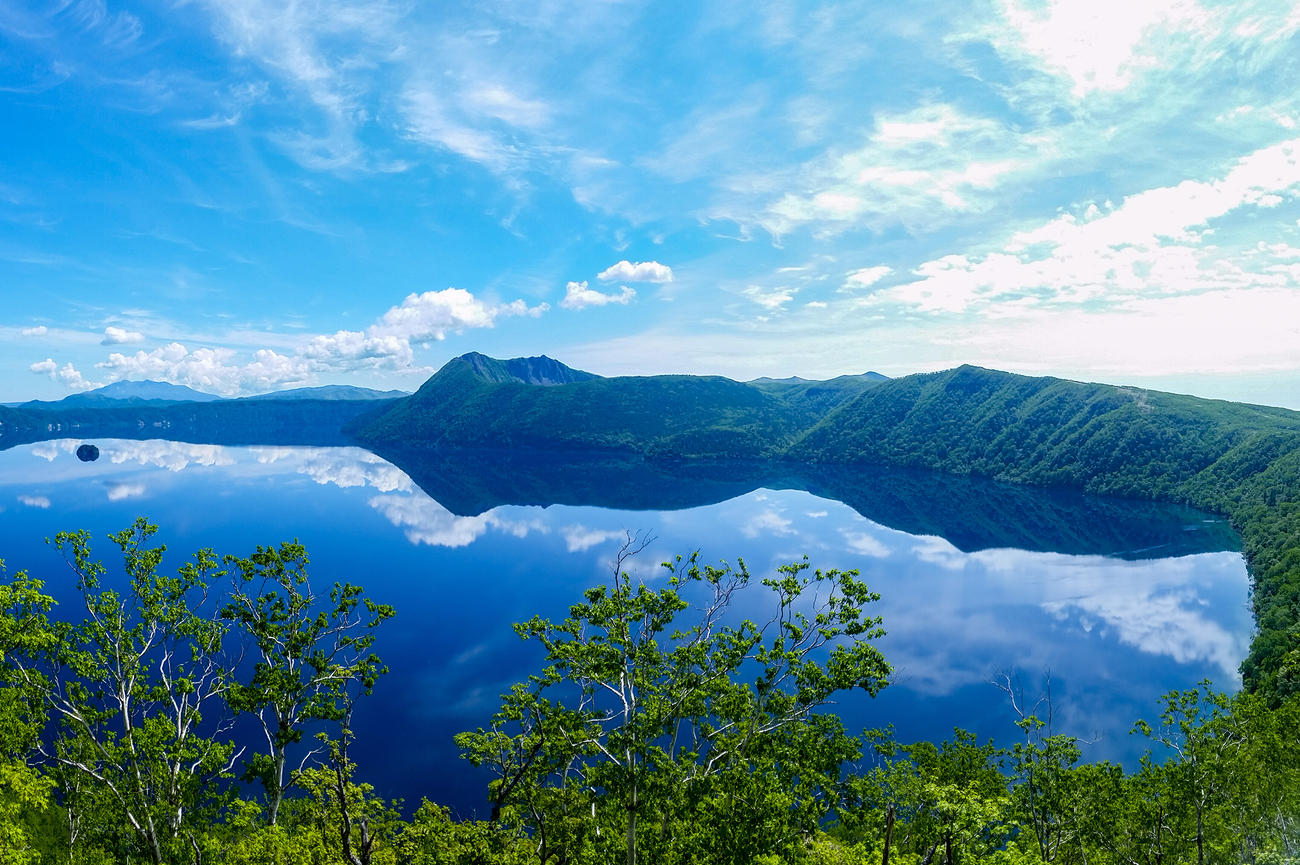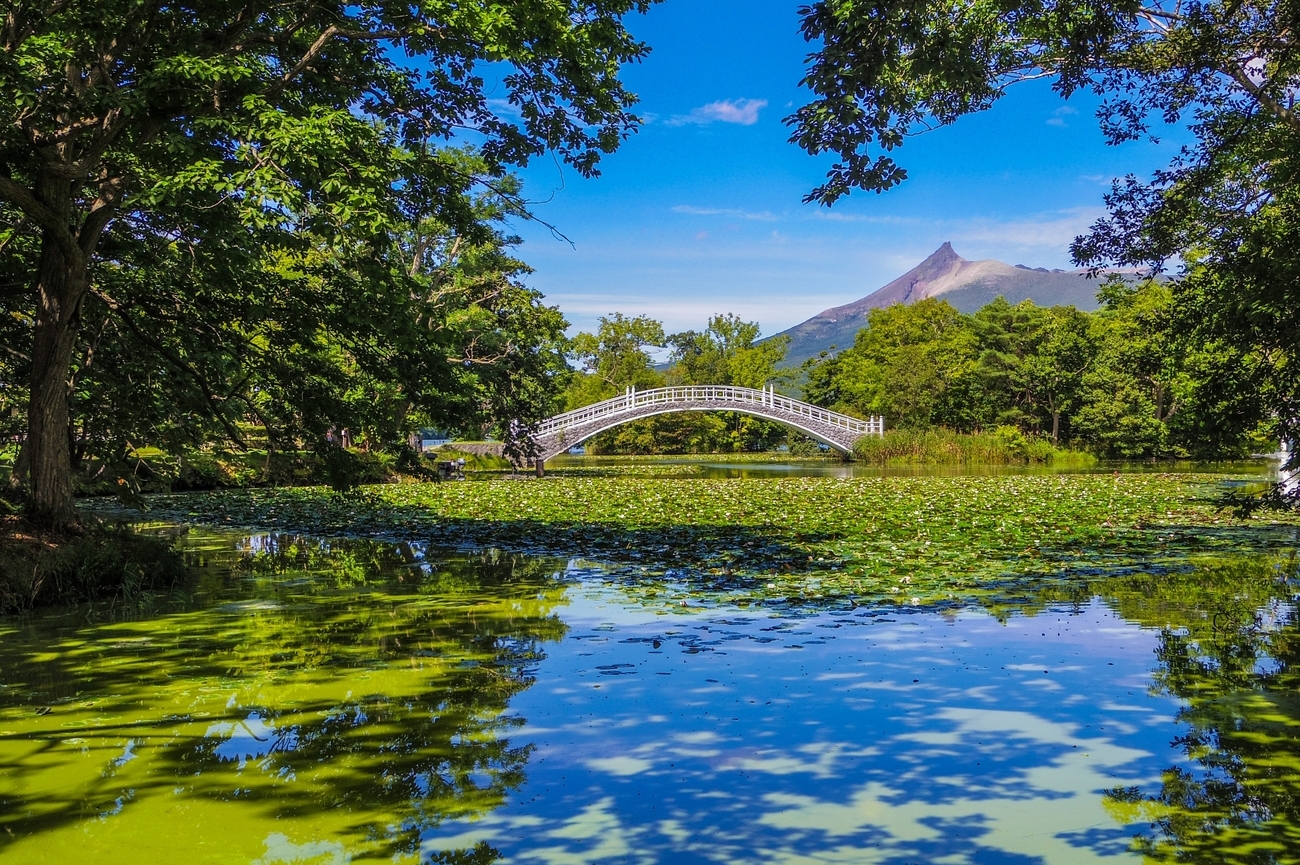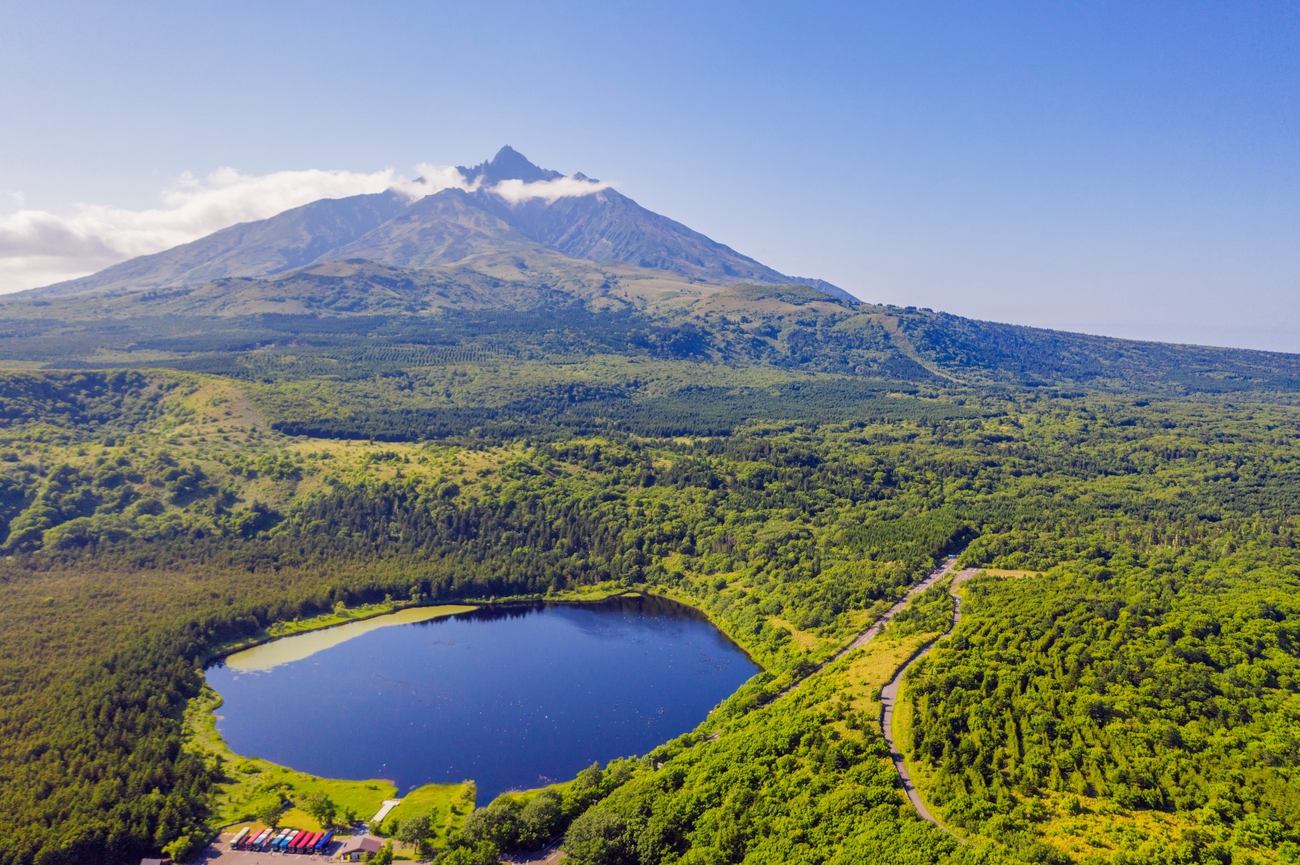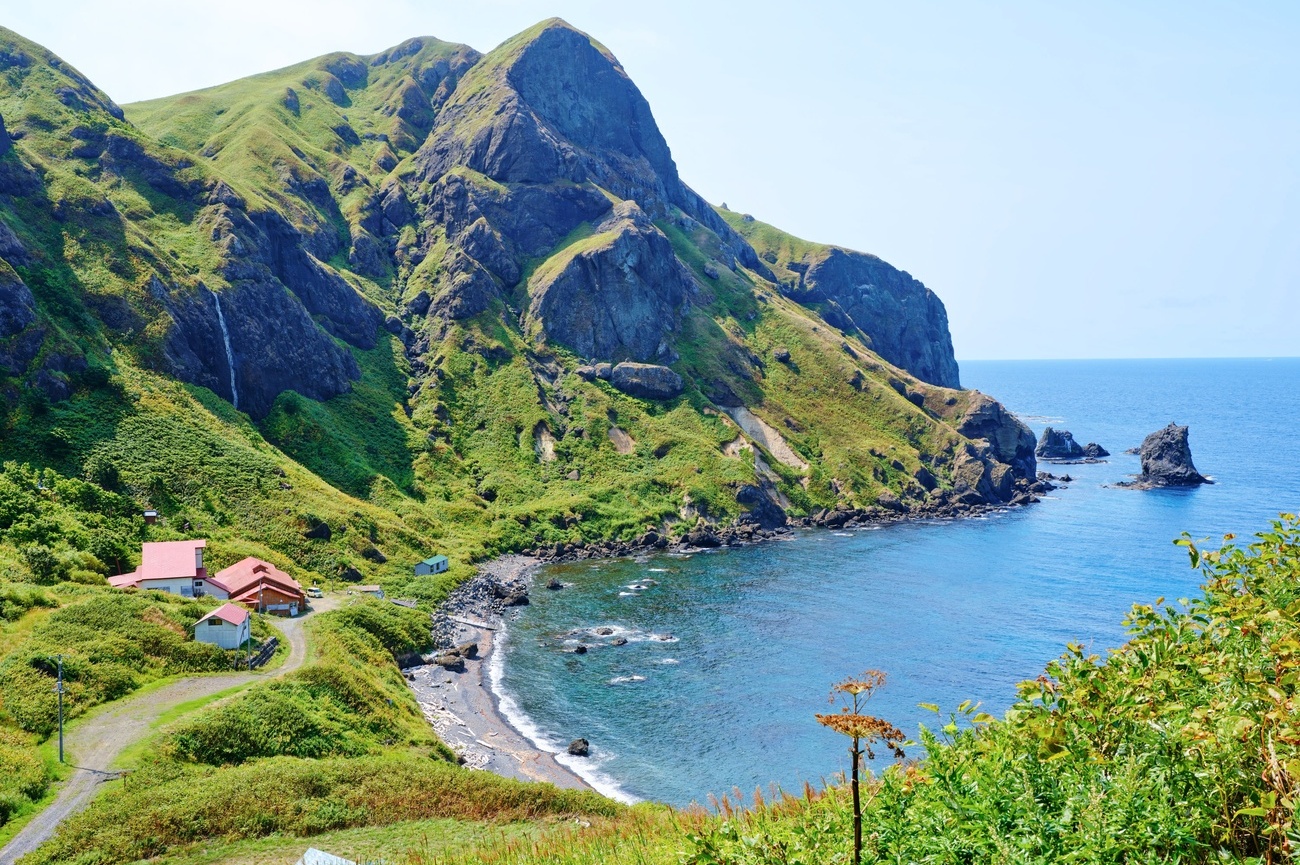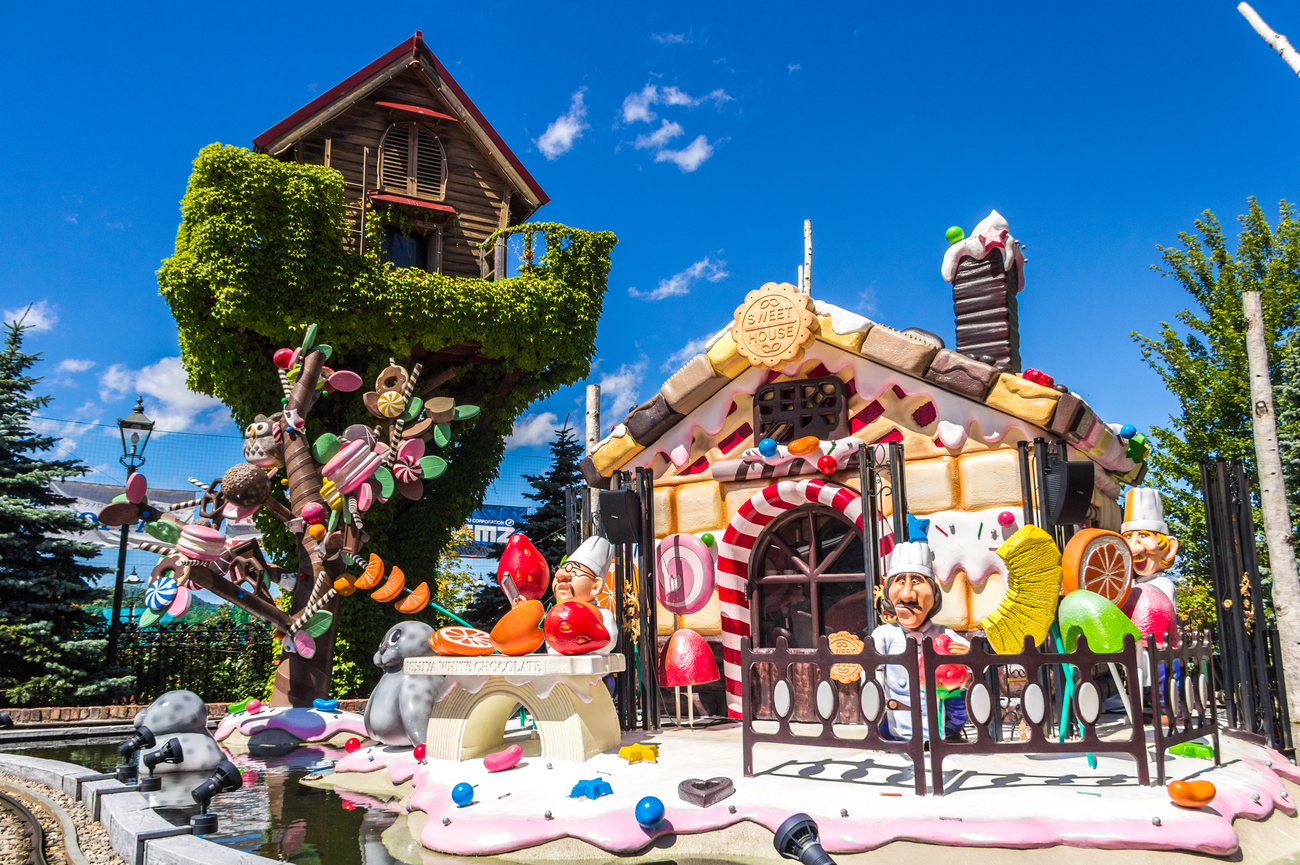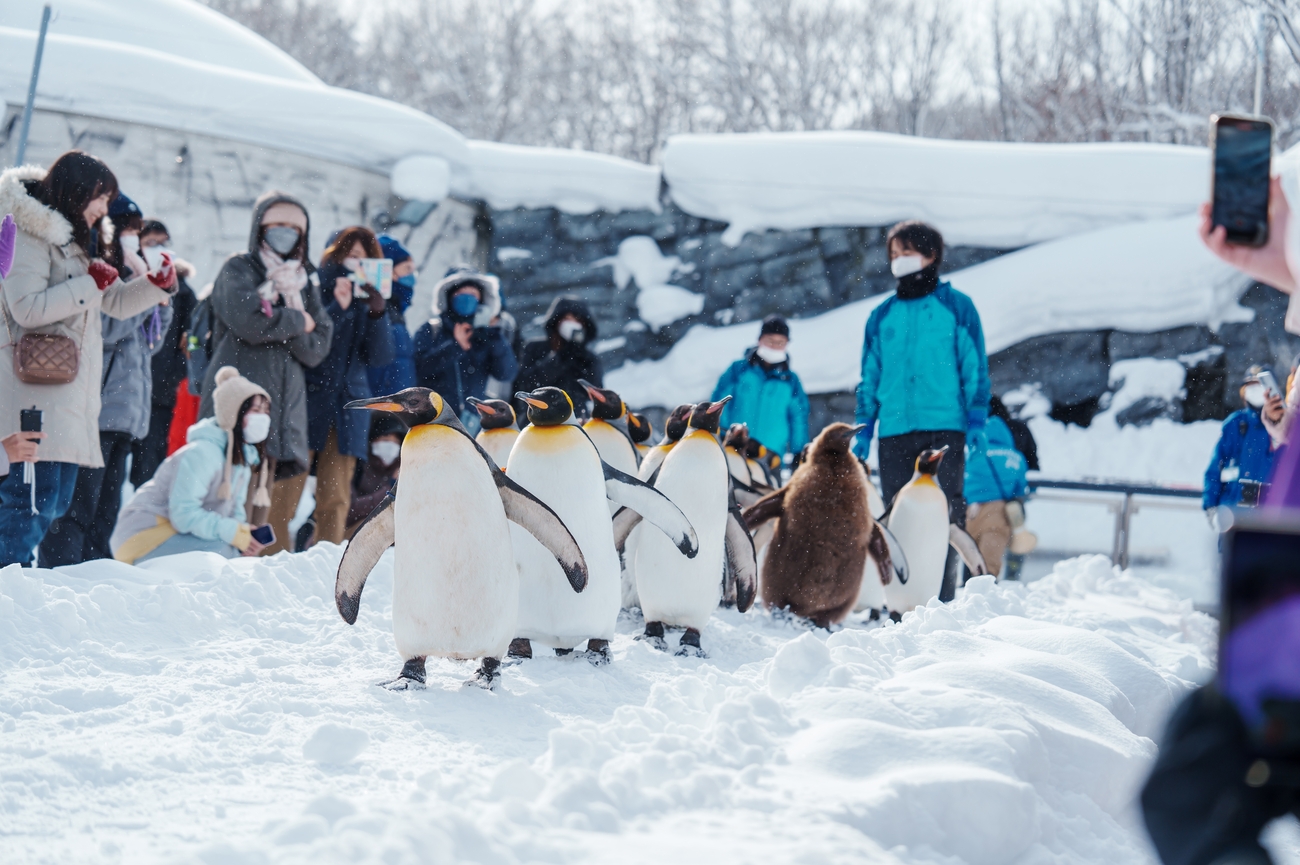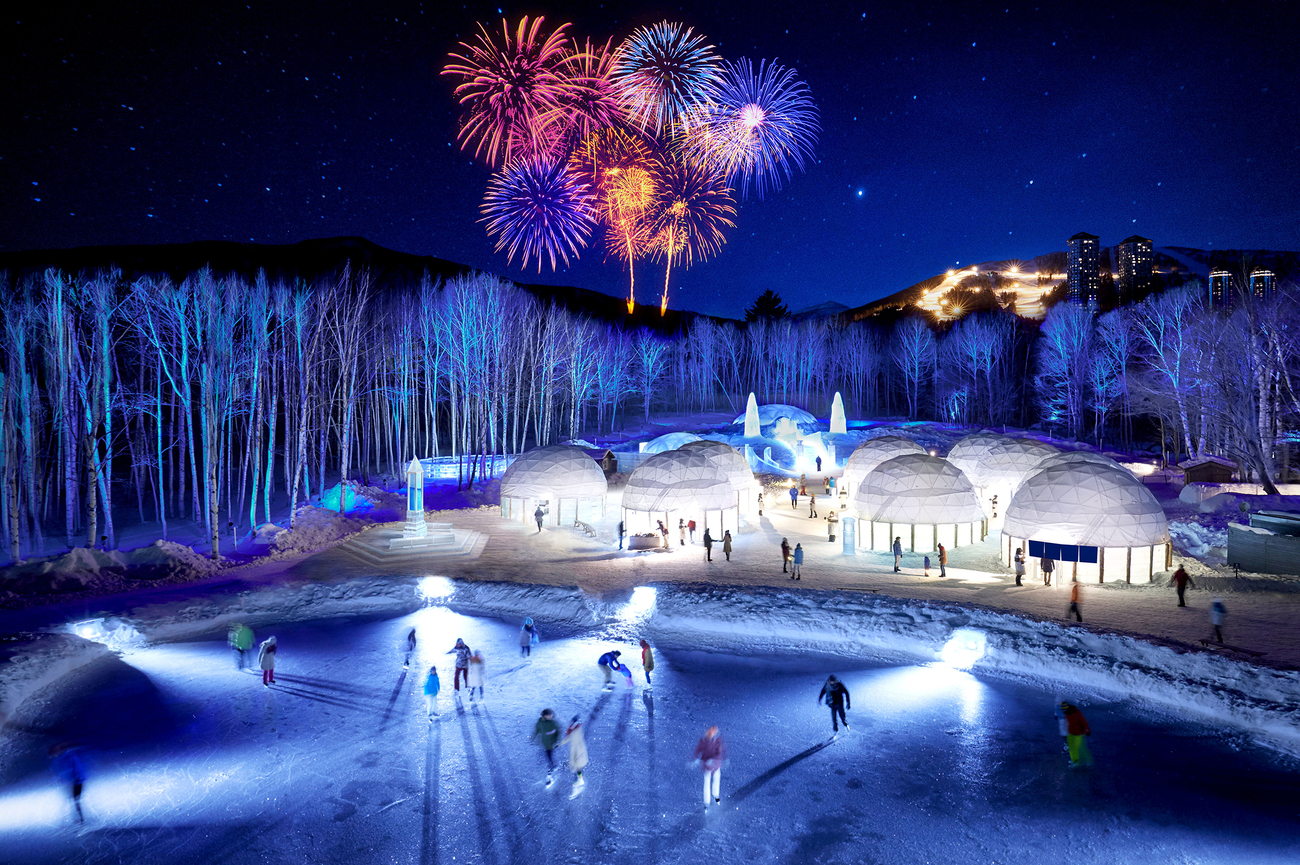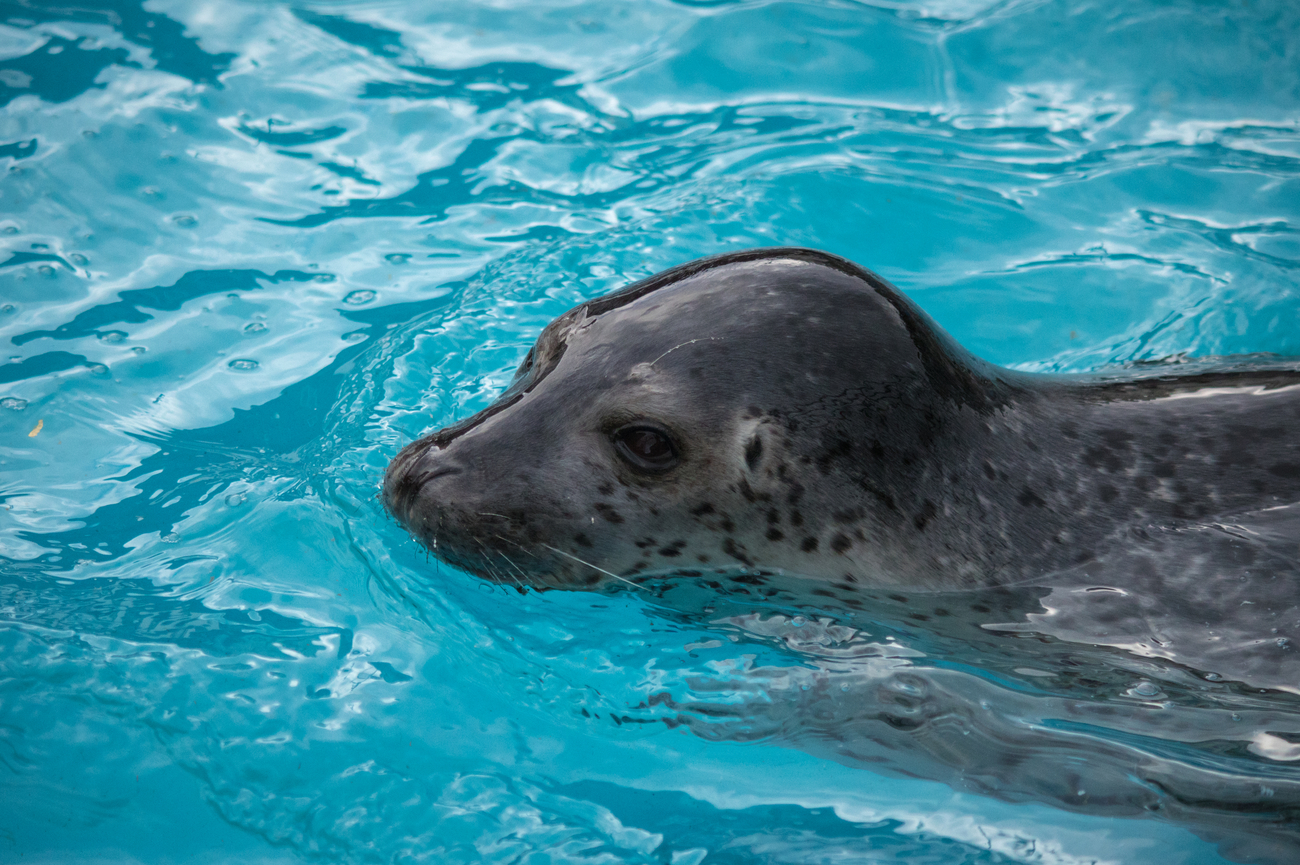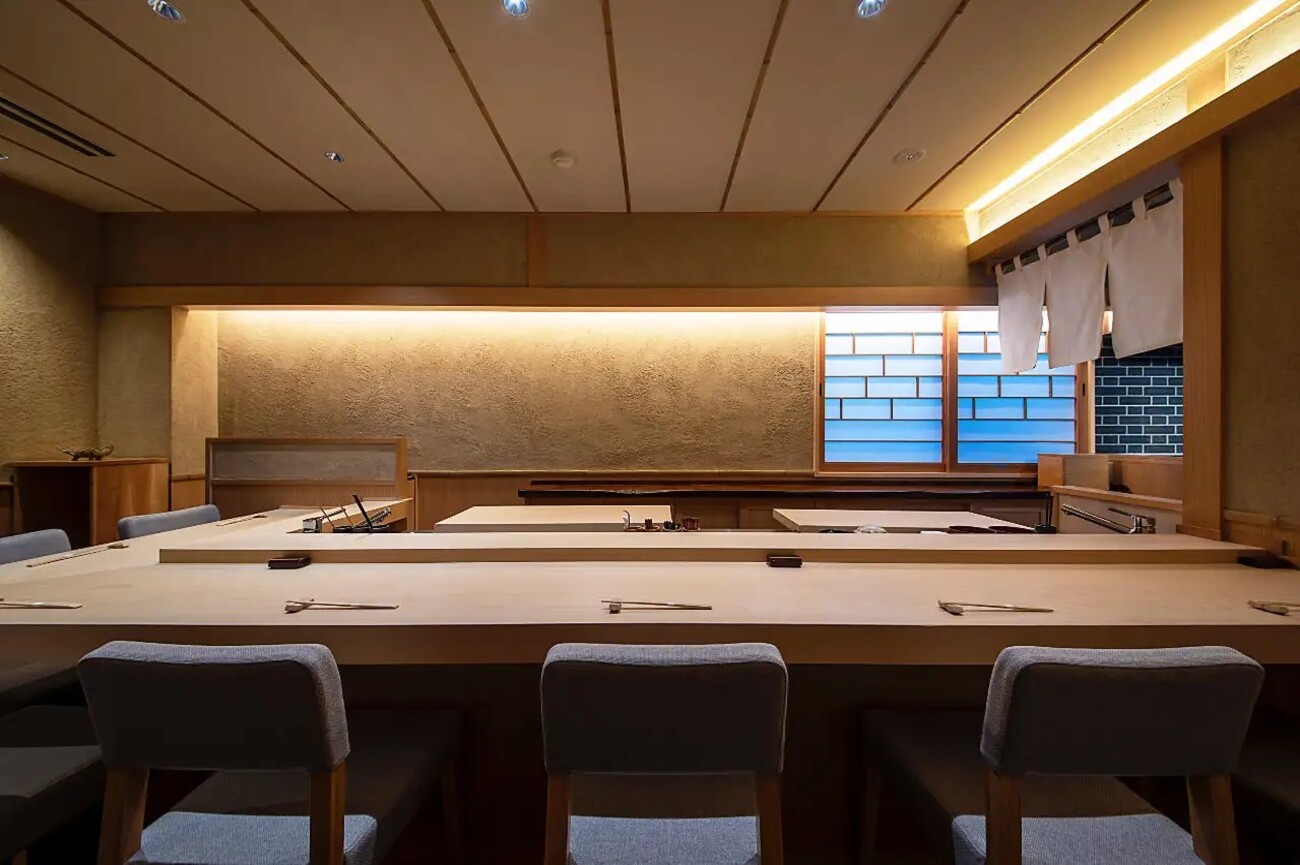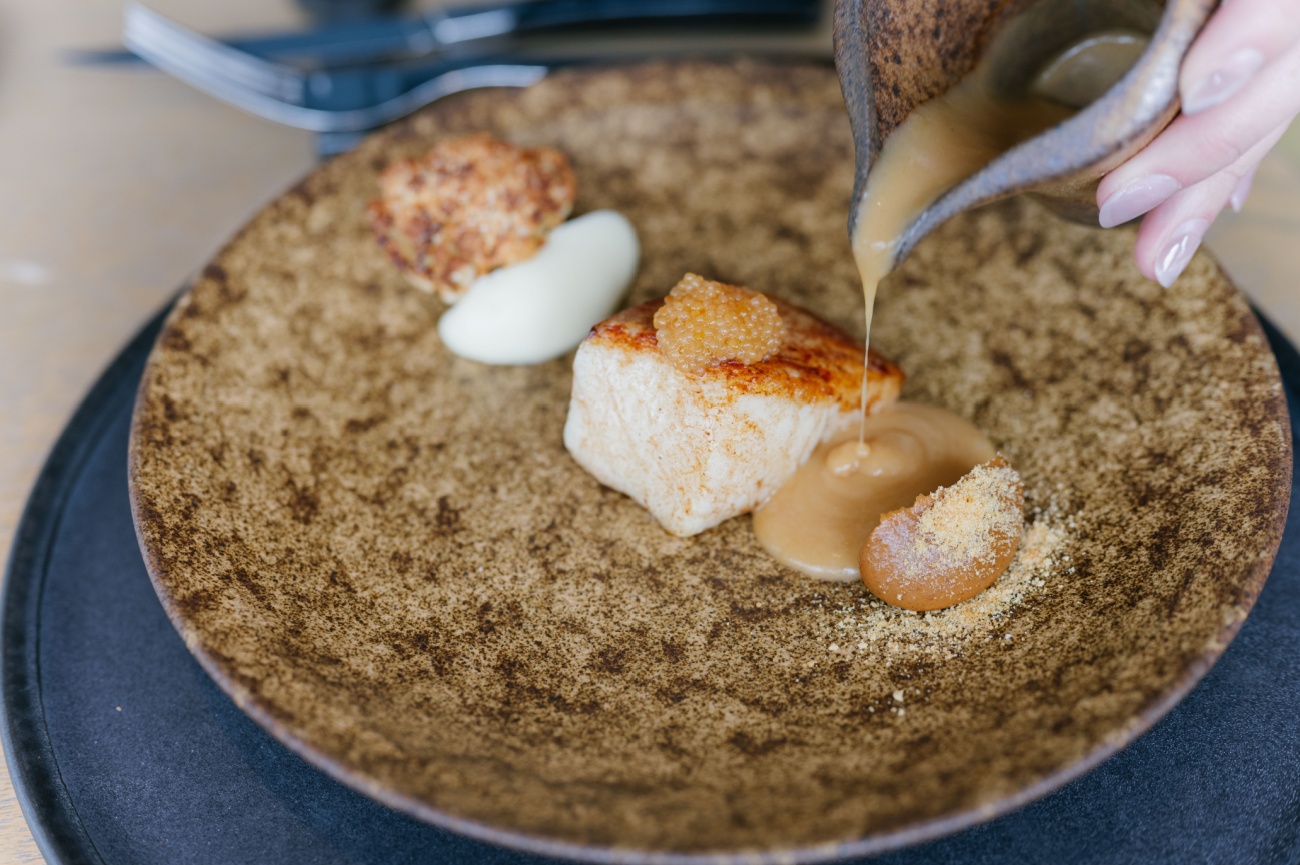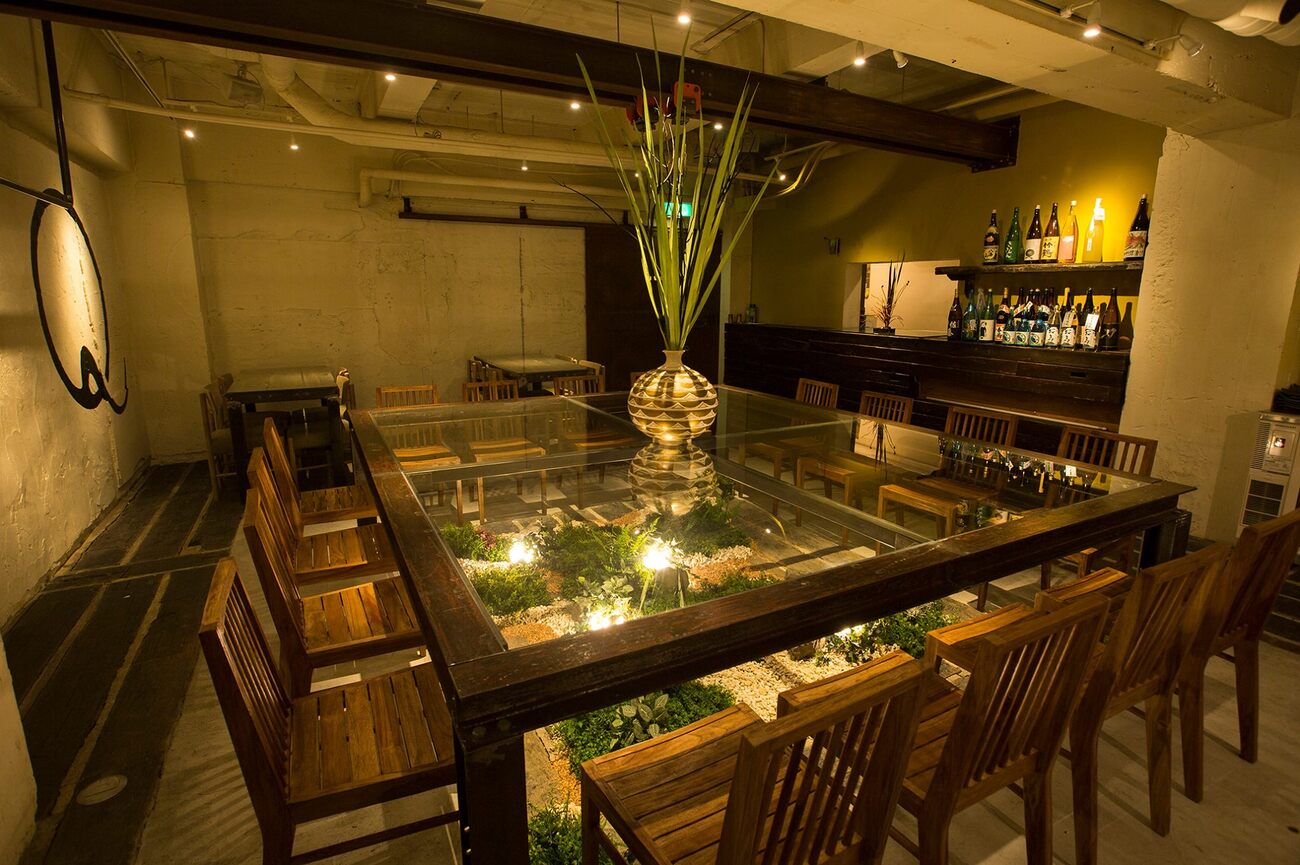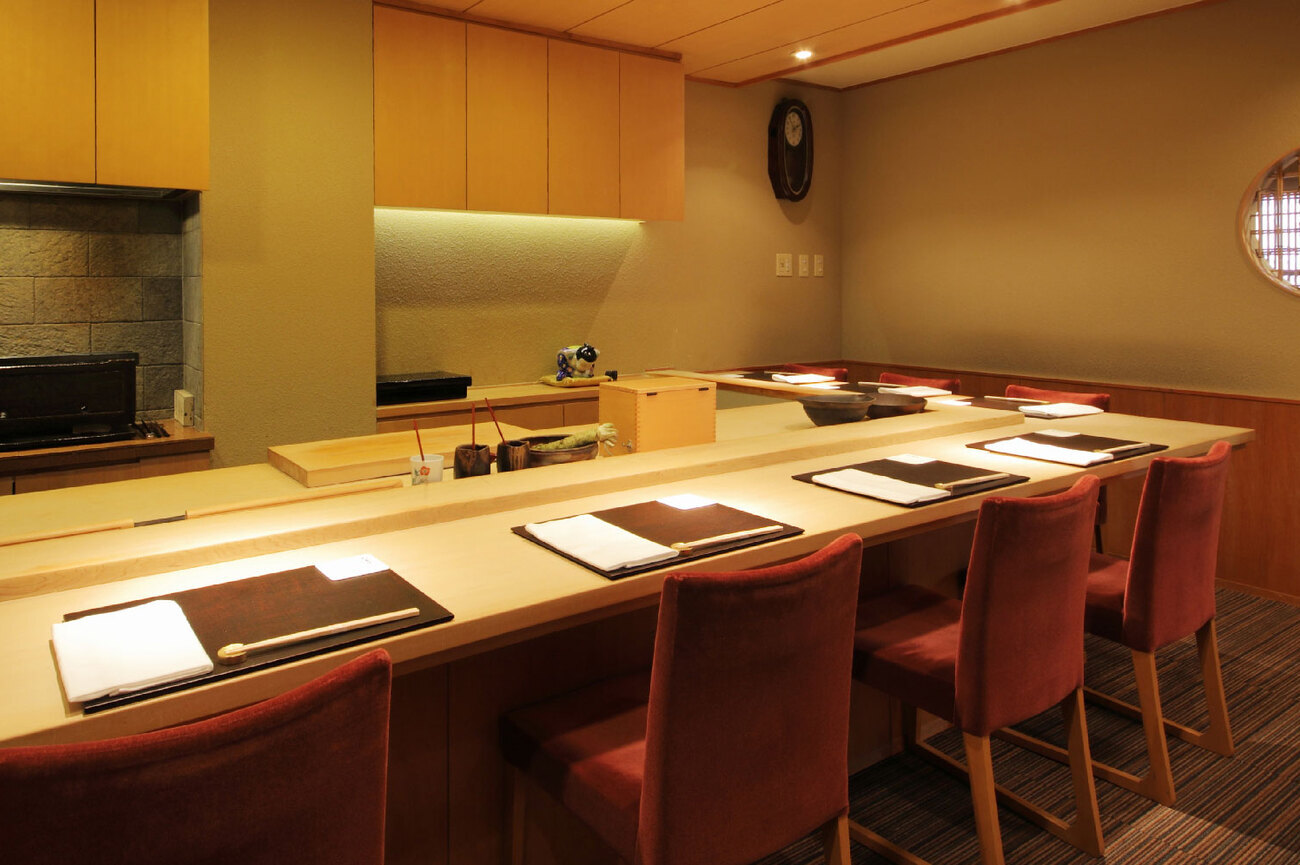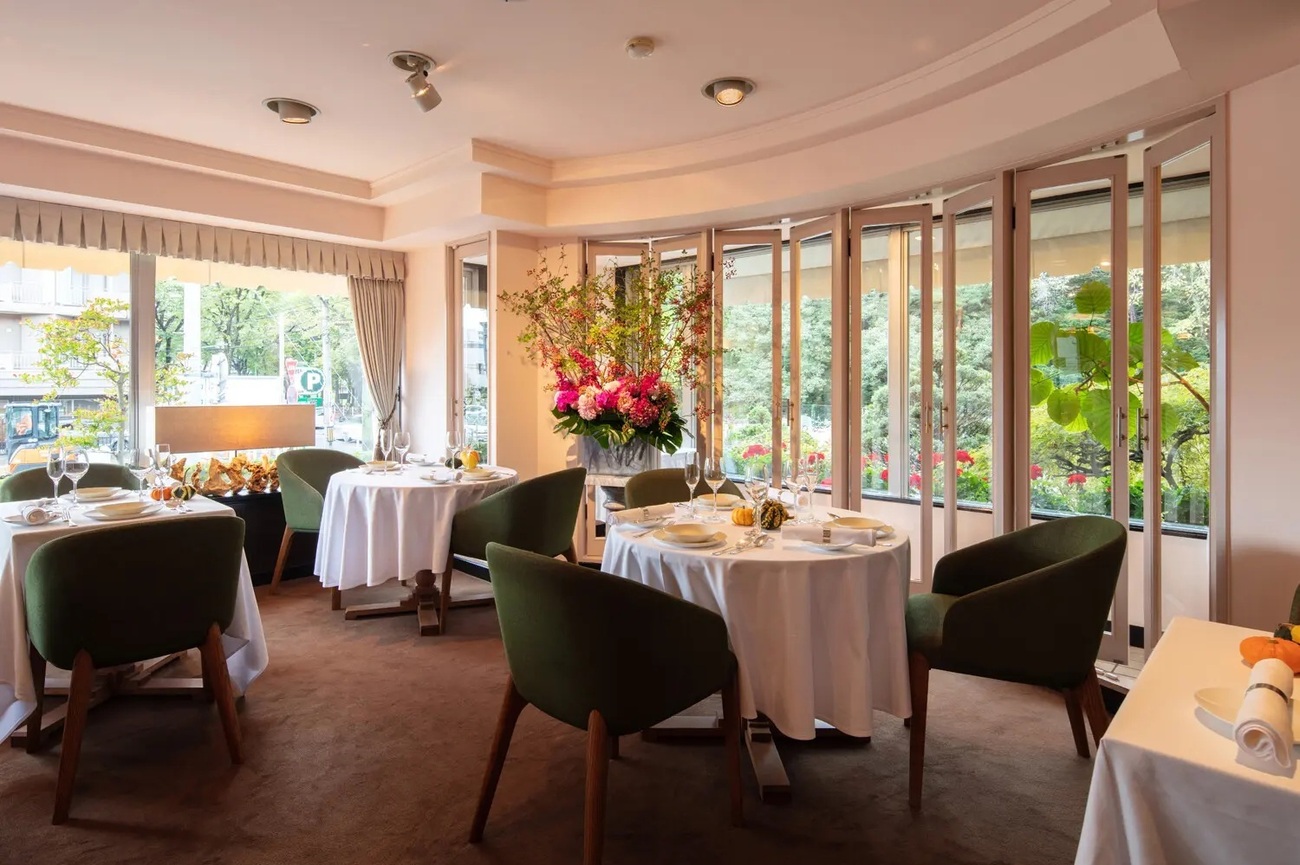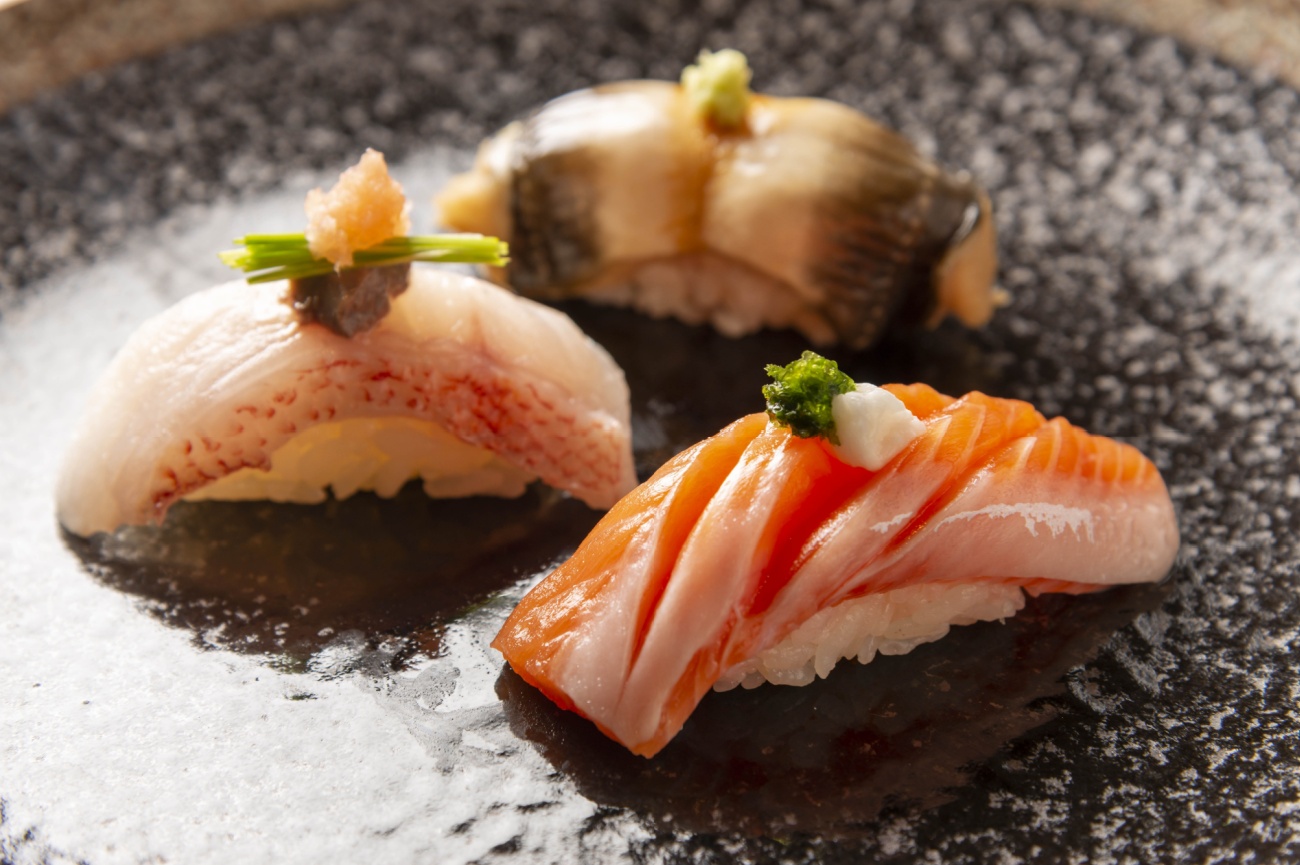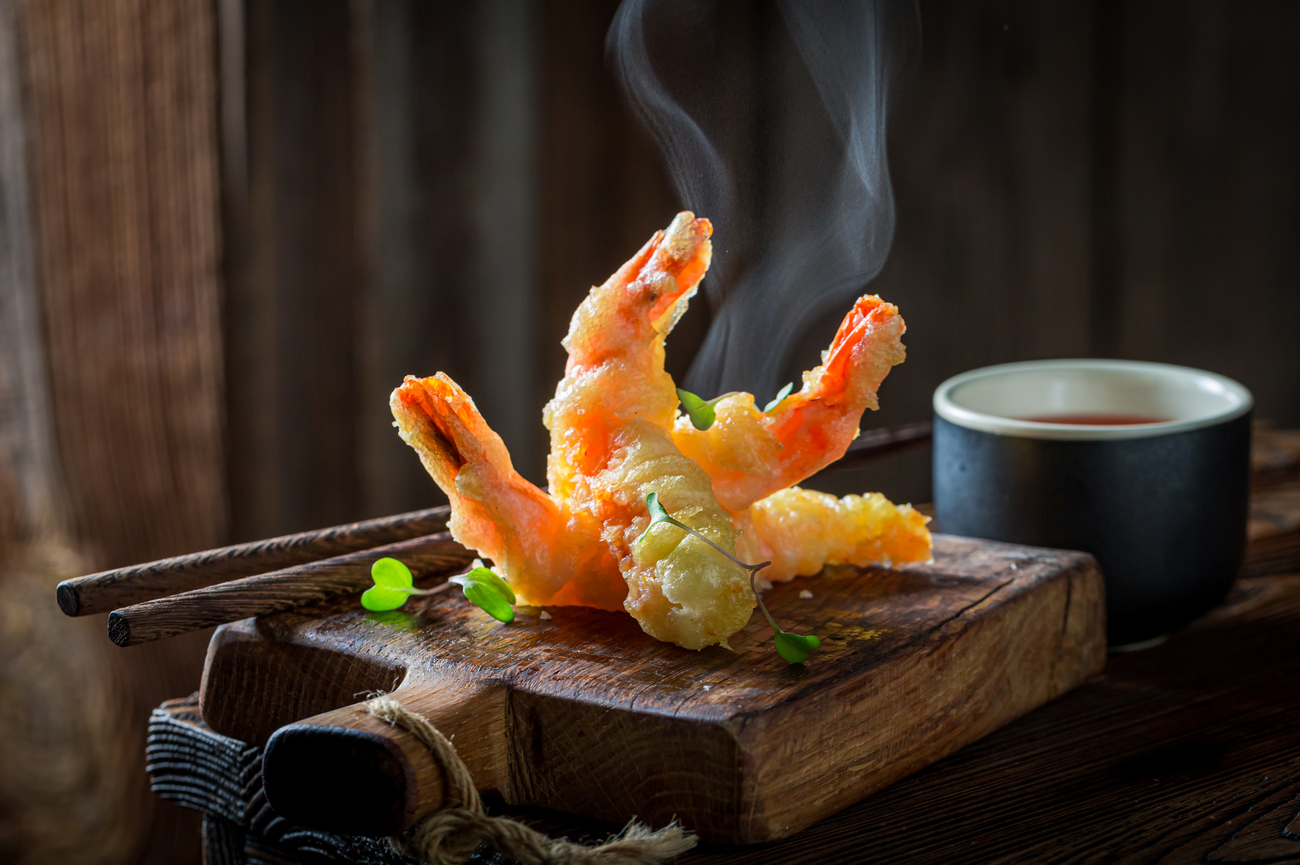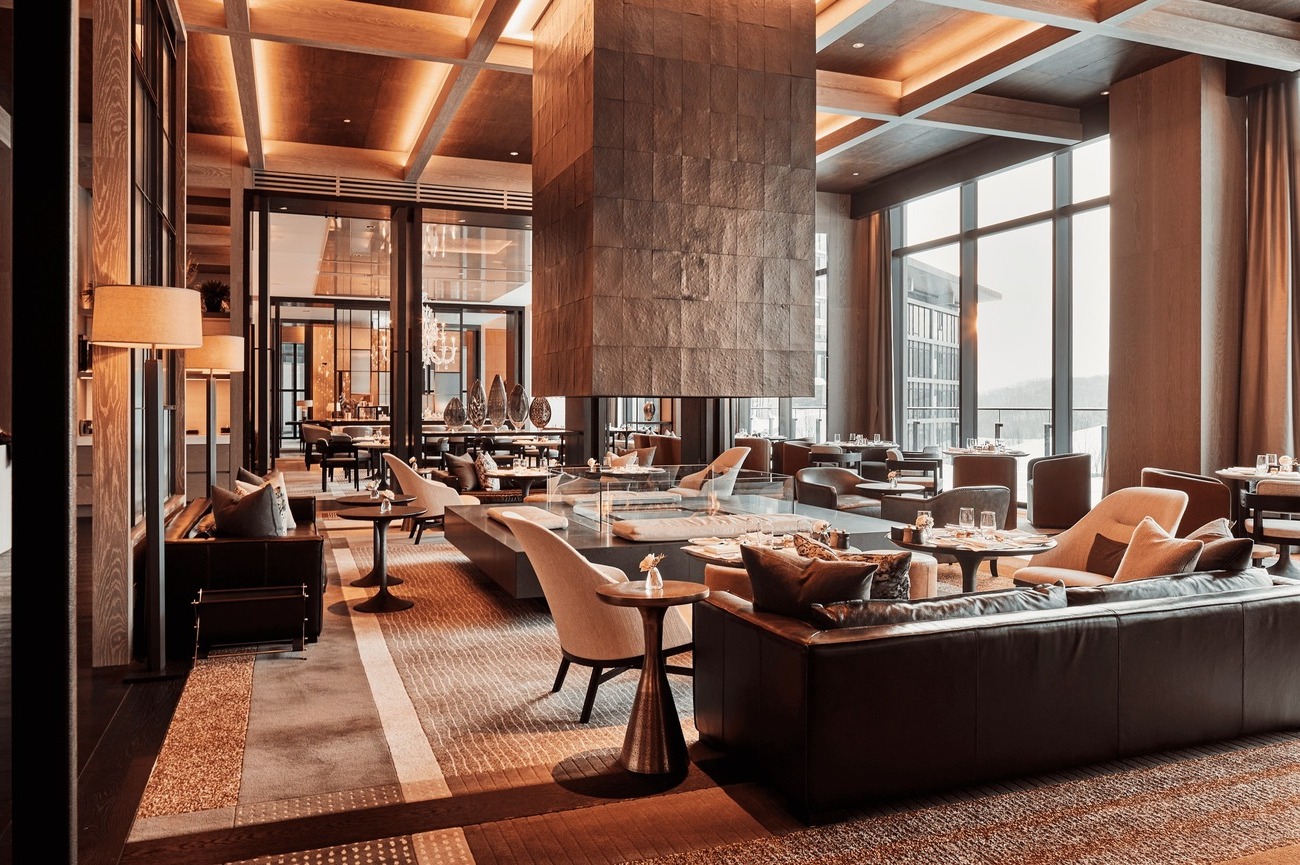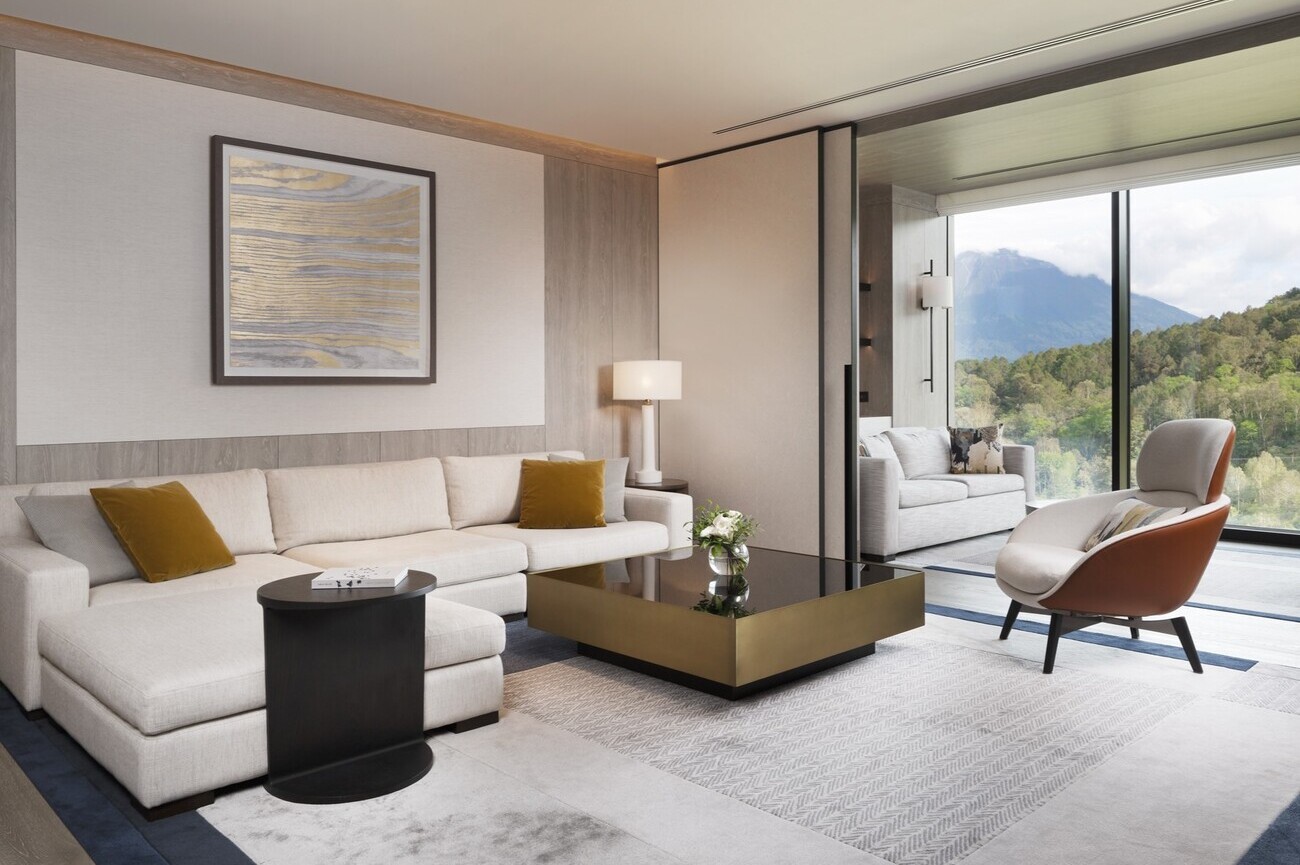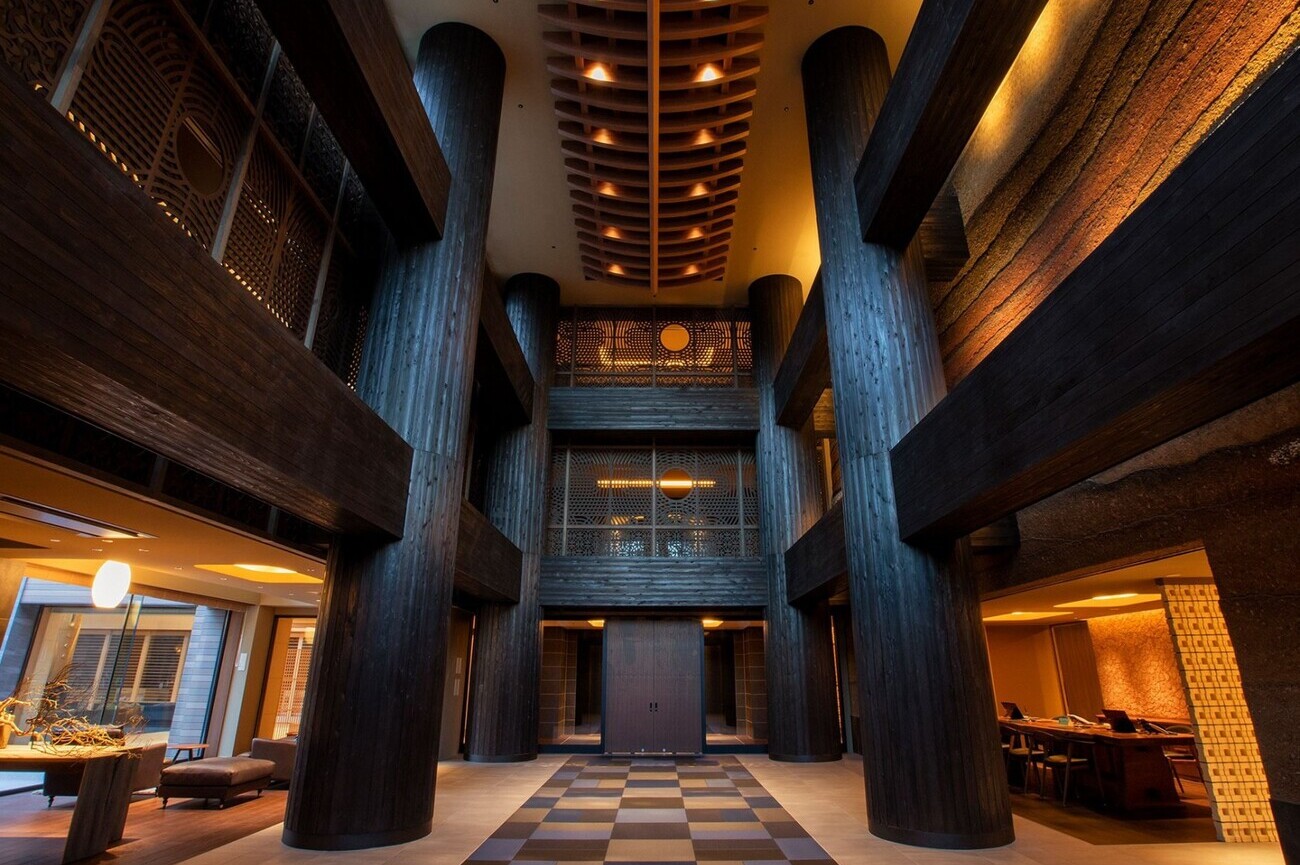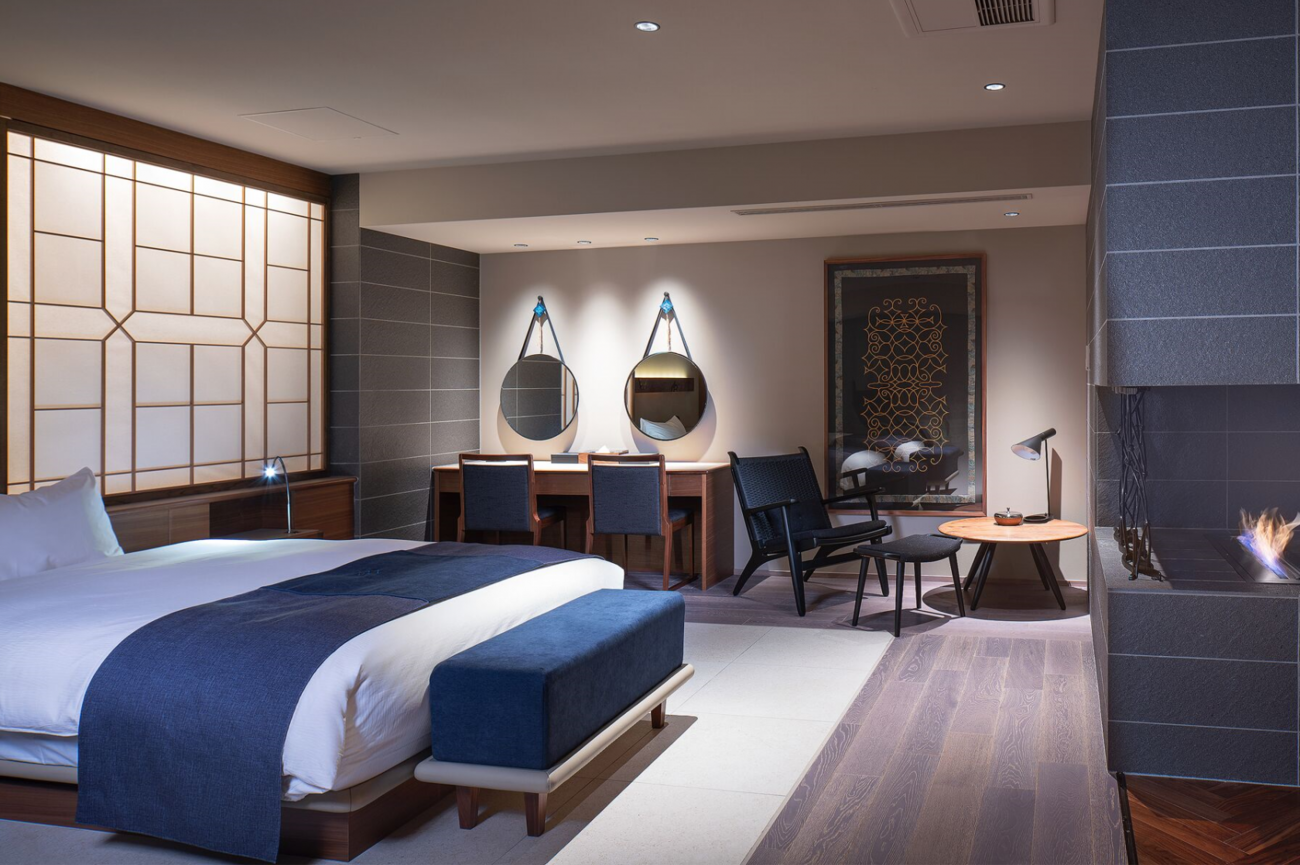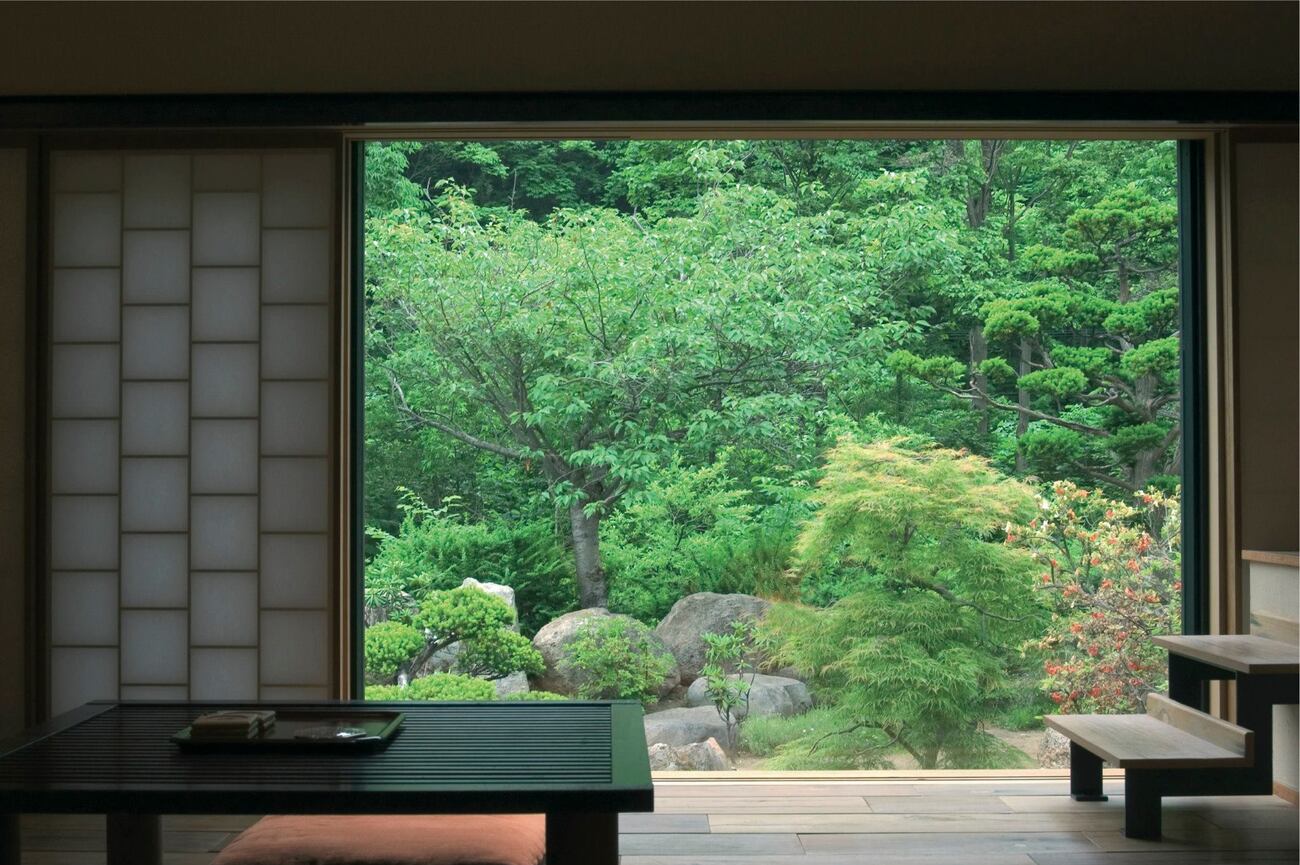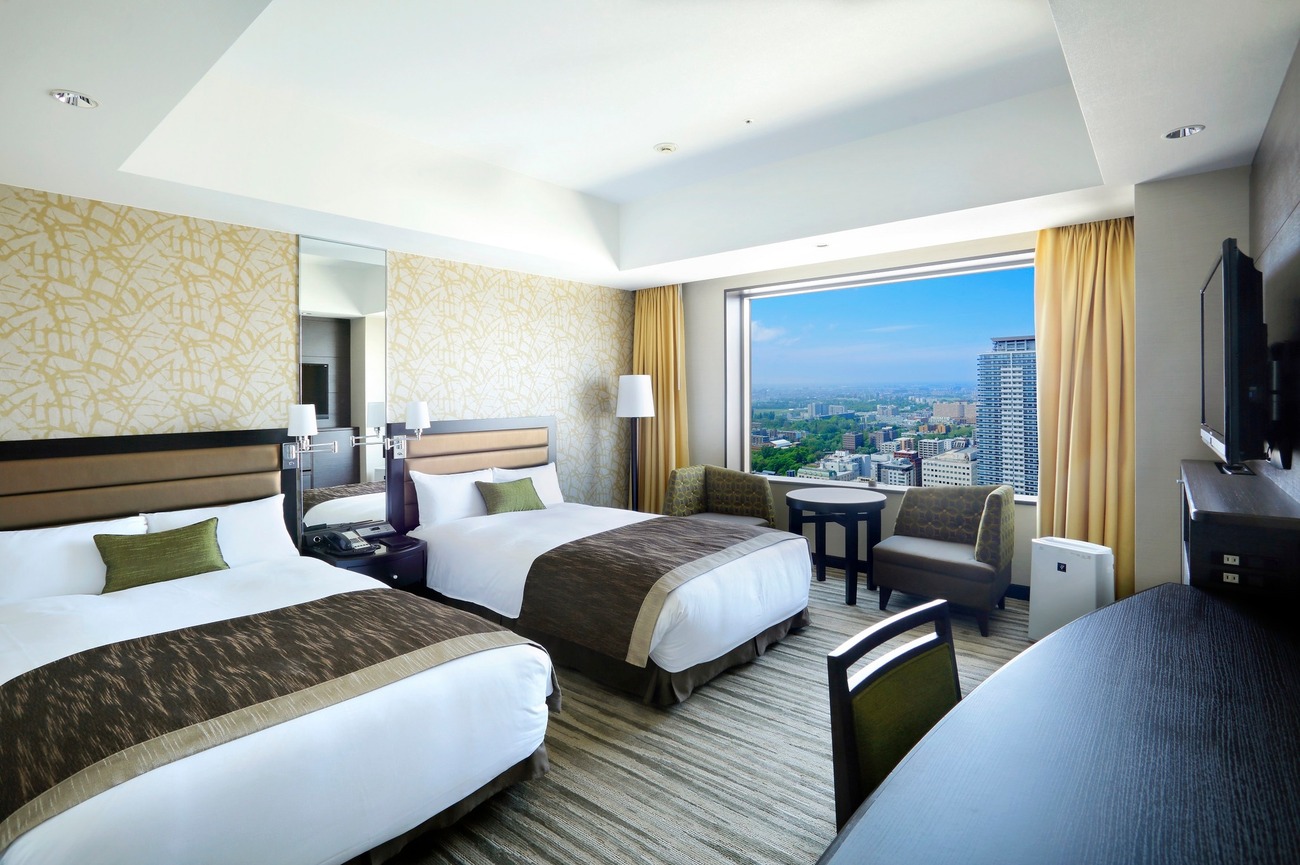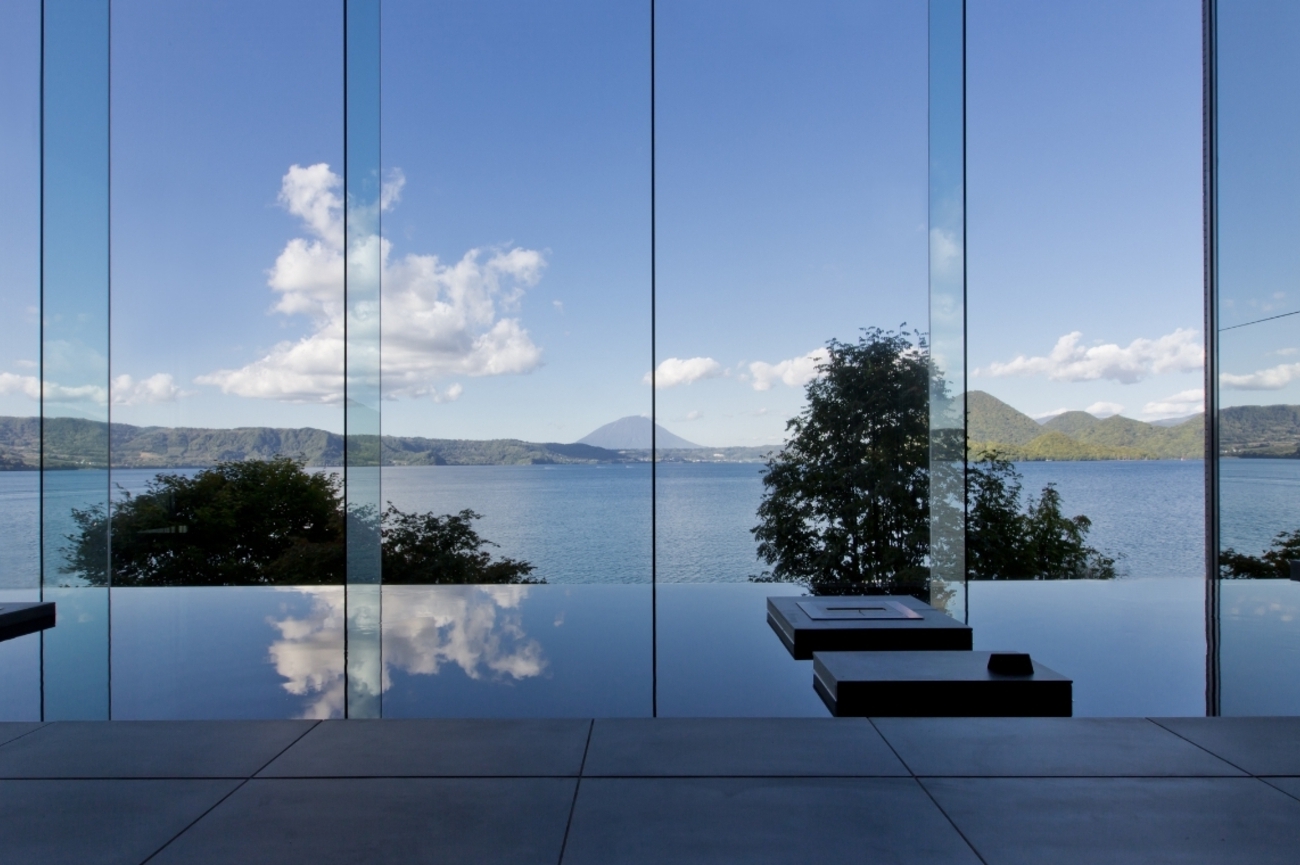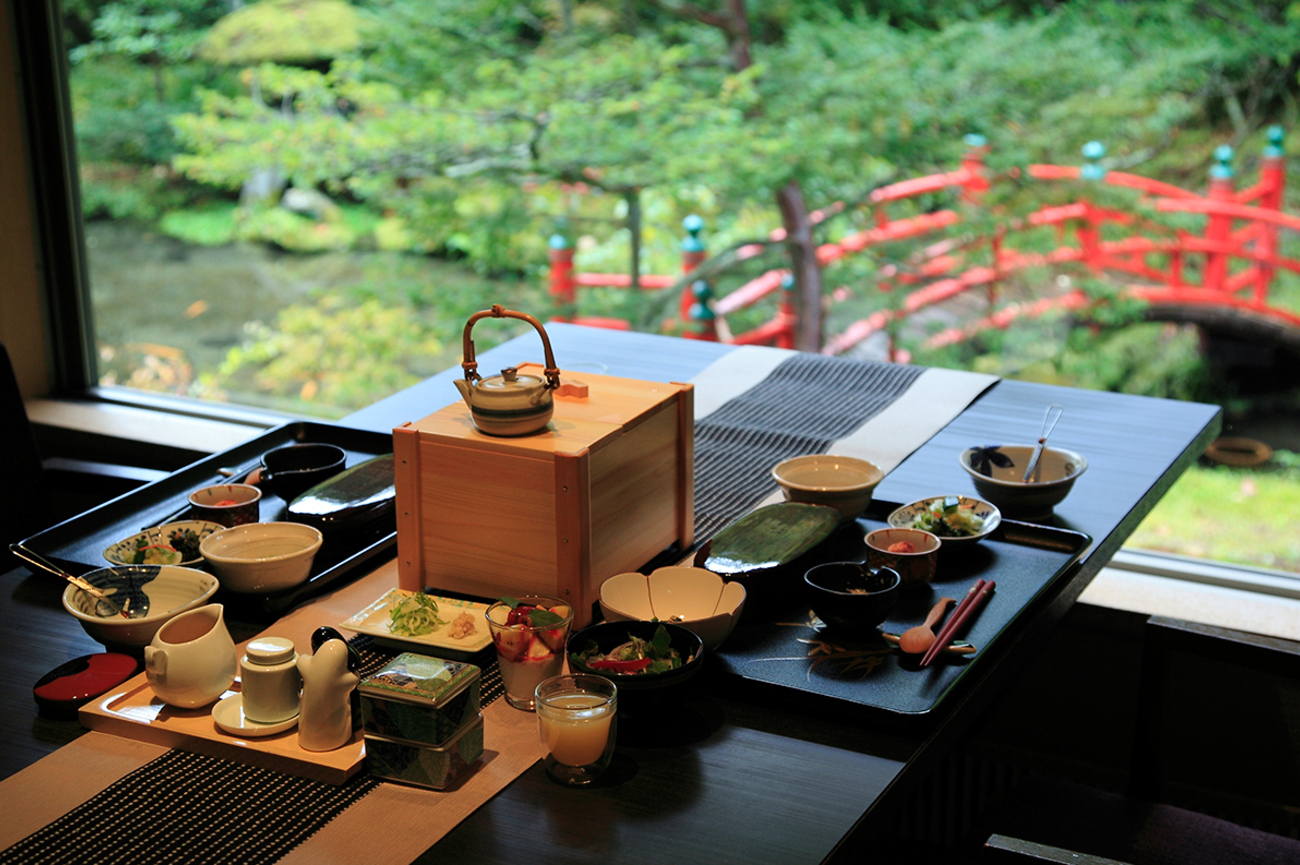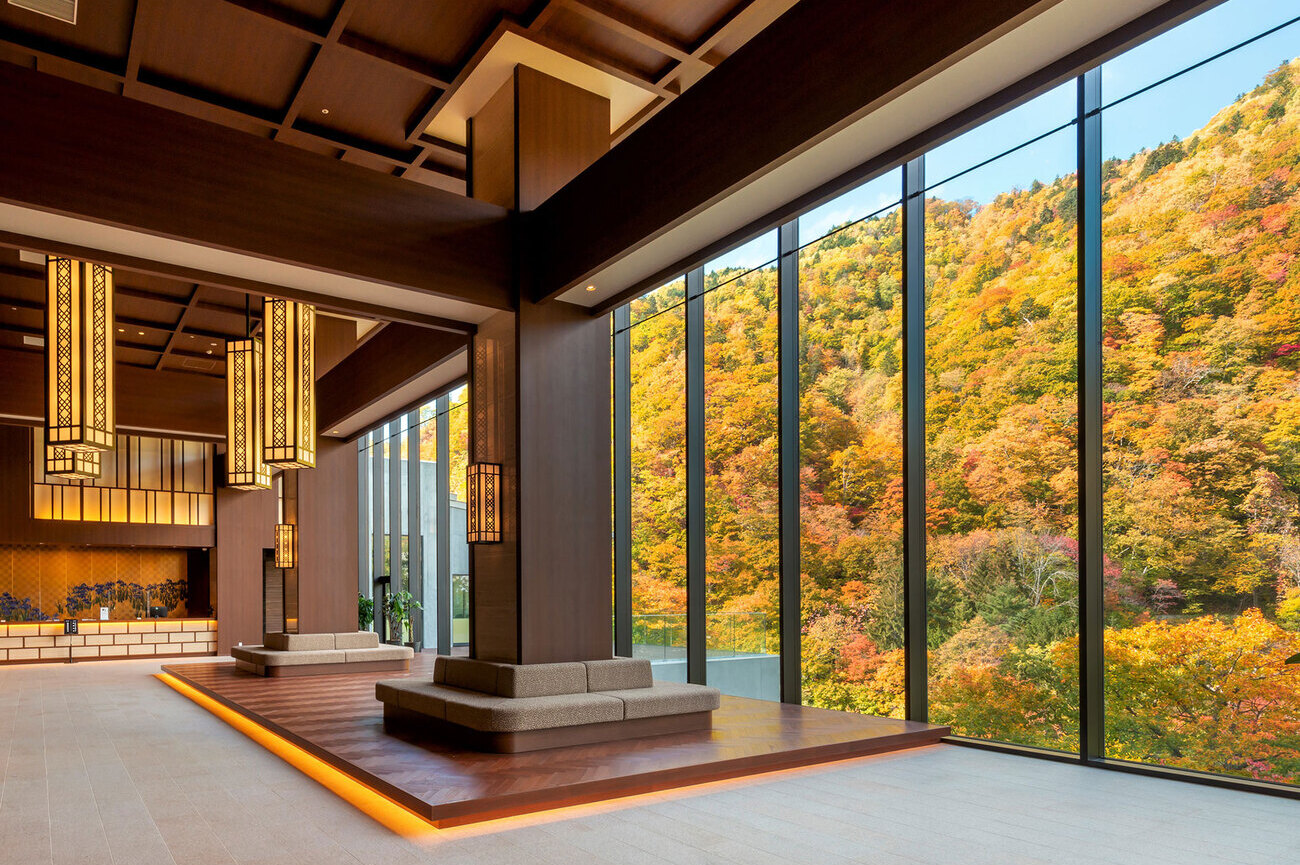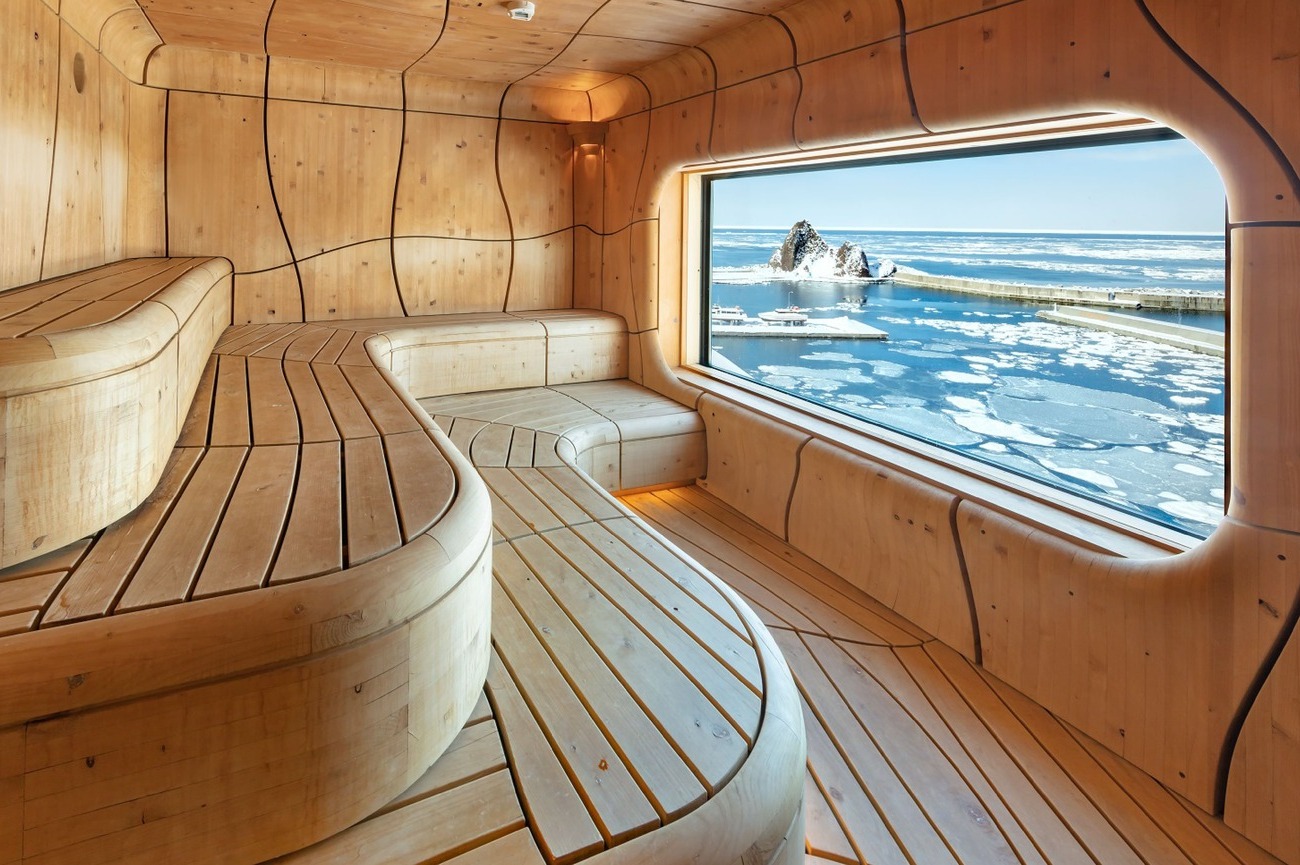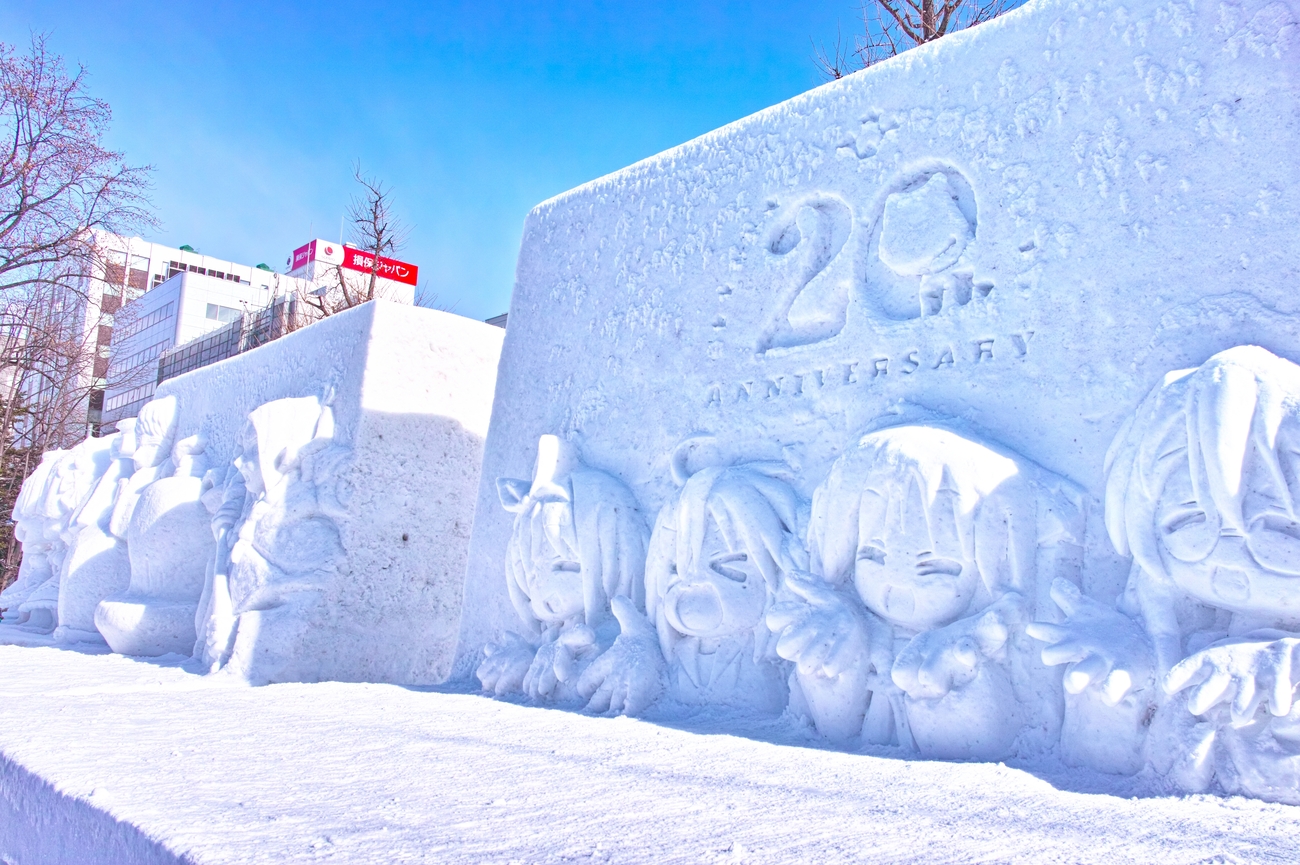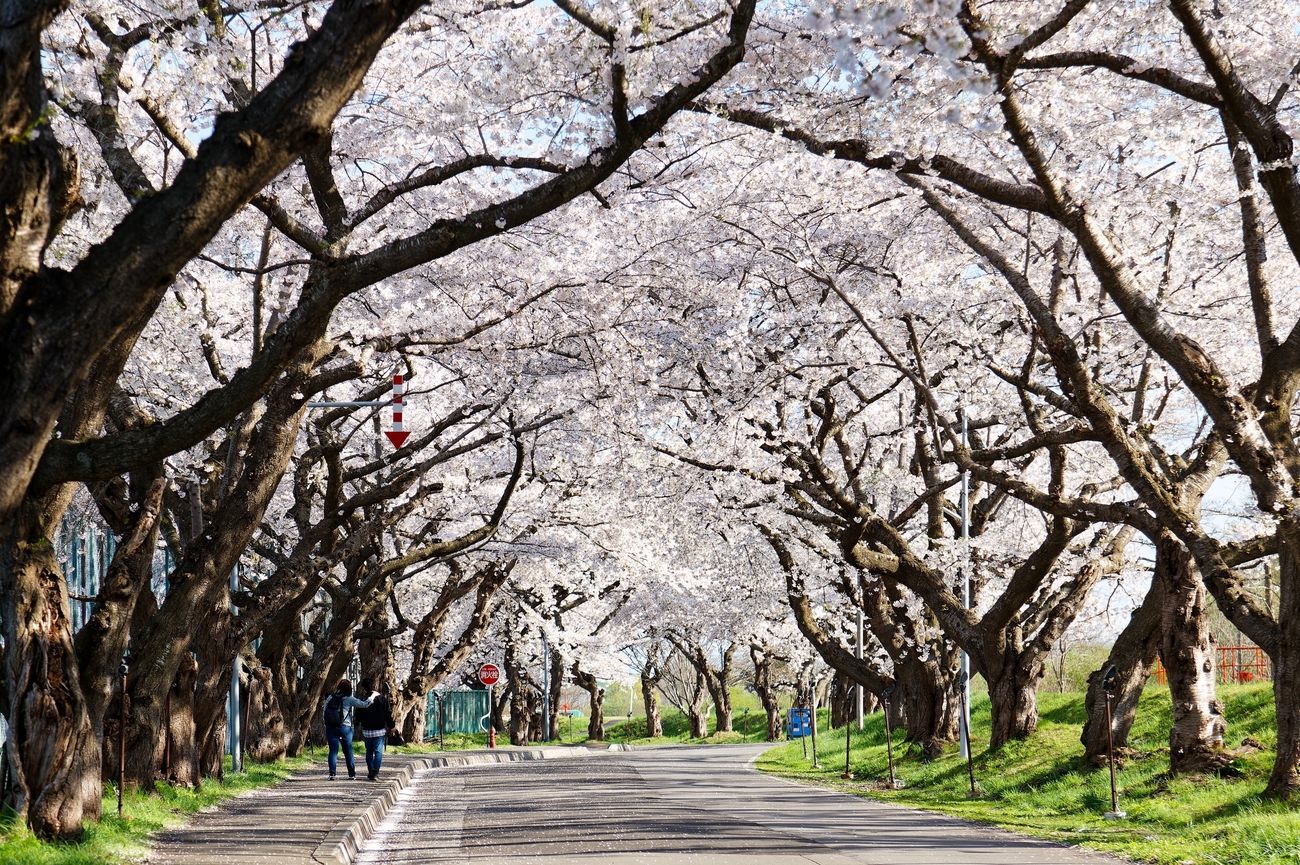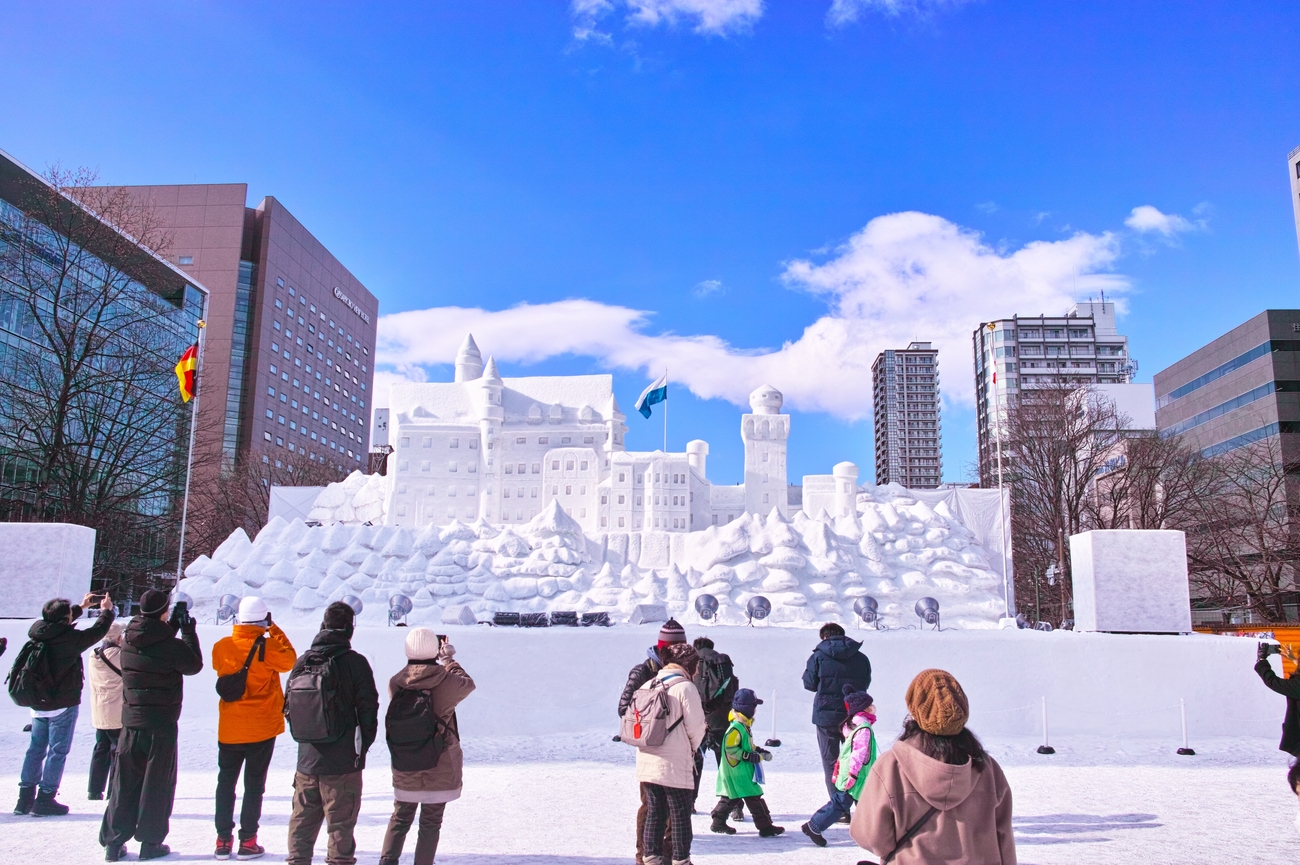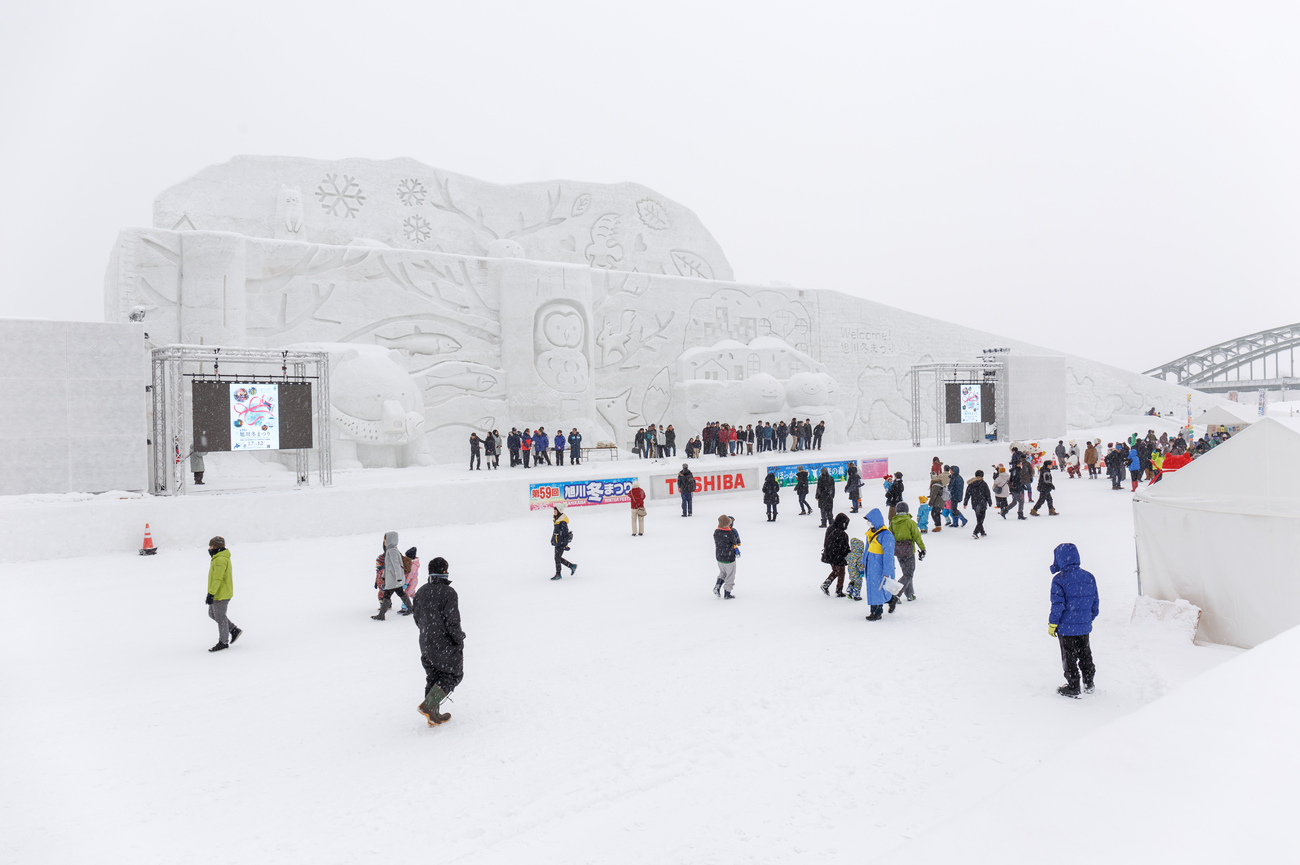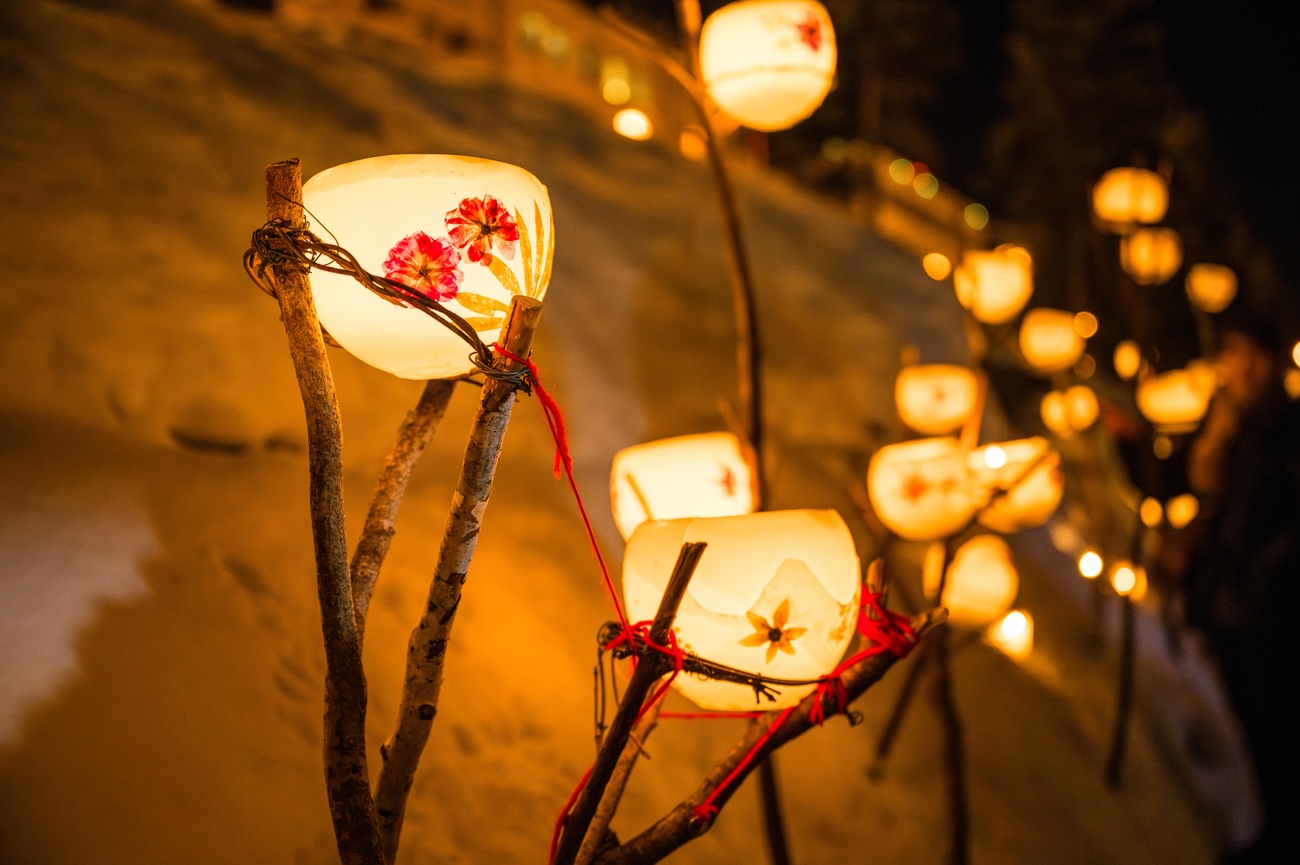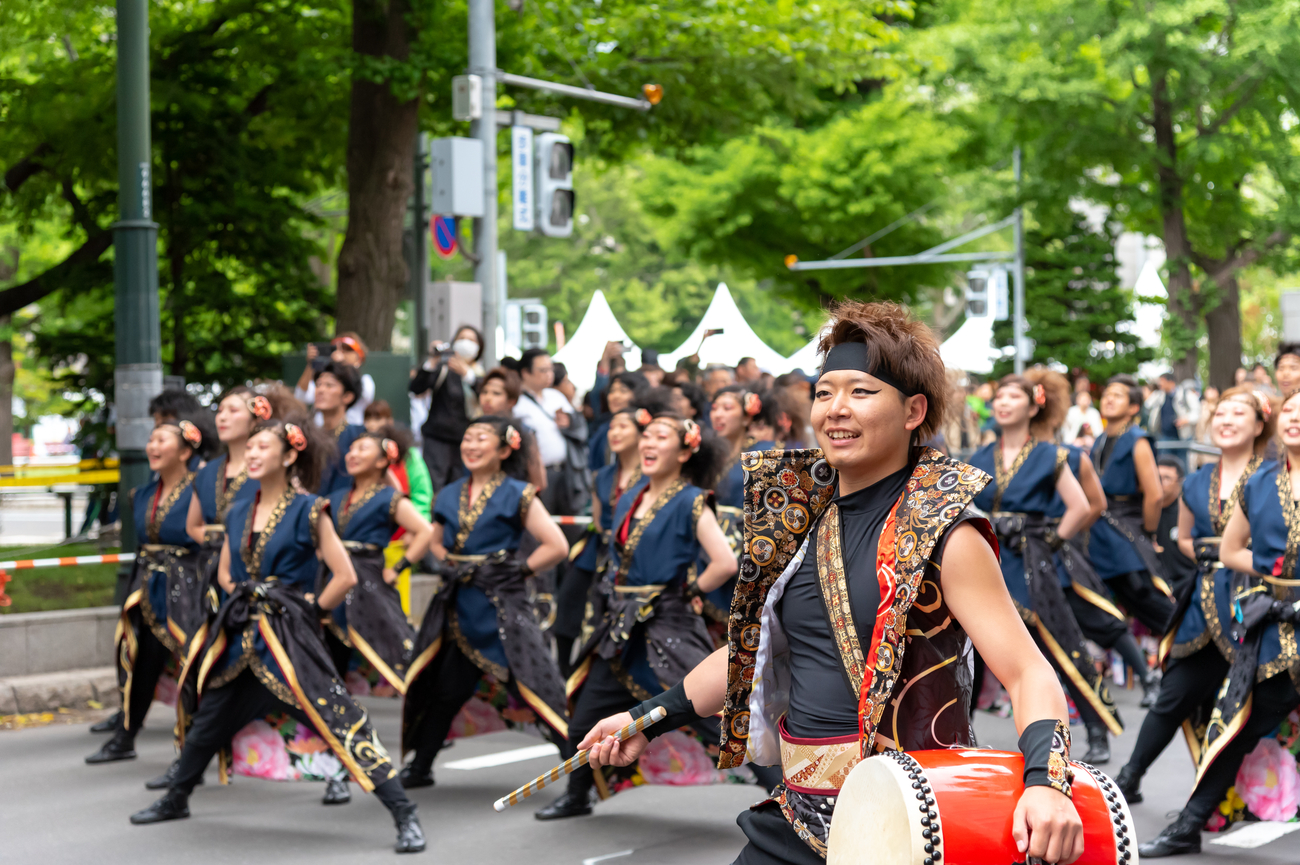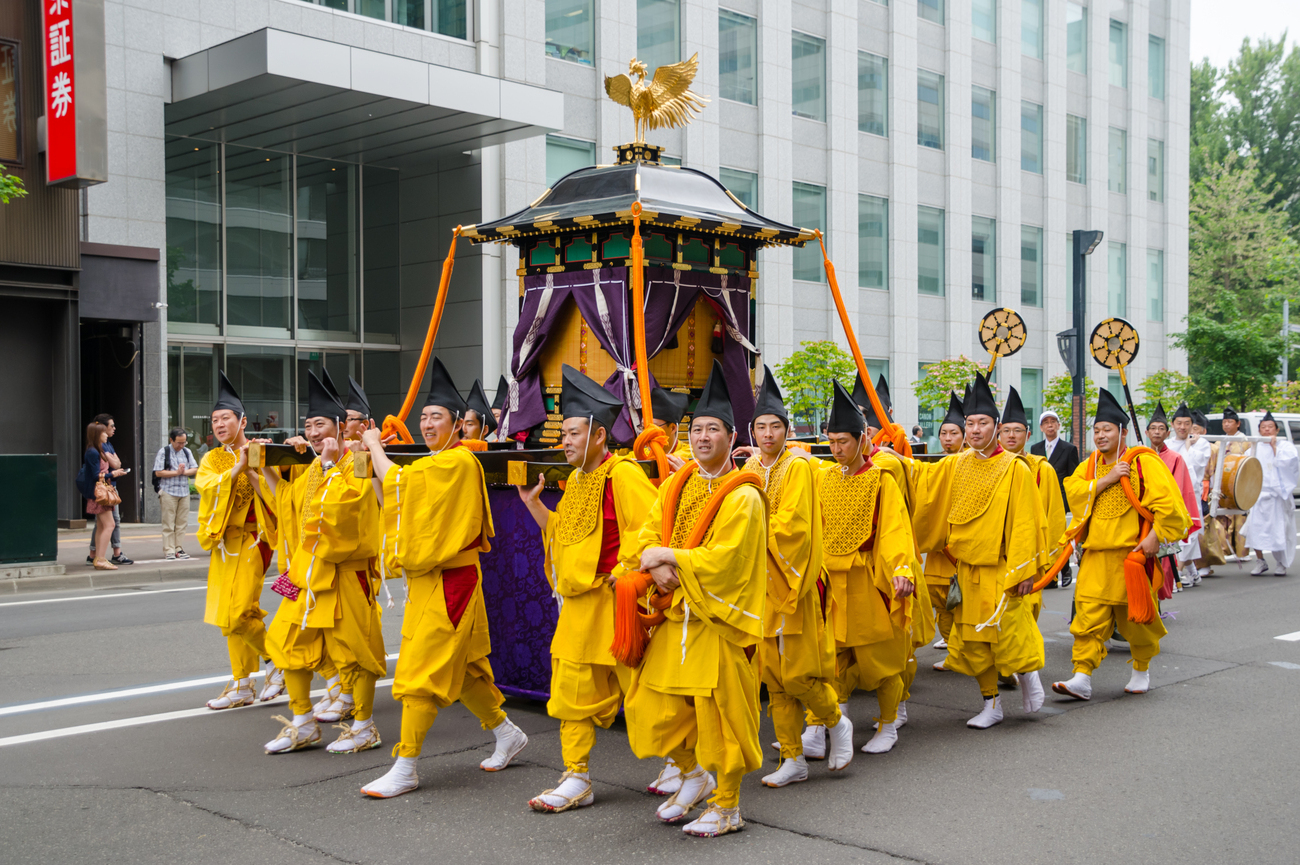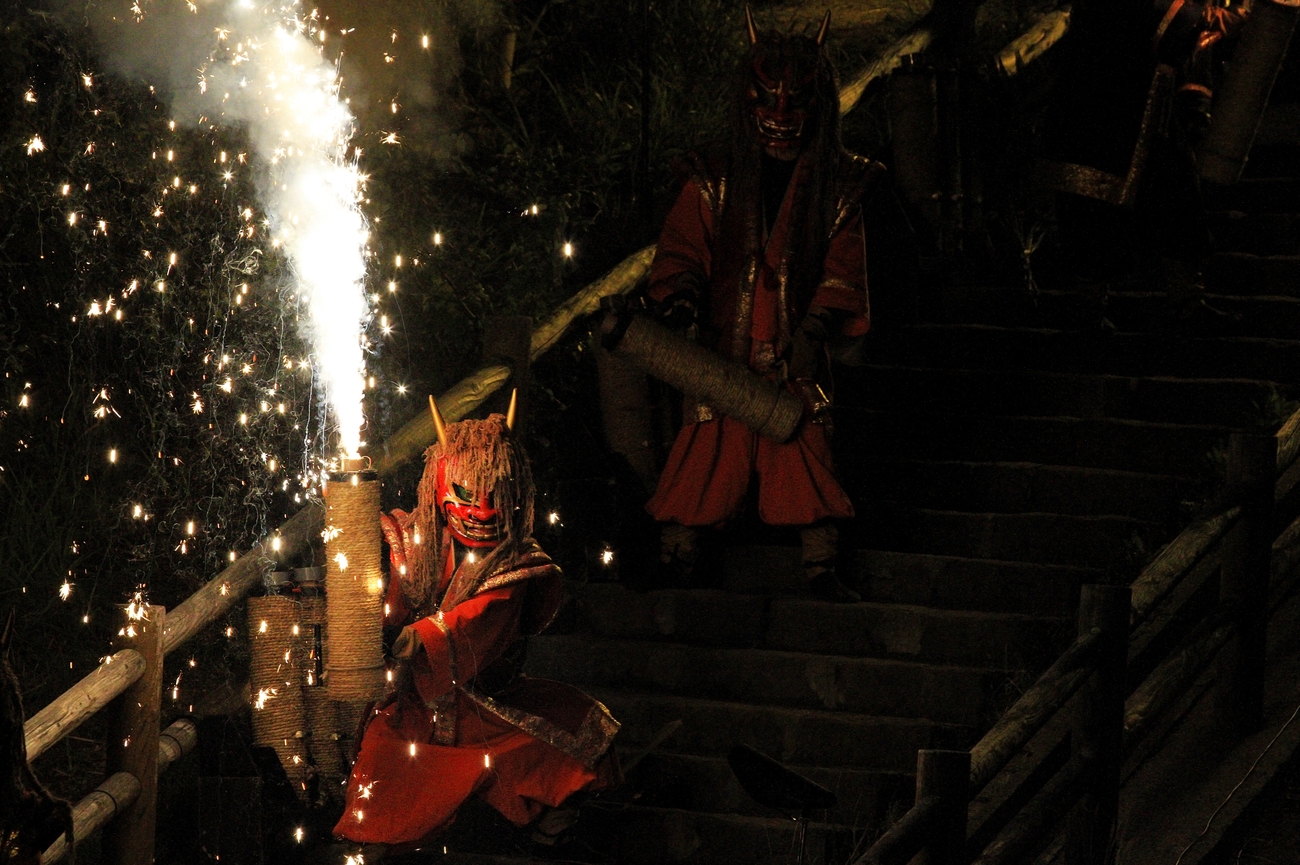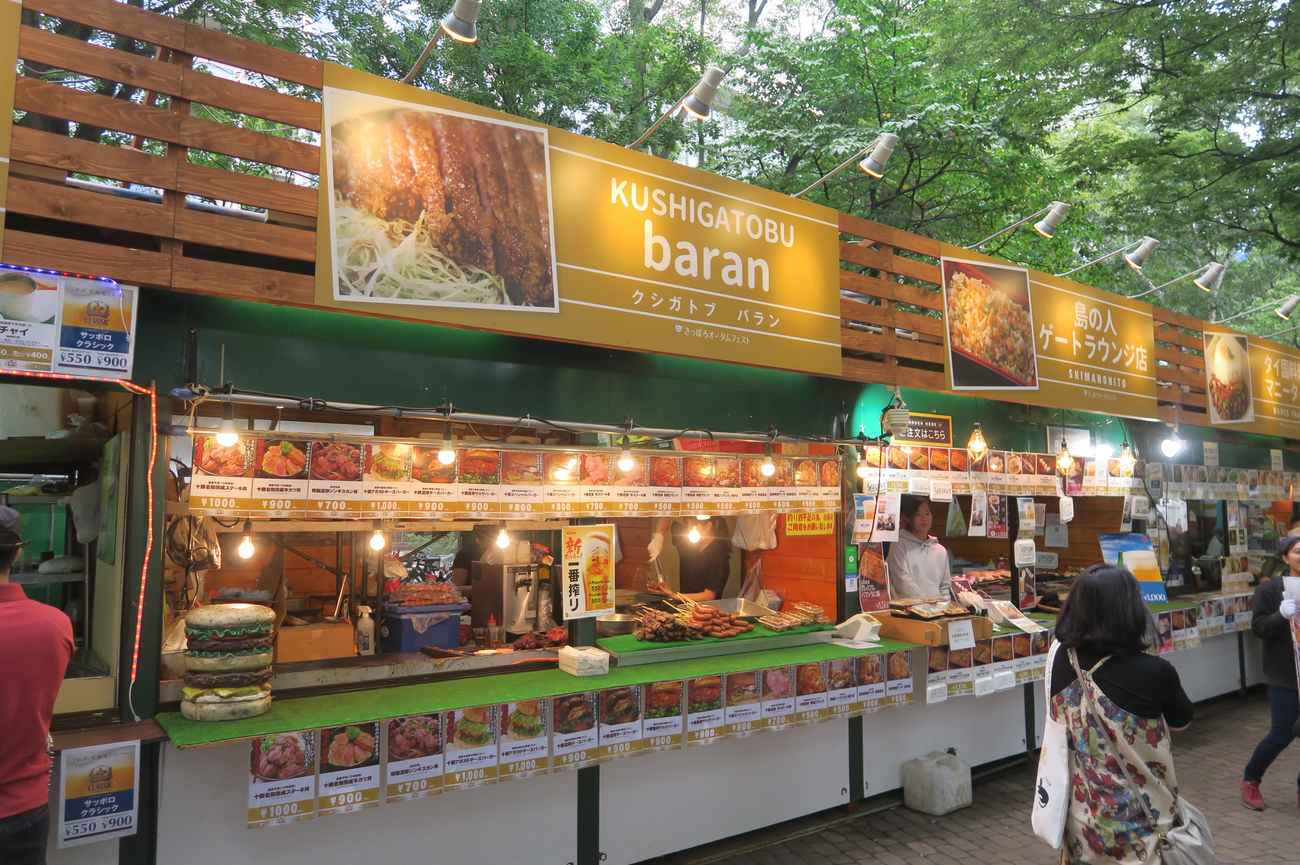Things to Do in Hokkaido Island: 5-Day Itinerary
Hokkaido Island offers a different kind of Japanese journey, far from the neon lights and busy streets of Tokyo or the timeless shrines of Kyoto. Here, nature is the main character. From the volcanic rhythms of Noboribetsu’s steaming valleys to the perfect symmetry of Mount Yōtei, from flower-painted hills in Furano to the glassy calm of Lake Tōya, Hokkaido is a canvas of bold and gentle, wild and refined.
This five-day itinerary is curated for those who crave immersion, intimacy, and the freedom to wander without compromise. This is Hokkaido through a thoughtful, immersive lens.
Let us take you there.
Day 1

Morning: Odori Park
Your first day in Hokkaido begins with a stroll at the heart of Sapporo, Odori Park. Stretching for over 1.5 kilometres from the iconic Sapporo TV Tower to the foot of the Maruyama mountains, Odori Park is lined with seasonal flowers, water fountains, and artful sculptures. It also hosts the world-famous Sapporo Snow Festival each February.
Sapporo Clock Tower
From Odori, a short walk brings you to one of Sapporo’s most beloved landmarks, the Sapporo Clock Tower. It’s a modest, wood-framed building, built in 1878. It is the oldest surviving building in Sapporo. Inside, there’s a small museum that tells the story of Sapporo’s frontier origins.
Sapporo TV Tower
Next, take a 6-minute walk to Sapporo TV Tower. This 147-metre structure is more than a broadcasting tower, it’s one of Sapporo’s most iconic landmarks. Ride the elevator to the Observation Deck, 90 metres above the city, where you can enjoy stunning views of Sapporo, you may also catch a glimpse of Mount Moiwa in the distance.
Day 1, Morning - Hokkaido Tour Map
Afternoon: Hokkaidō Jingū Shrine
Located in the Maruyama forest, Hokkaidō Jingū is the most important Shintō shrine in Hokkaido, a sacred space that honours not only deities, but the pioneering spirit of those who shaped Japan’s northernmost island. Locals come here to pray for good fortune.
Sapporo Hitsujigaoka Observation Hill
Next, take a 30-minute drive to Hitsujigaoka Observation Hill where you’ll see sheep roaming freely. True to its name, “Hitsujigaoka” means “Sheep Hill.” Here, you’ll also find a bronze statue of Dr. William Clark, the American educator who famously inspired Hokkaido’s early pioneers. Inside the observation hall, you’ll find exhibits on Sapporo’s agricultural history and a cozy café serving soft-serve ice cream made from local milk.
Moerenuma Park
Designed by legendary Japanese-American sculptor Isamu Noguchi, this 189-hectare park is a living sculpture. At its heart stands the crystalline Glass Pyramid "HIDAMARI", housing galleries, cafés, and skywalks. You may rent a bike to fully appreciate the park’s scale and architectural beauty.
Susukino Street
End your day in Susukino, Sapporo’s culinary soul. Stretching across a dense grid of alleyways, high-rises, and lantern-lit arcades, Susukino Street is the place to taste Sapporo ramen, grilled jingisukan (mutton), fresh Hokkaido crab and scallops, and more. Tipping is not customary in Japan, instead, a polite bow and a simple “gochisousama deshita” (thank you for the meal) is appreciated.
Day 1, Afternoon - Hokkaido Tour Map
Day 2

Morning: Shiroi Koibito Park
Start your day with a visit to a chocolate-themed estate that looks like a British version of Willy Wonka. Inside, you’ll see artisans make the beloved white-chocolate ‘langue de chat’ through glass-paneled kitchens. You may also try decorating your own custom cookie, or wander through the Chocolate Time Tunnel, which gives you a brief global and local history of cacao. Try their famous soft serve ice cream made with Shiroi Koibito chocolate.
Tanaka Sake Brewery
From Shiroi Koibito Park, take a 21-minute drive west to the coastal town of Yoichi, Tanaka Sake Brewery. Established in 1899, it’s one of the oldest sake breweries in the region. Inside, you’ll get to explore the fermentation rooms, learn about the delicate dance of rice polishing and koji cultivation, and of course, to taste.
Day 2, Morning - Hokkaido Tour Map
Afternoon: Otaru Canal
After lunch, head over to Otaru Canal. Once the lifeline of Hokkaido’s commerce in the early 20th century. Today, it offers a slow stroll through history through its ivy-clad façades, softly flickering lanterns, and the salty breeze of the nearby sea. Many of the restored red-brick warehouses now house artisan boutiques, glass workshops, sake bars, and cafés.
Otaru Shukutsu Panorama Observation Deck
From Otaru Canal, take a 13-minute drive to one of Otaru’s best-kept secrets, the Shukutsu Panorama Deck. from here you can see the Sea of Japan stretching endlessly into the horizon. It’s a favourite among local photographers and those who love to watch the sunset.
Mt. Tengu (Tenguyama)
Cap off your day on Mt. Tengu, accessible by ropeway. The summit rewards you with a stunning view of Otaru’s cityscape against the sea. There’s also a café at the summit where you can enjoy a local favourite, the house-made lavender soft cream.
Day 2, Afternoon - Hokkaido Tour Map
Day 3

Morning: Farm Tomita
Wake up early and make your way to Farm Tomita. Best known for its world-famous lavender fields, this family-run farm is more than a photo stop, it is an immersive sensory experience. From late June to early August, the fields burst into full bloom of lavender, poppies, baby’s breath, and salvia unfurling in stripes of violet, crimson, and snow-white.
Panoramic Flower Gardens Shikisai-no-oka
Just a short 21-minute drive away lies Shikisai-no-oka. Famous for its vivid flower waves of tulips, lupines, lavender, marigolds, cosmos, and more, planted in broad, coordinated rows that ripple like colour fields in the breeze. You can explore the fields on foot or by tractor bus guided by a local botany expert, who can point out rare alpine blooms and share stories about the soil, seasons, and flower symbolism.
Day 3, Morning - Hokkaido Tour Map
Afternoon: Patchwork Road, Biei
Your day 3 continues on the scenic Patchwork Road, it’s a massive field with different crops planted such as potatoes, wheat, and corn. Stop at the Ken & Mary Tree, a poplar immortalised in a 1970s Nissan ad, now an icon of nostalgia. It’s extra beautiful during winter as well.
Shirogane Blue Pond
Next, take a 30-minute drive to the Shirogane Blue Pond. One of Hokkaido’s most surreal attractions. Formed by accident, this blue pond owes its milky sapphire waters to the minerals from the nearby Shirahige Falls mixed with volcanic spring water, creating a blue colour that shifts with the light, from turquoise at midday to indigo in the late afternoon.
Shirahige Waterfall
Just 10 minutes away lies Shirahige Waterfall which translates to “white beard.” This lesser-known gem is best viewed from the Blue River Bridge. What differs Shirahige Waterfall from other waterfalls that roar and crash, Shirahige whispers. Its waters spill not from a single spout, but through a thousand tiny fractures in the volcanic rock, creating a lace-like cascade that fans out.
Ningle Terrace
Your day 3 ends at a hidden forest village of artisan cottages nestled between the trees. Created by Sō Kuramoto, the acclaimed screenwriter behind the beloved Hokkaido drama Kita no Kuni Kara. At Ningle Terrace, you can find handmade candles, forest-themed stationery, and glass art, many of which are made by artists who live on-site.
Day 3, Afternoon - Hokkaido Tour Map
Day 4

Morning: Mount Yōtei
It’s day 4 and your morning starts at Mount Yōtei, also known as Ezo Fuji for its resemblance to Mount Fuji. Rising gracefully from the farmland plains of Niseko and Kutchan. You don’t have to hike it to admire it. Instead, we can book a helicopter tour for you over its vast cone for a once-in-a-lifetime aerial view.
Lake Tōya
Your morning continues to Lake Tōya, over an hour drive from Mt. Yōtei. Lake Tōya is a caldera lake that’s so still, it reflects the sky like glass. Surrounded by low peaks and dotted with forested islands, this lake is a designated UNESCO Global Geopark. The lakeside breeze can be brisk, even in warmer months so pack a light scarf or shawl for warmth. You may opt to dine at The Lake View Toya Nonokaze Resort, where every table offers panoramic views of Lake Tōya.
Day 4, Morning - Hokkaido Tour Map
Afternoon: Shōwa-shinzan
Formed in 1943 during WWII, this dome of volcanic rock near Lake Tōya rising over 400 metres is Hokkaido’s youngest mountain. Its reddish, cratered slopes still venting plumes of sulphuric steam, makes it off-limits to climbers. You may still admire it from carefully placed viewing platforms or ride the Usuzan Ropeway that offers a higher vantage point.
Noboribetsu Jigokudani
Next, cap the day with a 45-minute drive to Noboribetsu Jigokudani or “Hell Valley.” A landscape of steaming vents, boiling springs, and scorched earth. Formed by the eruption of Mount Hiyori. Despite its name, Jigokudani is not a place of fear, but of healing. The hot springs that emerge from this surreal terrain feed the Noboribetsu Onsen, rich in minerals like hydrogen sulfide, iron, and alum. The wooden walkways will guide you through billowing vents and bubbling mud pools.
Day 4, Afternoon - Hokkaido Tour Map
Day 5

Morning: Hakodate Morning Market
Start your final day in Hokkaido at the Hakodate Morning Market. Arrive early (by 7 AM) to see the freshest catch like scallops, snow crab, uni, and much more, all displayed like jewels in their stalls. Some stalls allow you to fish your own live squid and have it prepared sashimi-style within minutes. For breakfast, pull up a seat at Donburi Yokocho Market, and order a customised kaisendon (seafood rice bowl) with your choice of toppings.
Goryokaku Park
After breakfast, take a 12-minute drive to Goryokaku Park, a rare star-shaped Western-style fort, now a cherry blossom wonderland in spring. Climb the Goryokaku Tower for an aerial view of the five-pointed park surrounded by moats. Here, you may celebrate the hanami (flower-viewing) during sakura season, complete with picnic set, seasonal wagashi sweets, and sake.
Day 5, Morning - Hokkaido Tour Map
Afternoon: Hachiman-Zaka Slope
As you make your way toward the harbour, pause at Hachiman-Zaka Slope, a straight, sloping street lined with gas lamps and colonial-era facades, descending toward the blue sea. It’s one of Hakodate’s most photographed spots. Best time to visit is mid-afternoon for that golden light and quieter crowds.
Kanemori Red Brick Warehouse
Next, take a 9-minute walk to Kanemori Red Brick Warehouse, where old Meiji-era warehouses have been transformed into boutique galleries, chocolatiers, and design-forward shops. Pick up hand-dyed textiles, handcrafted ceramics, or local wines to take home.
Daimon Yokocho
From Kanemori Red Brick Warehouse, take a 6-minute drive to a retro-chic alleyway of food stalls and izakayas with glowing lanterns. Daimon Yokocho has over 20 food stalls specialising in sizzling yakitori, buttery Hokkaido seafood, handmade gyōza, fresh sashimi, and steaming bowls of local ramen. Come hungry and go stall-hopping. Start with a few skewers and a beer, then follow your nose to your next stop.
Mount Hakodate Observatory
Finally, end your Hokkaido journey atop Mount Hakodate. Widely considered one of the most beautiful night views in Japan. Take the ropeway and watch the city lights flicker. From here, you’ll see both Hakodate Bay and the Tsugaru Strait, a rare double-coast view that few places in the world can offer.
Day 5, Afternoon - Hokkaido Tour Map
Day Trips from Hokkaido
- Otaru: Just under an hour from Sapporo, Otaru is not only famous for its Otaru Canal, here, you can also explore boutique glass workshops and the Otaru Music Box Museum, where you can customise a handcrafted souvenir to take home. End your visit with fresh uni at a seaside sushi bar or an afternoon pastry at LeTAO.
- Jozankei Onsen: Located in the mountains just 50 minutes from Sapporo, Jozankei Onsen is a forested hot spring haven. Here, you may enjoy a private rotenburo bath with views of the Toyohira River, followed by a therapeutic stone massage or forest meditation walk.
- Yoichi: Aside from its famous sake and whisky, Yoichi is a coastal town dotted with vineyards, fruit orchards, and historic lighthouses. In summer, drive the coast to discover quiet inlets where wildflowers meet the sea.
- Ebetsu & Historical Village of Hokkaido: Just 30 minutes from Sapporo, this open-air museum showcasing architecture from the Meiji to early Shōwa period is a step back in time. Here, you walk inside preserved buildings such as schools, police stations, and merchant houses. For an even more immersive experience, try the “Time Slip” package, where you can dress in period costume and take a carriage ride through the village.
- Lake Shikotsu: Located in a volcanic caldera, Lake Shikotsu features some of Japan’s clearest water. Here, you may kayak in complete silence across its mirrored surface or enjoy a lakeside lunch at nearby restaurants.
UNESCO World Heritage Sites in Hokkaido
- Shiretoko Peninsula: Located on the remote eastern edge of Hokkaido, the Shiretoko Peninsula is one of the most pristine natural environments in Japan. Its name comes from the Ainu word sir etok, meaning “the end of the world,” and a visit here does feel like going off grid. It’s designated a UNESCO World Heritage Site in 2005 and is home to endangered wildlife, dramatic cliffs, and dense forests. It’s one of the few places in the world where you might see brown bears fishing in rivers or orcas swimming off the coast.
Golf Courses Near Hokkaido
- Niseko Village Golf Course: This par-73 course set against the majestic backdrop of Mount Yōtei is known for its wide fairways, birch groves, and a layout that balances beauty with technical challenge. It’s part of the luxury Niseko Village resort enclave.
- Hokkaido Brooks Country Club: Designed and supervised by Taizo Kawata and Ed Sneed, this 18-hole course in Tomakomai preserved its natural terrain, weaving through native forest and gentle coastal dunes, giving the course an organic feel.
- North Country Golf Club: Just 15 minutes from New Chitose Airport, this championship course is known for hosting the Sega Sammy Cup and its beautiful landscape.
- Great Sapporo Country Club: Located in the hills south of Sapporo, this members-only club offers strategic play and gorgeous elevation changes, framed by forests that change from green to gold depending on the seasons.
- Otaru Country Club: This oceanfront course was established in 1928, and it is one of Japan’s oldest courses, yet remains impeccably maintained.
Racecourses Near Hokkaido
- Sapporo Racecourse: Located just minutes from the city centre, Sapporo Racecourse is a summer-only track with beautiful, well maintained grounds and a relaxed open-air vibe, it’s a favourite for both locals and visitors looking for a lively afternoon.
- Hakodate Racecourse: Overlooking Hakodate Bay, this racecourse offers one of the most picturesque settings in Japan’s racing calendar. Held during the summer meet (usually June to July).
Ski Resorts Near Hokkaido
- Niseko United: Is a fusion of four interlinked resorts: Grand Hirafu, Hanazono, Niseko Village, and Annupuri. Offering over 2,000 acres of terrain and called as the crown jewel of Asian skiing. Michelin-starred chefs, luxury chalets, and English-speaking ski concierges make Niseko United an international favourite.
- Rusutsu Resort: Just 40 minutes from Niseko, Rusutsu is Hokkaido’s best-kept ski secret. It offers a more private, exclusive experience. The resort spans three mountains with wide, tree-lined runs that’s ideal for intermediate to advanced skiers.
- Kiroro Resort: Located in a snow valley near Otaru, Kiroro is a polished, family-friendly resort, with uncrowded slopes, sleek infrastructure, and elegant accommodations.
- Sapporo Teine: Just a short drive from Sapporo city, Teine offers the perfect day-trip slope. It hosted alpine events in the 1972 Winter Olympics. While smaller compared to Niseko or Rusutsu, it’s ideal for a spontaneous run or a warm-up before heading to larger resorts.
Vineyards Near Hokkaido
- Domaine Takahiko: Best known for its Pinot Noir, described as Burgundy with a northern soul. The winery is located on a slope near the Sea of Japan, where cool breezes and volcanic soil shape its flavour profile.
- Yoichi Winery: Operated by the legendary Nikka Whisky brand, Yoichi Winery offers an introduction to Hokkaido wine. Their vineyards are beautifully maintained, and the tasting salon includes both still and sparkling varieties crafted from locally grown grapes.
- Tsurunuma Vineyard / Hokkaido Wine Co: Located in central Hokkaido, and has the largest vineyard in Japan. Some would describe their wines as having a pleasant palate with prominent berry flavours.
- Tokachi Wine (also known as Ikeda Winery): Situated in eastern Hokkaido, in the heart of Ikeda Town, this pioneering winery was established in 1963 as Japan’s first municipal winery. Known for its dry reds and sparkling wines, their creations are often described as structured and smooth, with subtle earthy notes and a clean finish.
Brewery & Sake Experiences in Hokkaido
- Otokoyama Sake Brewery: Famous for its dry, clean taste and long list of international awards. Inside, there’s a museum that showcases sake’s 350-year history, with centuries-old brewing tools, ukiyo-e prints, and antique cups. It’s a must-visit for sake lovers.
- Kinteki Sake Brewery: A small, family-run brewery with over 100 years of history, Kinteki is beloved for its boutique approach and locally sourced rice. Its limited-production batches are crafted using cold fermentation. Try their Umeshu (plum sake), it’s a house specialty with delicate layers of fruit and spice.
- Nikka Whisky Distillery: Founded by the “Father of Japanese Whisky,” Masataka Taketsuru in 1934, the Nikka Whisky Distillery in Yoichi is a must visit for whisky connoisseurs. Enjoy immersive tours and explore limited-edition drams not available outside Japan.
Luxury Spa & Wellness Experiences in Hokkaido
- Zaborin Ryokan: Hidden in a birch forest just outside of Niseko, Zaborin has 15 villas with dual private onsen baths (one indoor, one open-air) each, the onsen baths are fed by natural hot springs and framed by floor-to-ceiling views of the surrounding woods for complete relaxation.
- Lake Shikotsu Tsuruga Resort Spa Mizu no Uta: Overlooking the translucent waters of Lake Shikotsu, this resort combines modern spa with ancient wellness rituals. Their onsen bath is known as “Bijin no Yu” which means water of the beautiful as the water contains ingredients that are beneficial to skin, providing softness and moisturising action.
Observatories in Hokkaido
- Mount Moiwa Observation Deck: Mount Moiwa offers one of the best views of Sapporo. The observation deck is accessible via ropeway and mini cable car ride. At the summit there’s a "Bell of Happiness" where couples can ring the bell and attach a “padlock of love” to the railing with each of their names on it. It's believed that couples who do this will never break up.
- Unkai Terrace (Hoshino Resorts Tomamu): This breathtaking platform that lives up to its name, “Sea of Clouds,” sits above the cloud line at 1,088 metres and offers surreal views of rolling cloudscapes below, especially in the early morning hours.
- Asahiyama Memorial Park Observatory: Overlooking Sapporo’s western suburbs, this lesser-known observatory is a popular proposal spot since the view at twilight is wide and cinematic, yet the park remains quiet even during peak seasons.
Exclusive Workshops & Immersive Experiences in Hokkaido
- Helicopter Tour Over Mt. Yōtei or Lake Toya: More than just sightseeing, soar above Hokkaido’s Mt. Yōtei or Lake Toya on a private helicopter tour. Lasting for 5-20 mins, you can enjoy a panoramic view or bird’s eye view of Mt. Yōtei or Lake Toya.
- Blown Glass or Sandblasting Workshop: Take a private class in glassblowing or sandblasting, where you’ll create your own tumbler, vase, or sake cup. Some studios offer custom packaging and shipping so your handmade piece arrives home safely and beautifully boxed.
- Ring Craft Studio: Design and forge your own silver ring guided by a master jeweller. This hands-on workshop lets you saw, shape, and polish your creation from start to finish. Ideal for couples or solo travellers looking for a meaningful, wearable souvenir.
- Time Slip Experience in Hakodate: Wear vintage kimono and wander through Hakodate’s Motomachi district, a neighbourhood filled with Western-style mansions and hillside churches. Accompanied by a private photographer, making this photoshoot a period themed drama.
- Ainu Cultural Experience: Hokkaido is home to the indigenous Ainu people. In this cultural experience, you’ll learn traditional embroidery, wood carving, or even a sacred ritual dance at the Upopoy National Ainu Museum or a lakeside workshop in Akan.
- Calligraphy Name in Japanese: Ever wonder what your name looks like or how it’s written in shodō? This workshop will teach you the brush techniques to write your name in Kanji. Here, you can use a brush pen, a type of brush that’s easy to use for first time users to write.
- Wheel Pottery: Led by local ceramic artists, this hands-on workshop will teach you how to shape your own vessel, whether that’s a tea cup, a sake bowl, ash tray, or perhaps a simple plate. Aside from the product itself, you’ll also learn how to knead the clay with intent, how to embrace imperfection, and how form follows feeling. It’s more than just creating something out of clay.
- Kendo (Martial Arts Class) at Sapporo: Join a private kendo session in full armour under the tutelage of a sensei. This Japanese sword-fighting art is less about aggression and more about inner discipline, awareness, and presence.
Other Things to Do in Hokkaido
- Daisetsuzan National Park: Known as the “Roof of Hokkaido,” Daisetsuzan is the island’s largest national park and a paradise for hikers, and nature lovers. Stay at a secluded mountain lodge and arrange a private guided trek to Mt. Asahidake, the park’s highest peak where you can enjoy sunrise.
- Akan Mashu National Park: Famous for its mysterious deep lakes and mystical Ainu legends, this national park in eastern Hokkaido is one of Japan’s oldest national parks. In the Lake Akan area, you can walk through reconstructed Ainu villages, witness traditional dance performances, and browse finely carved woodcrafts.
- Onuma Park: Just 30 minutes north of Hakodate, Onuma Quasi-National Park is a landscape of lakes, islets, and gentle volcanic ridges. Here, you may rent a rowboat or cycle across its scenic bridges for a quiet midday escape.
- Rishiri and Rebun: These remote islands are a dream for explorers and nature lovers. Rishiri features volcanic peaks and is said to have inspired the design of Mount Fuji, while Rebun is famous for its alpine wildflowers and rugged coastal hikes. Both islands are best visited between June and August.
Things to Do with Kids in Hokkaido
- Hakodate Tropical Botanical Garden: This subtropical greenhouse-style garden features tropical flora, a small zoo, and an open-air hot spring foot bath where Japanese macaques bathe during winter. It’s entertaining and adorable, perfect for younger kids.
- Shiroi Koibito Park: This chocolate-themed wonderland isn’t just for adults. Children can enjoy cookie-making workshops, vintage toy exhibits, and beautiful gardens.
- Asahiyama Zoo (Asahikawa): One of Japan’s most innovative zoos, Asahiyama Zoo features unique enclosures like penguins waddling through a snow tunnel, seals swim overhead in vertical tubes, and polar bears dive into deep pools. It’s highly interactive and engaging for curious minds.
- Northern Horse Park: This equestrian theme park lets kids try pony rides, horse carriage tours, and even horseback lessons for beginners. Set on spacious grounds with flower gardens and picnic areas, it’s a wholesome, relaxing day out for the whole family.
- Ice Village in Hoshino Resorts Tomamu (Winter only): From December to March, a snow-and-ice village is set within Hoshino Resorts Tomamu, complete with igloo cafés, glowing domes, and an ice slide. Kids can roast marshmallows by a crackling fire or sip warm milk in an ice cup. Best to book a night at The Tower or RISONARE Tomamu for direct access and priority entry into the Ice Village before public hours.
- Otaru Aquarium: Home to over 5,000 sea creatures from 250 species, the aquarium highlights the unique biodiversity of Hokkaido’s cold, nutrient-rich seas. Here, you’ll find adorable spotted seals, hardy Arctic cod, and the mischievous antics of sea otters. Or watch penguins adorably waddle through the snow.
Where to Eat in Hokkaido
- Sushi Miyakawa: Holding one Michelin star, Sushi Miyakawa is an omakase temple. Chef Masaki Miyakawa, a protégé of Tokyo’s Sushi Yoshitake, creates an elegant progression of Hokkaido-sourced seafood, paired with expertly seasoned rice and warm hospitality. Best to book weeks in advance and try the sake pairing menu featuring sakes from Hokkaido breweries.
- Yoichi Sagra: a hidden gem that fuses Italian culinary philosophy with Japanese ingredients. Their seasonal tasting menus change with the harvest and are best enjoyed at lunch, overlooking the grapevines.
- Japanese Ramen Noodle Lab Q: Lab Q elevates the humble noodle bowl into haute cuisine. Their clear chicken broth with hand-kneaded noodles is simple at first glance, but layered with umami and precision.
- Sushisai Wakichi: Known for its seasonal omakase, Wakichi is ideal for those who prefer an intimate setting with masterful knife work and perfectly aged fish. The chef takes time to explain each dish, and the pacing is relaxed and attentive.
- Restaurant Moliere: A pioneer of French fine dining in Hokkaido, Molière holds three Michelin stars and showcases Hokkaido’s local produce and uses it in a classic French style. Here, you can choose from various tasting menus. The most celebrated one is the Menu Terroir.
- Sushi Minato: Sushi Minato offers a scenic and serene sushi experience with views of the water and a menu focused on local catch. Their uni and botan ebi are sourced from the coast just hours before service.
- Tempura Araki: A two-Michelin-starred restaurant in Sapporo, is known for its high-quality tempura and scallops. The restaurant offers a chef’s choice omakase menu. You may also try the chef’s signature scallop tempura, it’s delicate, sweet, and slightly smoky from a hint of charcoal oil.
Where to Stay in Hokkaido
- Park Hyatt Niseko Hanazono: This 5-star hotel located at the base of the slopes of Hanazono is the icon of mountain accommodation luxury. The Park Hyatt Niseko offers ski-in/ski-out access, contemporary art installations, and a curated selection of restaurants from sushi and robatayaki to French brasserie. Rooms here feature private onsens and stunning views of Mount Yōtei.
- Lake Shikotsu Tsuruga Besso: This 5-star hotel hidden on the shores of crystal-clear Lake Shikotsu combines traditional ryokan design with modern minimalism. Each suite includes an open-air onsen with lake views, tatami seating areas, and cedar-wood bathtubs crafted by artisans.
- Kuramure: This 5-star hotel is an all-suite modern ryokan where contemporary architecture meets Meiji-era nostalgia. Located along the Asari River, Kuramure offers chauffeured transport, in-room dining, and an art-filled lounge that feels more gallery than lobby.
- JR Tower Hotel Nikko Sapporo: This 4-star hotel offers the best panoramic skyline views in central Sapporo, if you’re looking for something with urban sophistication. Located directly above the city’s main station, it’s ideal for those who value convenience without sacrificing luxury. The 22nd-floor spa and bathhouse overlooks the city and mountains.
- The Lake View Toya Nonokaze Resort: This 4-star hotel located above Lake Tōya combines traditional ryokan elements with Western comforts. Its rooftop onsen and lake-view dining room create a serene setting, especially during fireworks season when colours dance across the water.
- Takinoya: This 4-star hotel is a long-standing ryokan in the volcanic town of Noboribetsu, Takinoya features therapeutic hot springs, refined service, and beautiful garden views. It’s deeply Japanese in atmosphere.
- Grand Blissen Hotel Jozankei: This 3-star hotel located in the mountains near Sapporo is a modern take on the classic onsen stay. Here, you’ll find art installations, forest-view rooms, and curated seasonal meals.
- Kitakobushi Shiretoko Hotel & Resort: This 3-star hotel located on the edge of the Shiretoko Peninsula features minimalist design and wild sea views. It’s ideal for travellers visiting Japan’s UNESCO-protected wilderness, Shiretoko Peninsula.
- Nikko Style Niseko Hanazono: This 3-star hotel is the newest lifestyle hotel in Niseko, Nikko Style features chic interiors, warm wood accents, and an emphasis on local culture and cuisine. It’s less formal than most alpine resorts, ideal for stylish, independent travellers looking for comfort and character.
Best Time to Visit Hokkaido
Winter (December - February): Winter is Hokkaido’s most iconic season. Hokkaido transforms into a frozen masterpiece, with some of the best powder snow in the world, lovely ice festivals and steaming hot springs under starlit skies. This season is ideal for ski enthusiasts, snow photographers, and travellers looking for that serene, frost-covered stillness unique to the north.
Pack layers such as insulated coats, thermals, waterproof snow boots, heat packs, gloves, scarves as temperatures can plunge well below zero, especially inland and at night.
Spring (April - May): Hokkaido’s spring comes later than the rest of Japan, making it perfect for travellers who missed the Tokyo or Kyoto cherry blossoms. Hakodate’s Goryokaku Park and Sapporo’s Maruyama Park bloom with cherry blossoms.
Pack breezy dresses, linen shirts, comfortable walking shoes, a light jacket or cardigan for alpine areas or evenings.
Festivals in Hokkaido
- Sapporo Snow Festival: The crown jewel of Hokkaido’s winter, the Sapporo Snow Festival transforms Odori Park into a frozen city of light. Massive snow and ice sculptures, some towering over 15 metres, depict everything from global landmarks to anime icons. There are also evening illuminations and projection mapping.
- Asahikawa Winter Festival: Home to one of the world’s largest snow sculptures, the Asahikawa Winter Festival is known for its artistic ice creations and kid-friendly snow slides. It runs in tandem with Sapporo’s festival, making it a perfect two-city winter itinerary.
- Otaru Snow Light Path Festival: If you’re looking for something quieter and more romantic, the Otaru Snow Light Path Festival lines the historic canal and old railway tracks with thousands of flickering lanterns and miniature snow sculptures. It’s less crowded than Sapporo’s and ideal for slow, comfortable strolls.
- Yosakoi Soran Festival: Held in early summer, this dance festival in Sapporo brings together over 300 teams performing choreographed routines inspired by traditional Yosakoi dance. Colourful costumes, up-beat drumming, and a contagious festival spirit make it a favourite for both locals and travellers.
- Hokkaido Shrine Festival: Also known as Sapporo Matsuri, this Shinto celebration includes a grand procession of portable shrines (mikoshi) through Maruyama Park and the city centre, accompanied by musicians, dancers, and elaborately dressed participants.
- Noboribetsu Hell Festival: The Hell Festival features demon processions, fire rituals, and taiko drumming in honour of Jigokudani (“Hell Valley”). It’s spooky, surreal, and unforgettable, ideal for travellers with a taste for the dramatic.
- Sapporo Autumn Fest: Celebrate Hokkaido’s legendary produce, seafood, and sake at this gourmet festival in Odori Park. Here, dozens of open-air booths offer curated bites from across the island, from creamy uni to rare mountain vegetables and aged local cheese.
Your Hokkaido Story Awaits
There’s a quiet magic to Hokkaido that you simply can’t put into place. Maybe it’s in the mist rising from a hidden onsen at dawn, or in the deep silence of a snow-covered forest, or maybe in the way a single bite of uni or a swirl of lavender in the breeze can anchor you completely in the present. Whatever that is, Hokkaido is a place where nature and luxury co-exist.
Here, you don’t just travel. You breathe deeper. You move slower. You rediscover what it means to feel tuned in to the land, to tradition, to yourself. Every season is a story. And this itinerary is just a glimpse of what Hokkaido has to offer Contact us today or give us a call at (+1 800 672 0517 | +351 289 009 580 | +44 808 189 0647) and let’s start planning your dream Hokkaido journey today!
OR
Ready to transform your Hokkaido dreams into a tailor-made journey crafted just for you? Let Revigorate’s expert travel designers handle every detail — from exclusive ryokan stays and private guides to seamless luxury experiences you won’t find anywhere else. Contact us today to begin planning your bespoke adventure in Japan’s most captivating island. Your unforgettable escape awaits.
Our offices:
